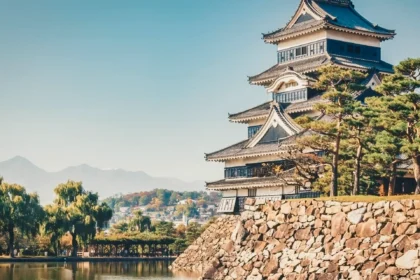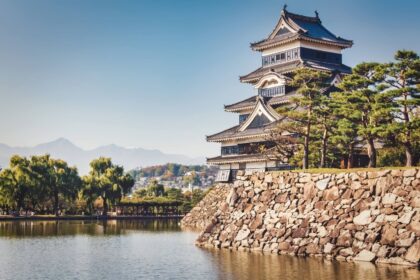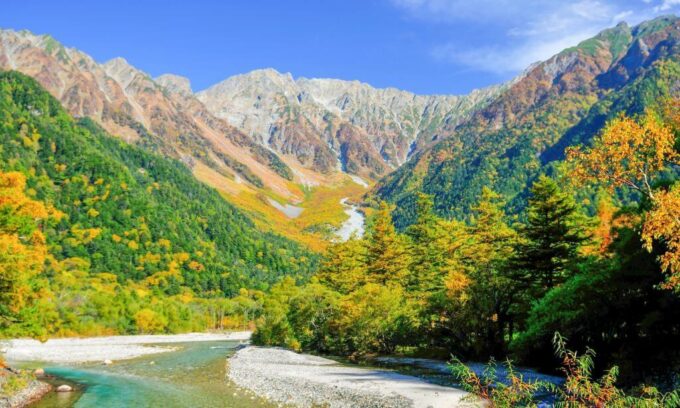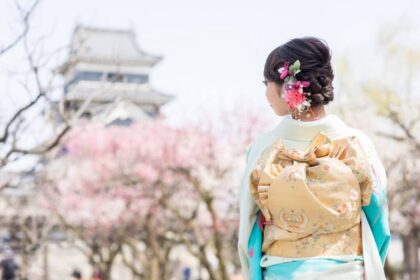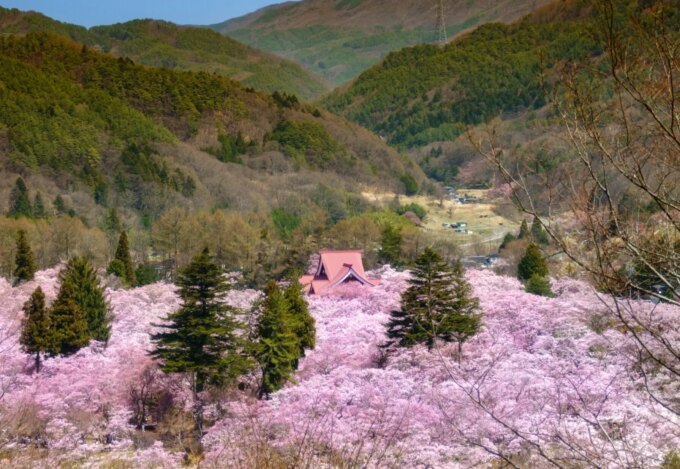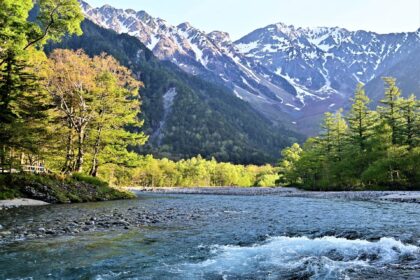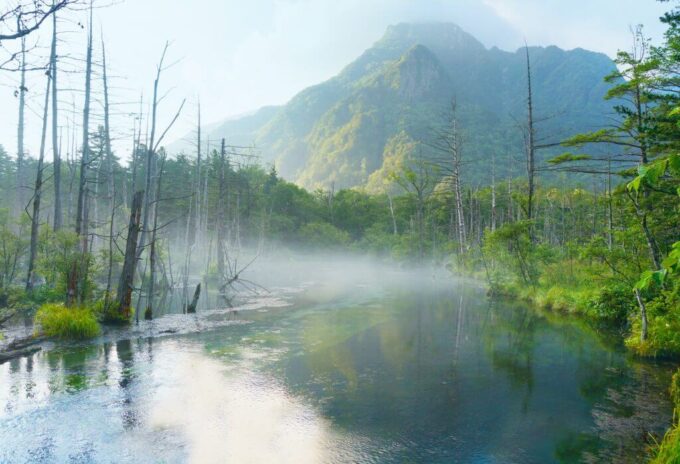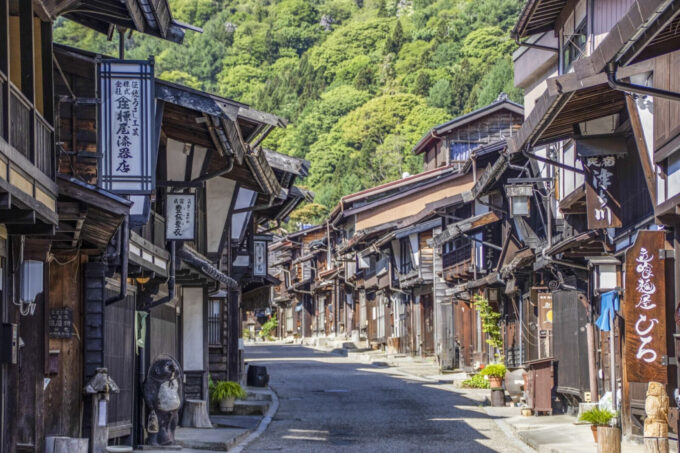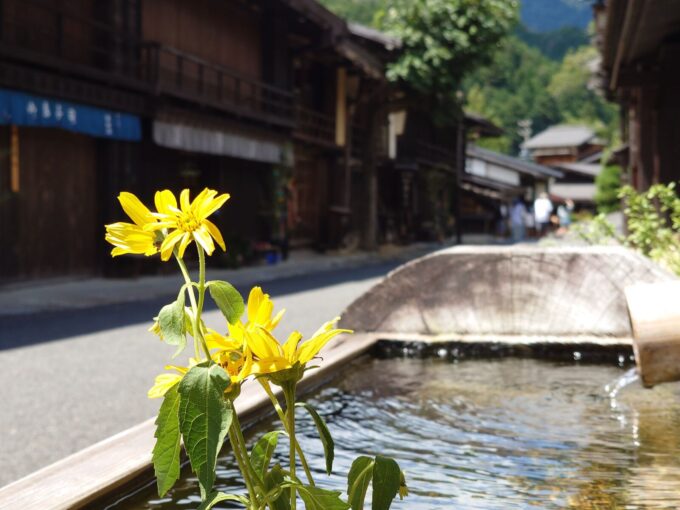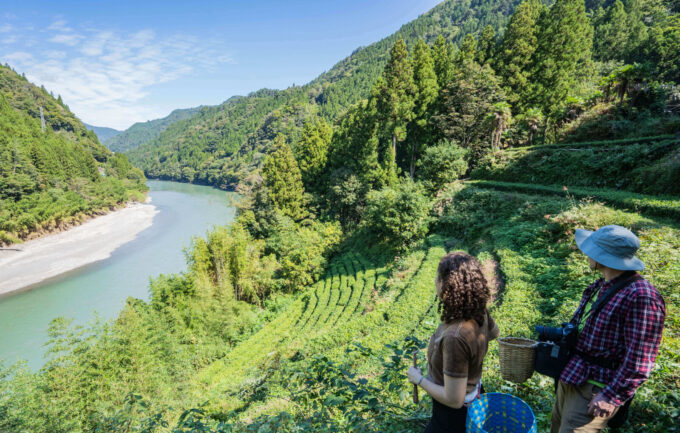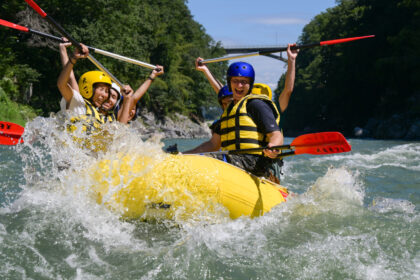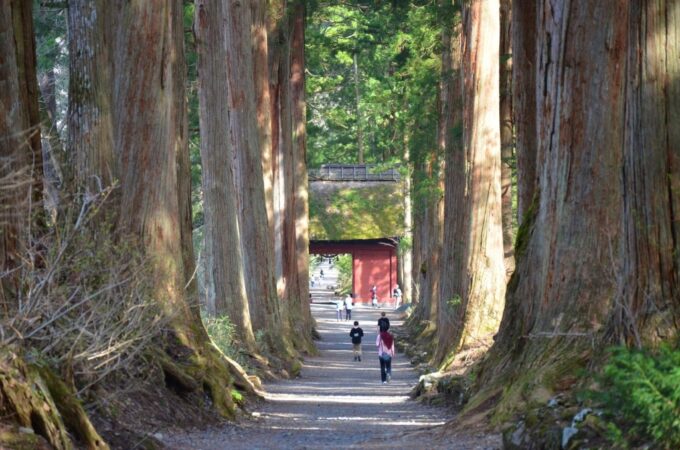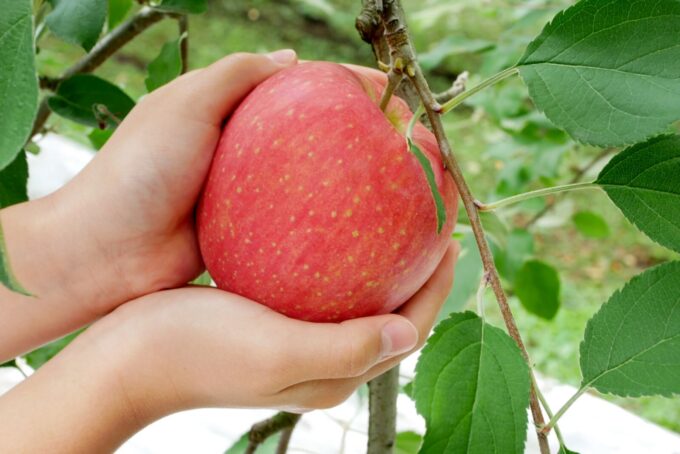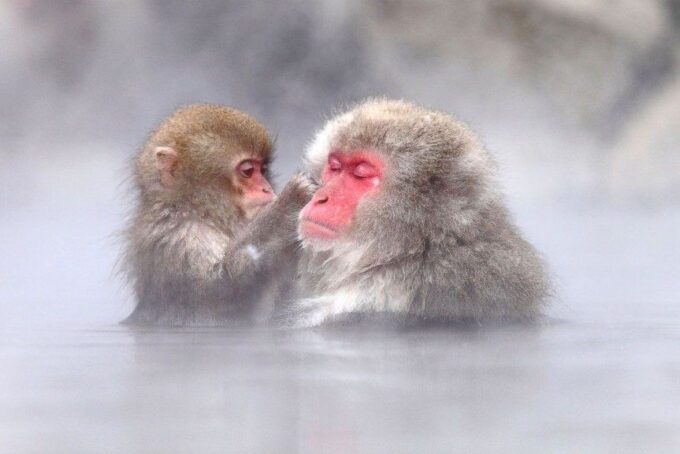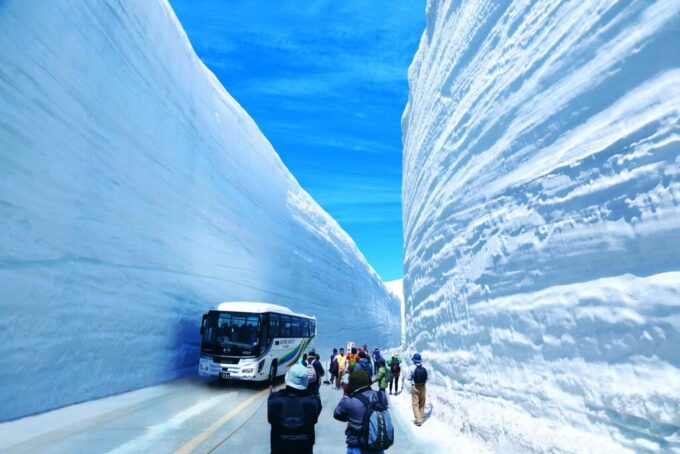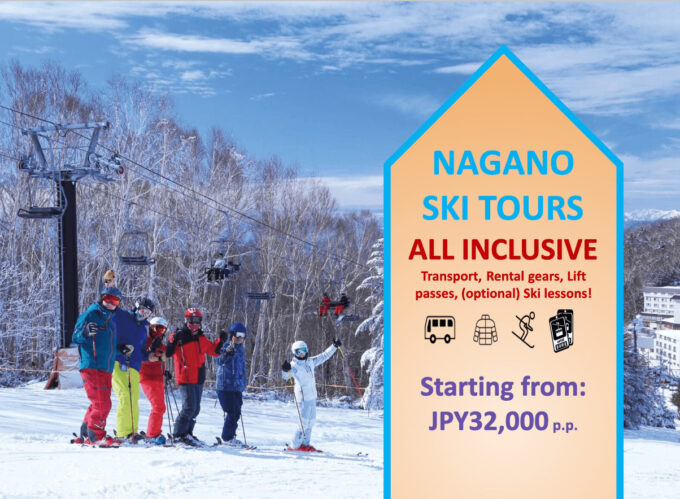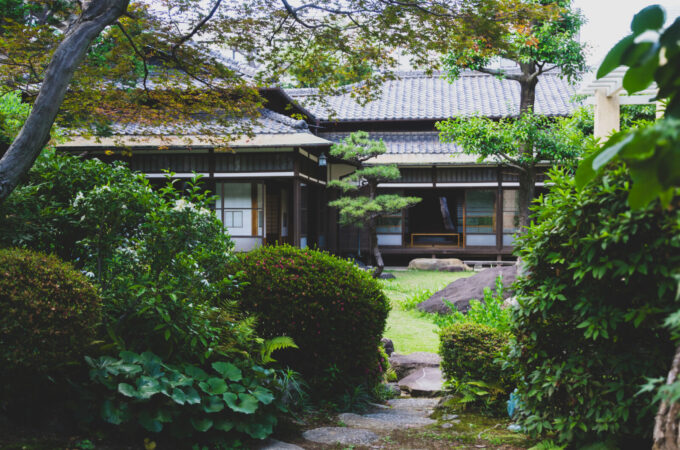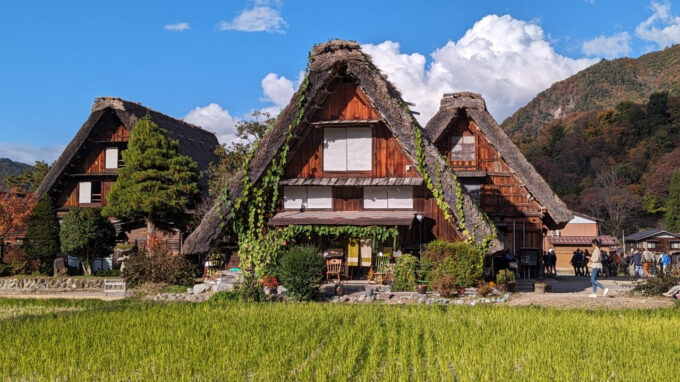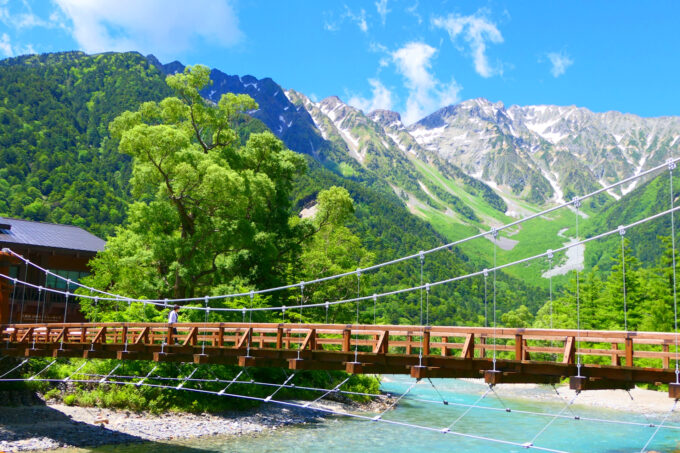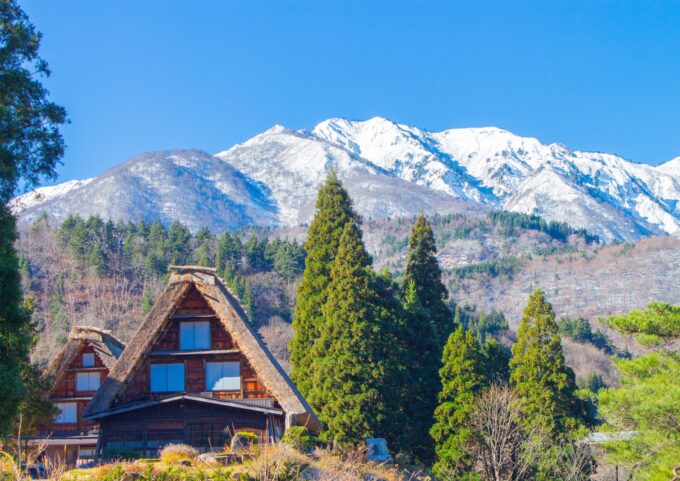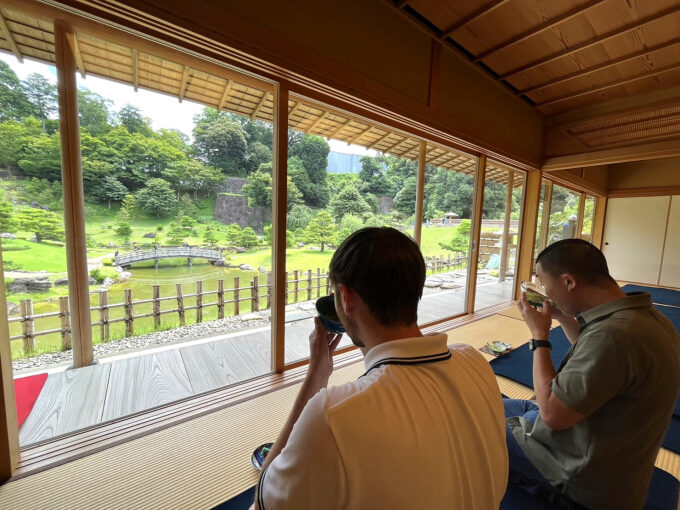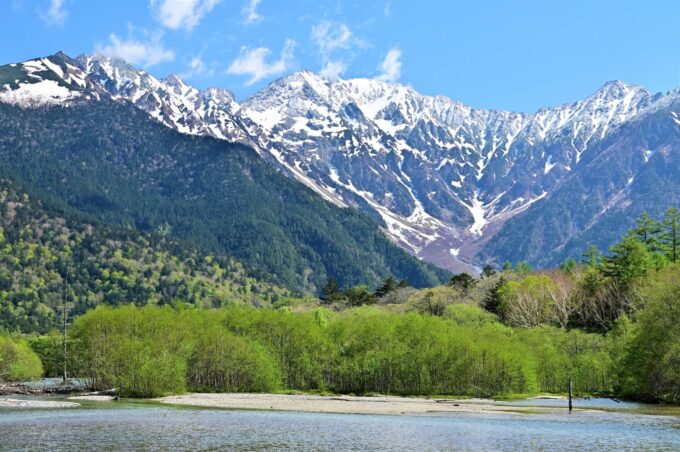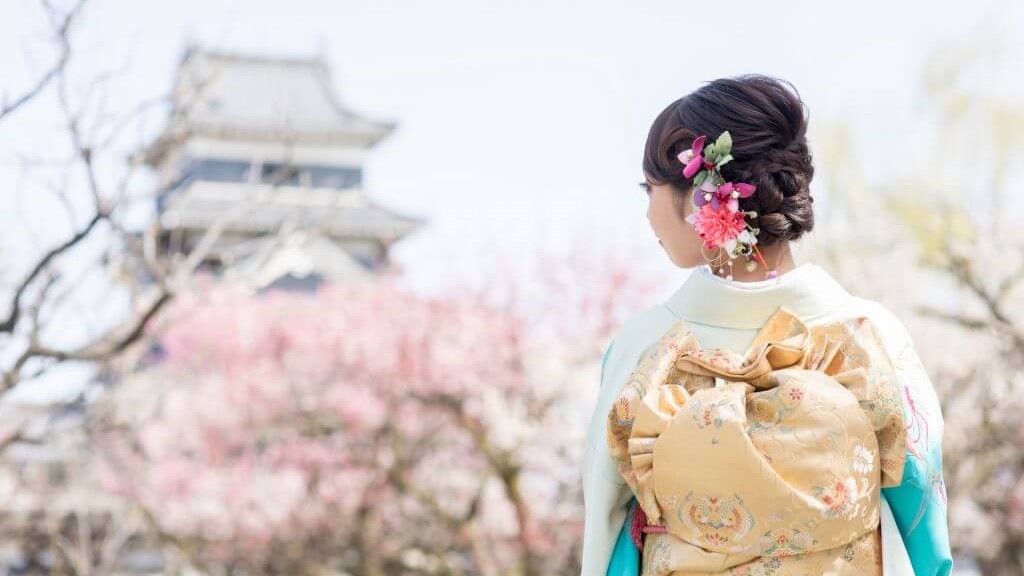
Located in the shadow the North Japan Alps, Matsumoto is a small historic city best-known for its castle. As a registered National Treasure, Matsumoto Castle is without doubt the beacon that draws visitors to the city but once here, you’ll discover a lovely little town with plenty to keep you entertained for a day or two. On this page you will find the following information:
Once a wealthy merchant town, the people of Matsumoto are proud of their city's heritage and have actively tried to retain much of its historic character. Local intervention saved the now iconic castle from demolition while serving to also retain much of the historic Nawate-Dori and Nakamachi precincts; former merchant areas that now house many shops selling Matsumoto's heralded 'mingei' (folkcraft) and furniture. From that heritage, a thriving and youthful city has developed with Matsumoto now boasting many great boutique shops, cafes, museums, galleries and restaurants.
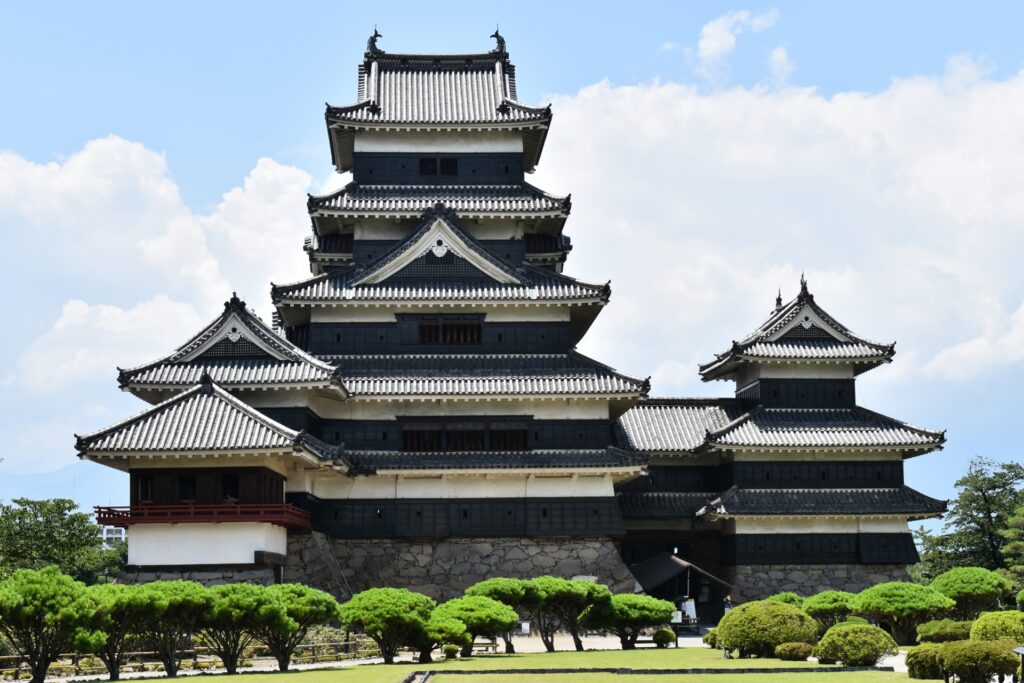
From Matsumoto you also have easy access to the beautiful rural enclave of Azumino or explore the mountains of the North Japan Alps – Japan’s highest mountain range – including Norikura Kogen, Kamikochi and onto the historic old town of Takayama. To the south of Matsumoto, the Kiso Ontake Mountain and Kiso Valley including the historic Nakasendo Trail are within easy reach; while the Limited Express 'Shinano' – running from Nagoya to Nagano via Matsumoto – connects visitors to Nagano City, the Jigokudani Monkey Park and the region’s many ski resorts.
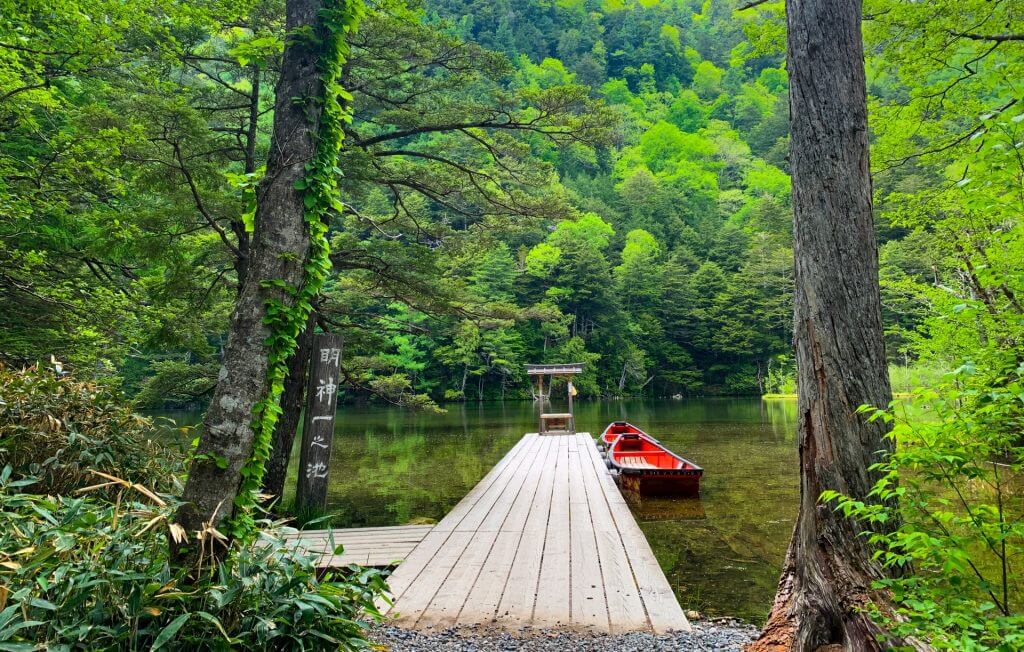
Based in Nagano and operating all year round, we are the region’s No.1 tour and charter operator. Our group tours run throughout the year, including multiple tours operating to and from Matsumoto Station. We can also arrange private tours and charters to any destinations in the region, and as a registered travel agent, we can package transport, accommodation and more together so you save and get the most out of your time in Matsumoto and beyond – scroll to the bottom for details.
WHERE IS MATSUMOTO?
Matsumoto is the second largest city in Nagano Prefecture - behind Nagano City - and is located around 230KM / 3.5 hours to the north-west of Tokyo or only 70KM / 70-minutes to the south-west of Nagano City. Most famous for its iconic castle, Matsumoto lies in the valley below Japan's highest mountain range - the Hida Mountains, also called the North Alps - and is one of Japan's most liveable cities, blending a proud samurai history and 'mingei' (folk craft) culture with a thriving arts and food scene. Matsumoto Station lies in the centre of the city and is serviced by the Limited Express 'Azusa' running to Shinjuku Station in Tokyo and the Limited Express 'Shinano' running to Nagano and Nagoya. Nearby the city, Matsumoto Airport is an increasingly popular point of arrival for international visitors.
25 BEST THINGS TO DO AROUND MATSUMOTO
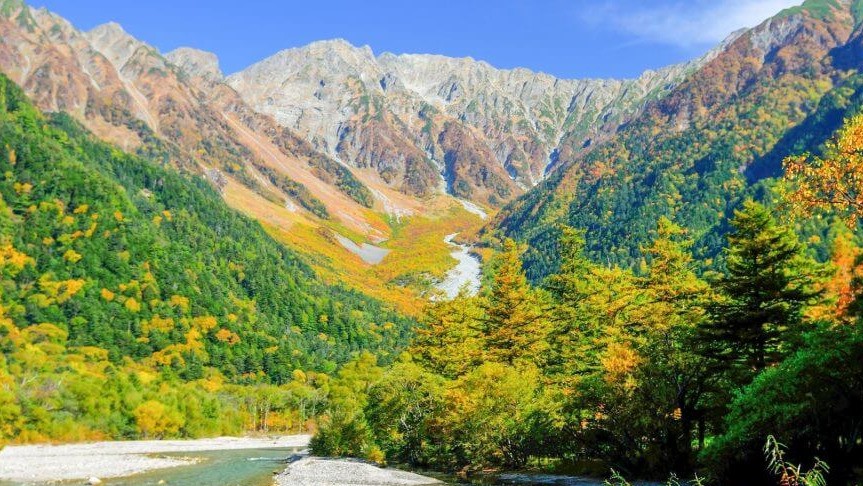

Many if not most visitors heading to Matsumoto are drawn by its iconic castle, one of the few remaining original castles in Japan and a registered National Treasure. Once in Matsumoto, visitors discover a historic and pleasant city with a thriving folk craft, art and dining scene. So while it's castle that might attract people to visit, it's everything else that the city has to offer that makes them want to stay. Matsumoto is also a convenient launching point from where to dive deeper into Central Japan including Mount Norikura, Kamikochi and onto Takayama in the west, the rural enclave of Azumino and ski resorts of Hakuba to the north, or toward Nagano City and the snow monkeys in the east. Here's our suggestion of the best things on offer when visiting Matsumoto:
1 / MATSUMOTO CASTLE / all year round
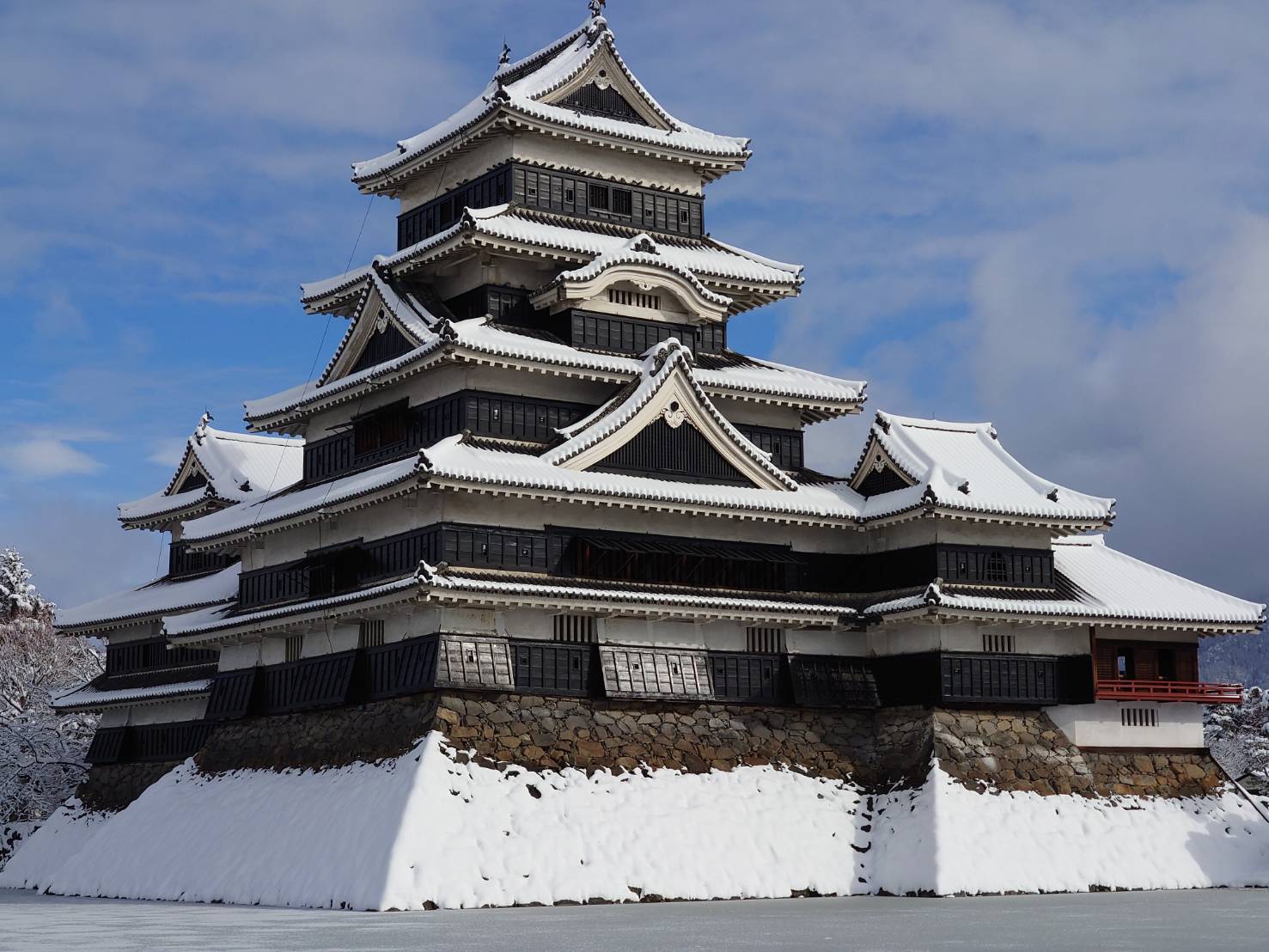
You absolutely cannot come to Matsumoto without seeing Matsumoto Castle. As a registered National Treasure, the castle is one of the oldest remaining original (not rebuilt) castles in the country. Construction was completed in the late 1500s during the Warring States period of Japan, thus it was built as a fortress ready for battle. You can explore the inside of the castle, climbing all the way to the top of the castle tower for a great view of the city. You will also find artefacts including old cannons, guns, swords, and more on display inside. Matsumoto Castle is still surrounded by part of its original moat and a nice garden with plenty of picture-perfect spots.
2 / NAWATE-DORI & NAKAMACHI / all year round
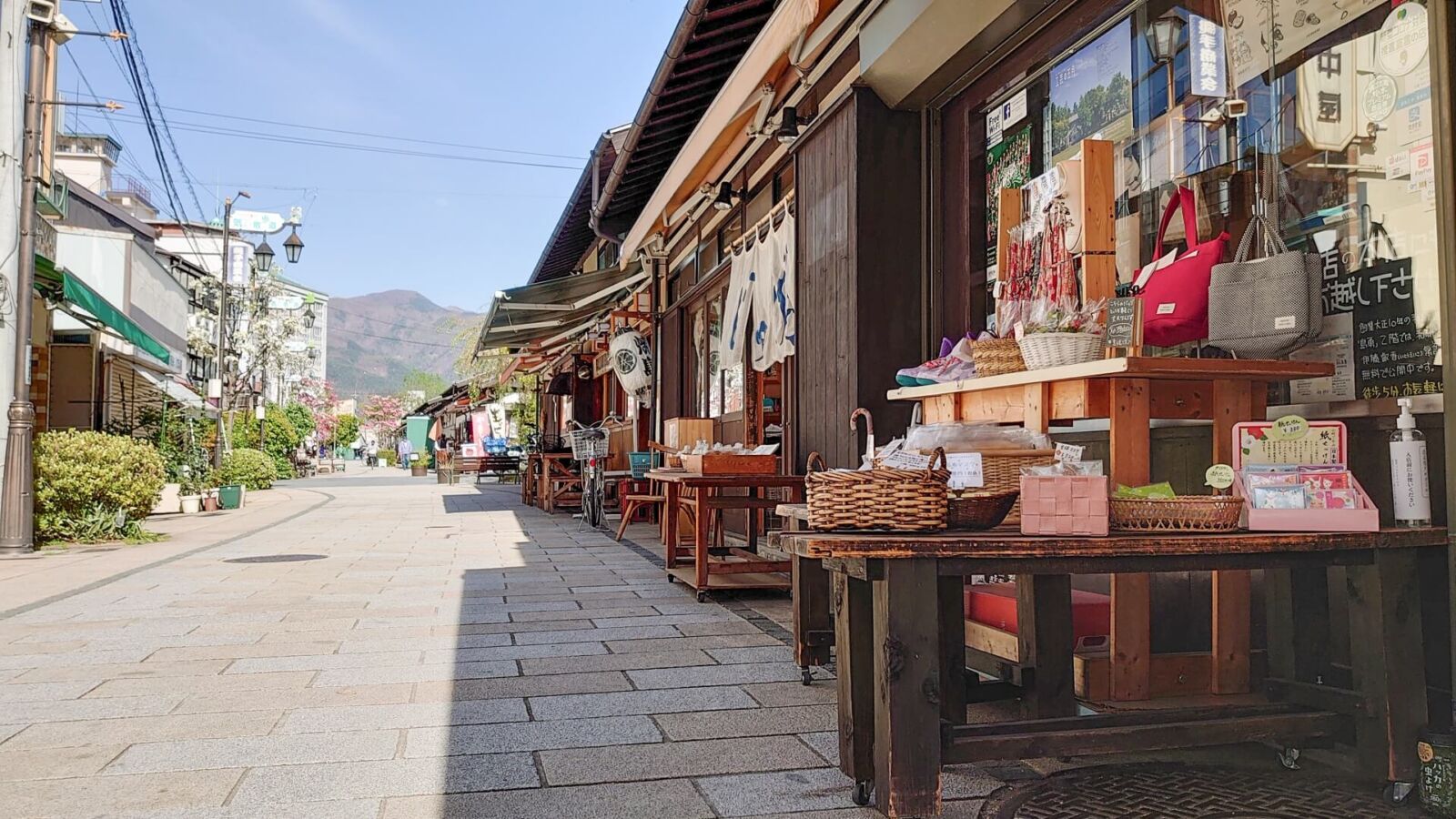
Located between Matsumoto Station and the castle, the popular and historic shopping streets of Nawate and Nakamachi are well-worth strolling. Nawate-Dori or Nawate Street is a fun shopping area reminiscent of Edo Period shopping alley full of vendors selling food, knick-knacks antiques. Approximately 5-minutes walk from the castle, this small but cute precinct is one of the city’s most charming little discoveries. The street boasts some seriously good food vendors selling ‘soba’ and ‘udon’, ‘taiyaki’ and ‘senbei’ and is well-worth a stroll – especially for those frog-fans amongst us or if you’re searching for a unique souvenir or antique while in Japan.
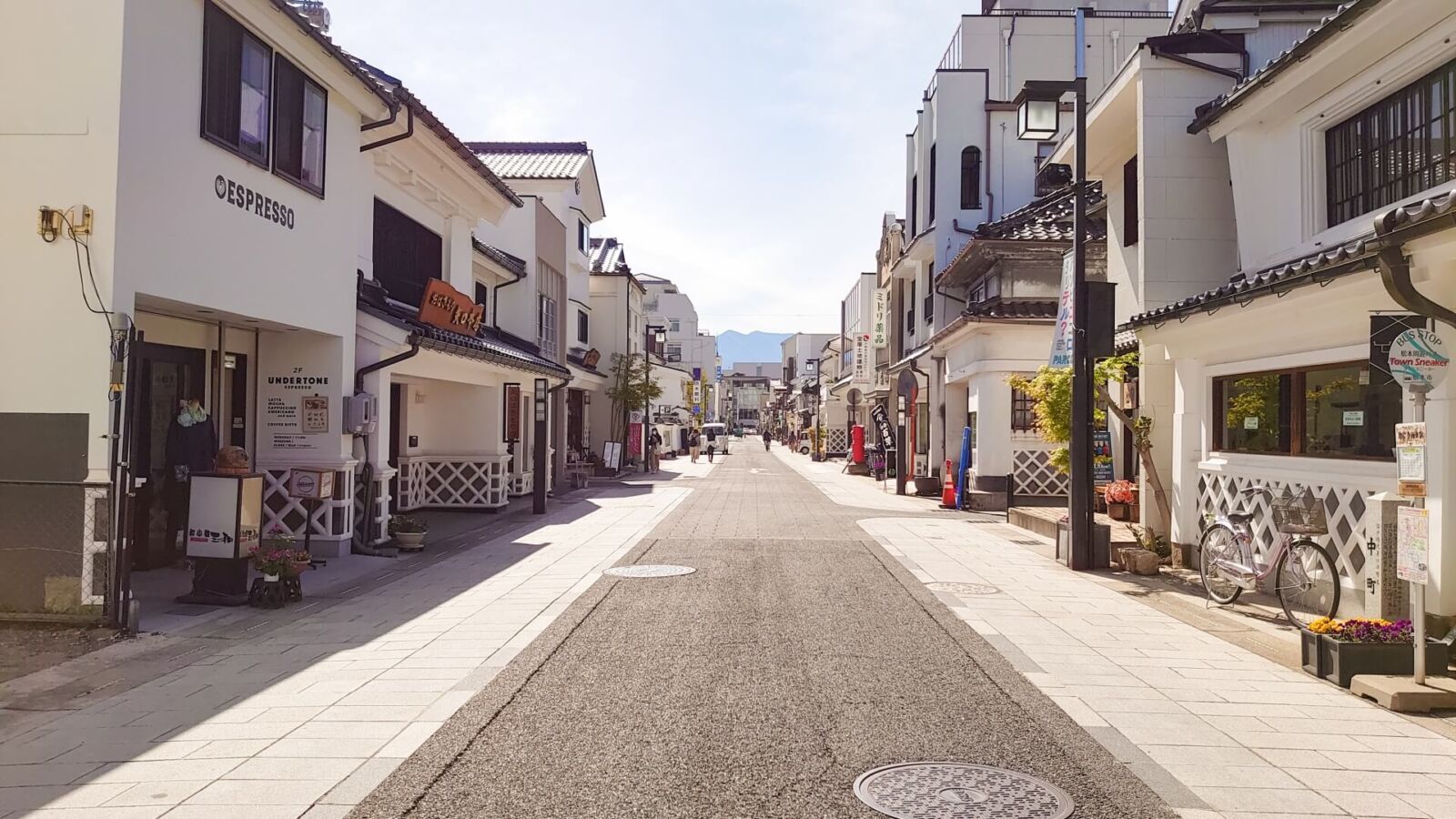
Directly across the Metoba River from Nawate Street is Nakamichi Street, a former merchant area characterized by its traditional storehouses called ‘kura’ that flank each side of the street. The distinctive white and black, criss-crossed pattern decorates the bottom half of the buildings, imbuing the street scene with a unique and pleasing character.
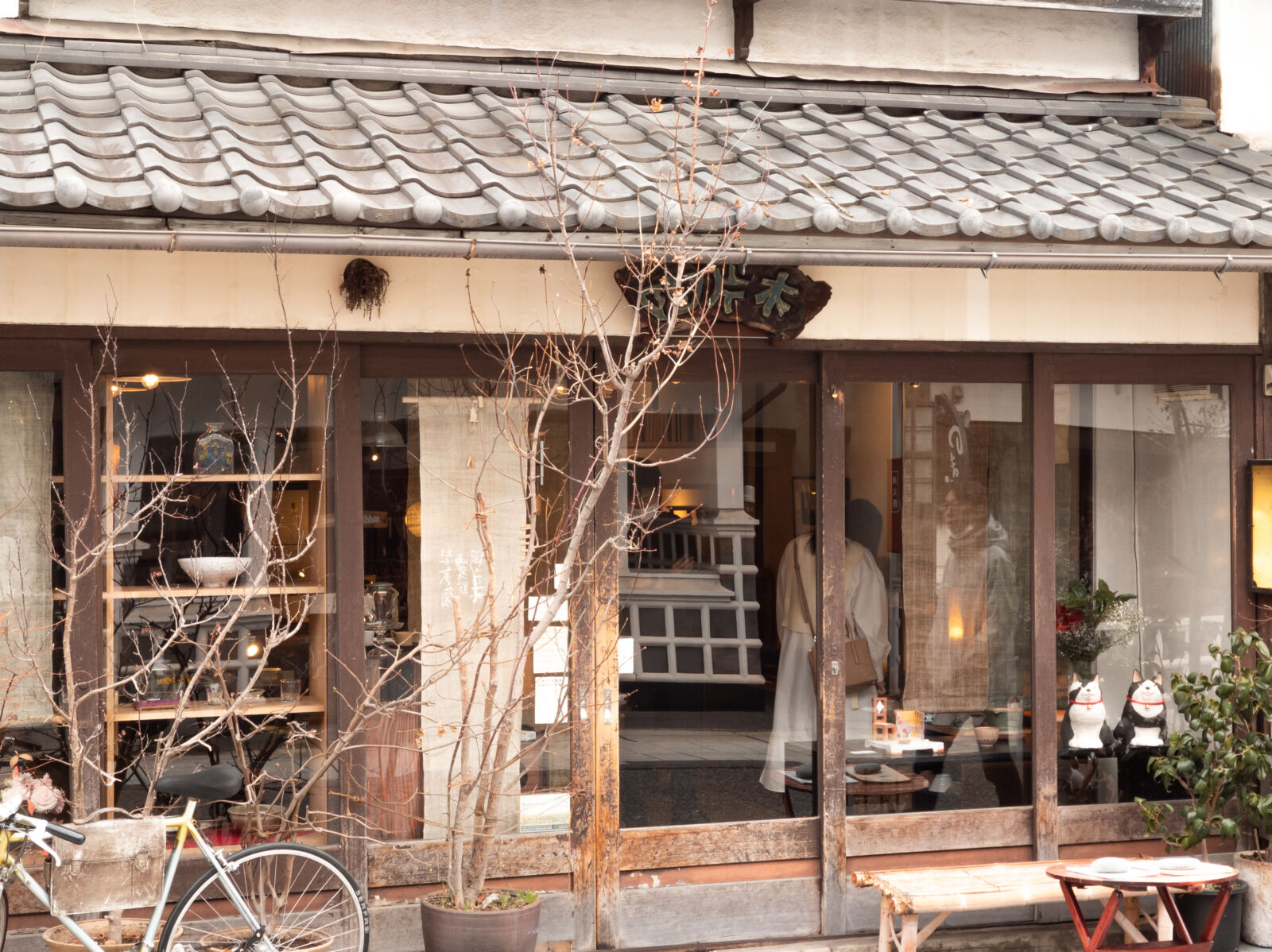
The street is known for its many stores selling traditional crafts including lacquerware, pottery and woodcraft. Several restaurants, cafes, confectionaries, good coffee houses and Matsumoto Beer Brewery’s small taproom make Nakamachi and the surrounding side streets worth exploring.
3 / MATSUMOTO CITY MUSEUM OF ART inc. KUSAMA YAYOI COLLECTION / all year round
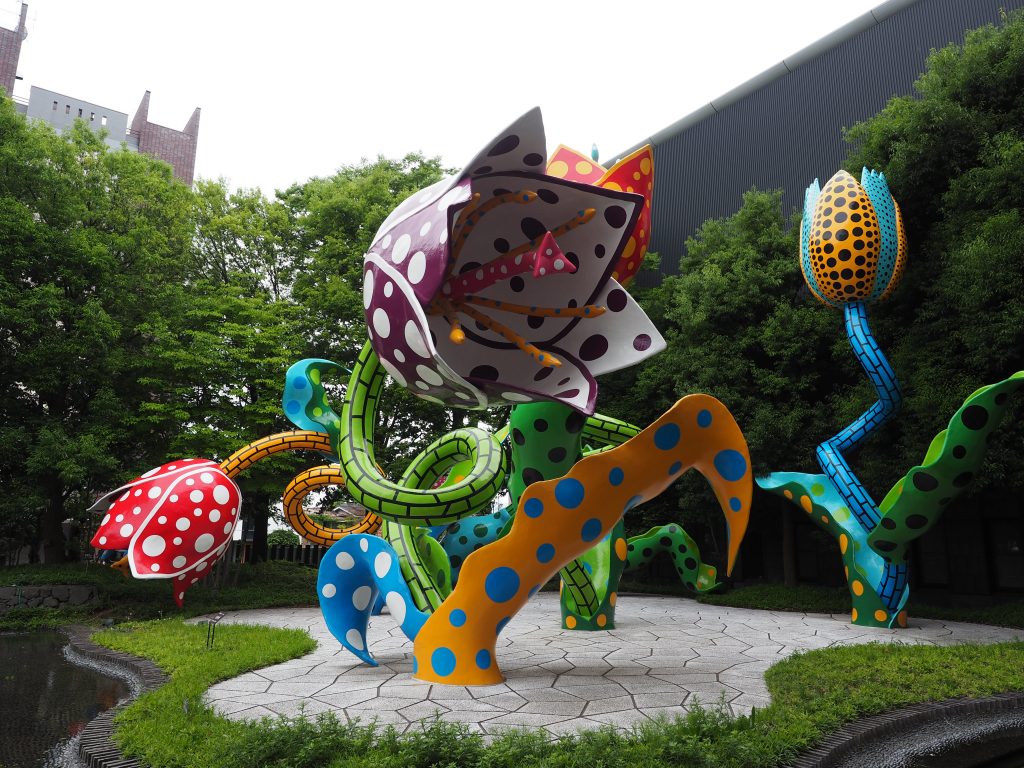
The Matsumoto City Museum of Art is best known for its permanent exhibition of artwork by the world-famous Japanese artist Yayoi Kusama who was born in Matsumoto. In fact, before you even step foot inside, you will be greeted by a colorful outdoor sculpture created by Kusama. The museum also features an exhibit of works by local artists and visiting exhibitions of other Japanese and international artists. But for international visitors, it is Kusama’s collection which is likely to hold the most interest. Although classically trained, Kusama’s defining style is heavily-influenced avant-garde, pop and conceptual art – of which, she is now a celebrated and pioneering artist. While you might not know her name, there’s a good chance you will recognize her artwork which is bright, playful and bold and uplifting.
4 / SHOPPING, CAFES & RESTAURANTS / all year round
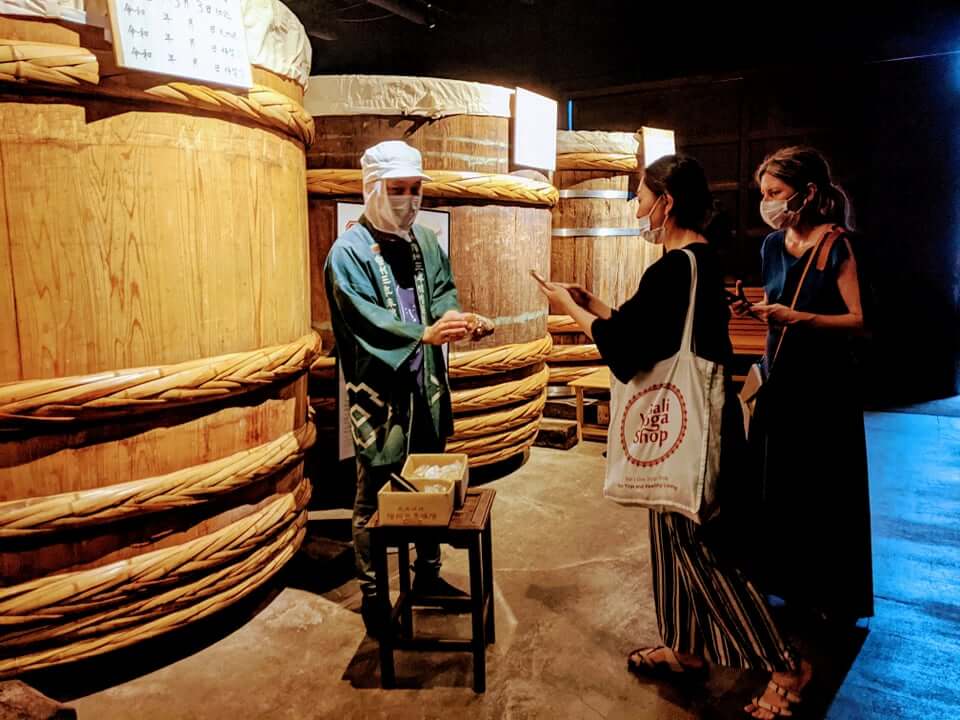
Though known for its historic importance, Matsumoto is also home to a burgeoning arts, music and food scene. Spurred by the international fame of Yayoi Kusama and the ‘Suzuki Method’ – a revolutionary music curriculum – both of which call Matsumoto home, the city’s profile as a creative hub is growing with many fantastic initiatives and independent stores opening-up each year. It’s well worth grabbing a coffee and just wandering the streets where you’re certain to find another great café, bookstore, independent designer, craft beer brewery or any one of the city’s many fantastic restaurants. While the castle demands that you visit, it’s the many unexpected discoveries that will keep you in Matsumoto!
ENJOY THE LOCAL BEER
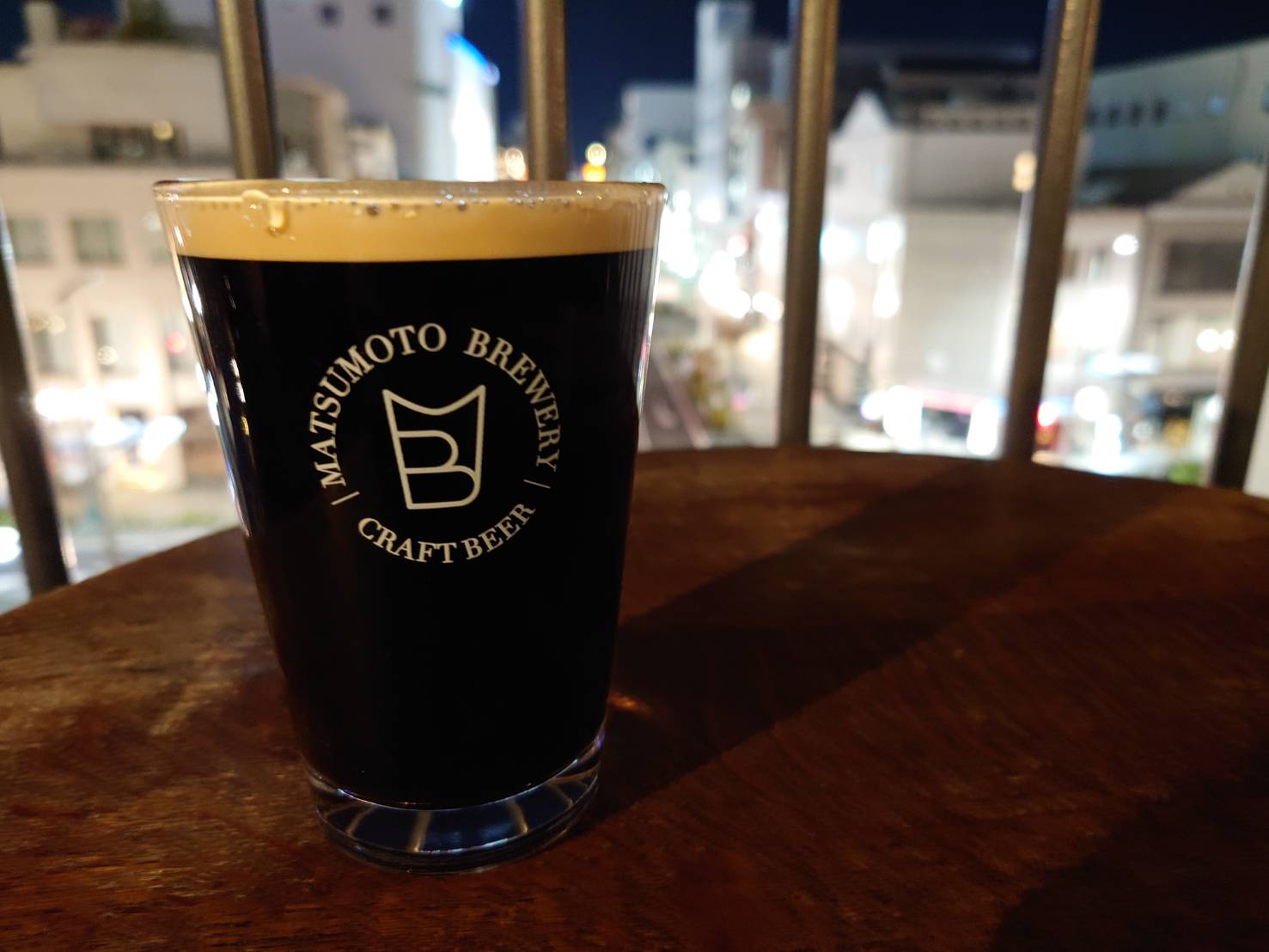
Over the past couple of years, Matsumoto has become a craft beer hotspot. There are now two breweries within the city: Matsumoto Brewery and Bacca Brewery, both of which are located within walking distance from Matsumoto Station. Bacca Brewery is a nano-brewery that makes their beer right on the premises—in fact, you can see the brewing room right from the counter. Both breweries make top quality beers, often mixing in locally grown fruits, grains, hops, and other ingredients to make truly unique flavors. Matsumoto Brewery on the other hand has two tap rooms, one located in the Shinmai Media Garden Building other in Nakamachi. There are a number of other bars and restaurants serving craft beer to be found around the city as well, so beer-lovers should keep an eye out!
SHINMAI MEDIA GARDEN
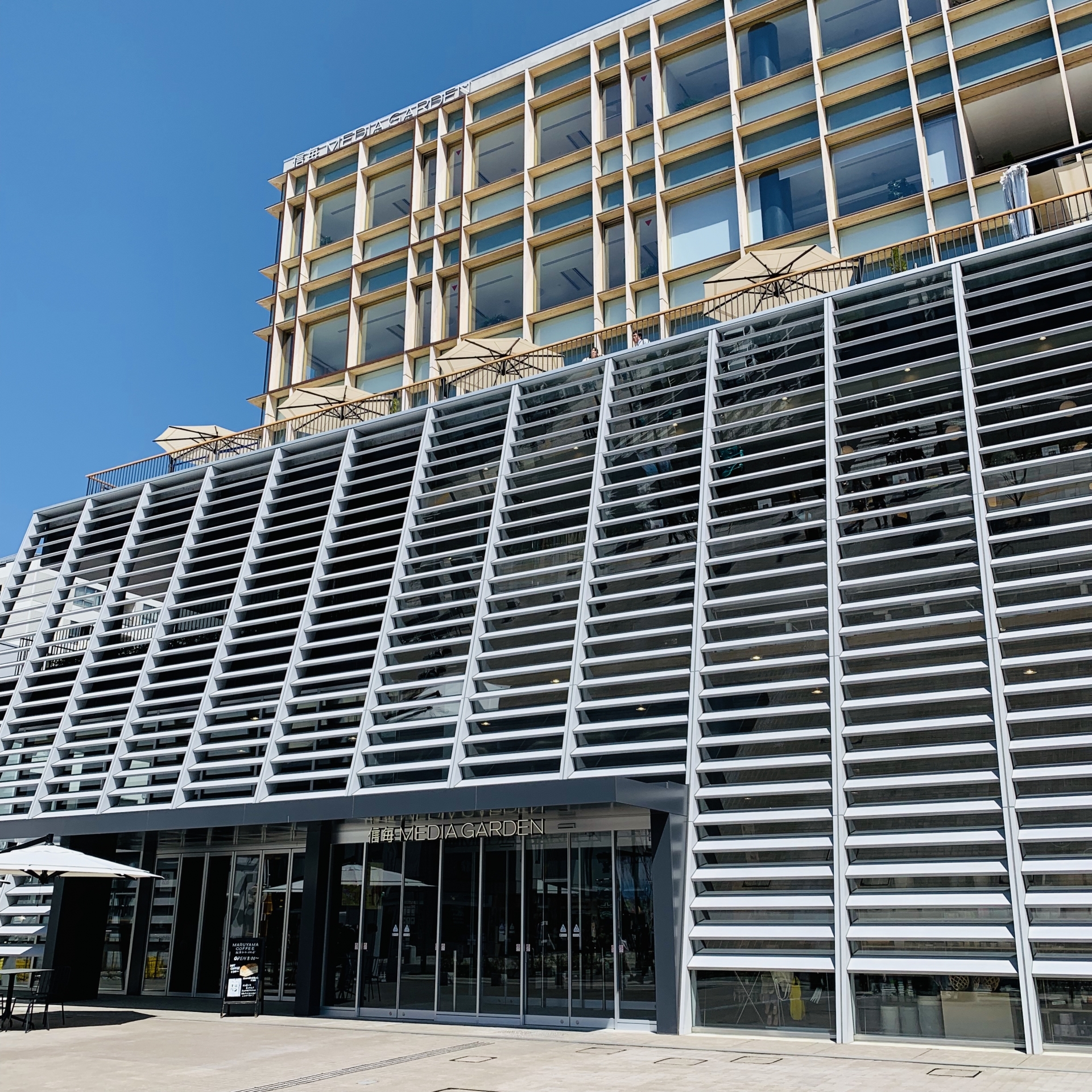
Opened in 2018 Shinmai Media Garden is a multi-story shopping, restaurant and office building in the heart of Matsumoto. There are 11 shops and restaurants in the building, with the Matsumoto Brewery Tap Room located on the third floor. With multiple beers on tap along with a menu of tasty snacks including ‘gyoza’ (dumplings), and both indoor and outdoor seating on the terrace, enjoying a cold beer at the end of the day is great way to cap-off your exploration of the city as look down one of the main thoroughfares toward the North Alps.
RESTAURANTS & NIGHTLIFE
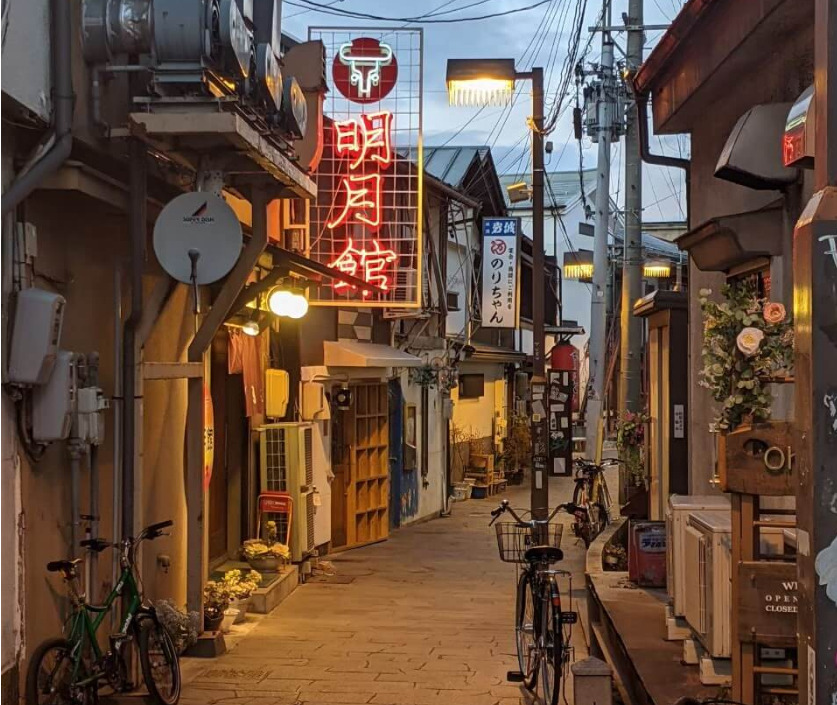
In the central area around the castle, you can find a wonderful variety of gastronomic delights ranging from traditional Japanese izakaya and long-standing soba shops to high-class French and Italian restaurants and modern eateries and diners run by young, hip owners. Some great places to check out are the Source Diner, Onjaku, Hikariya, BUN, Miyo Shokudo, Fukazake, Moriyoshi, Itoya, and almost any soba shop in town, but the list is practically endless. Looking for some traditional fare? Why not try…
ISHII MISO BREWERY
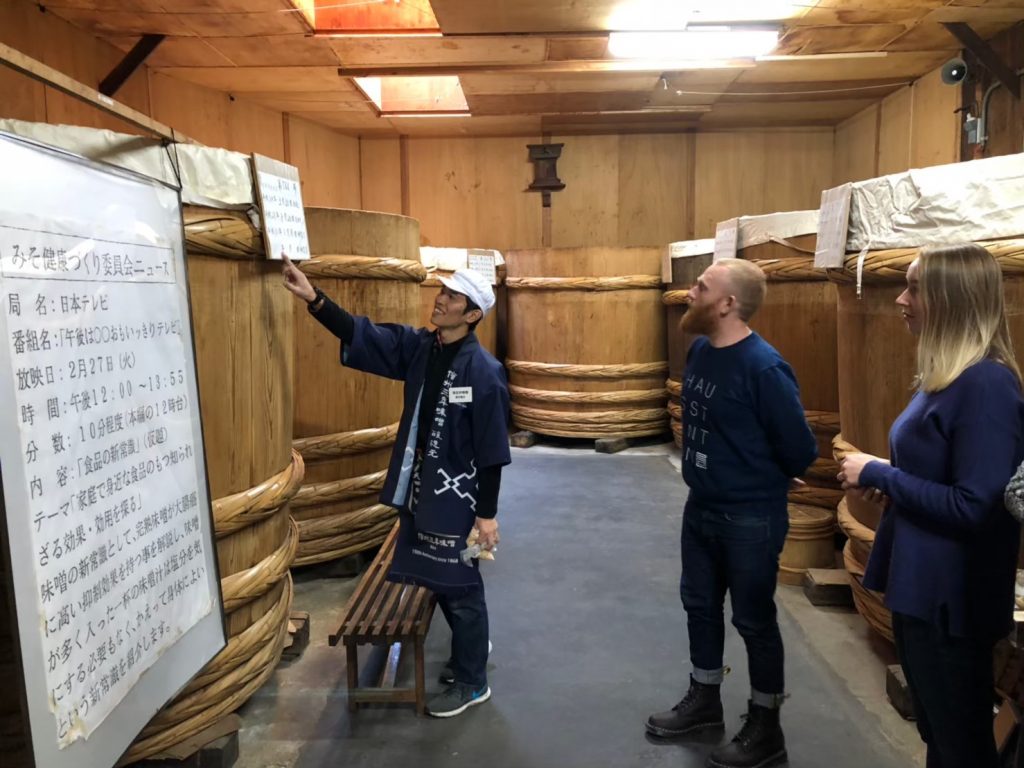
As Japan’s largest producer of 'miso', Nagano is synonymous with the tasty paste and there is no better place to it than Ishii Miso Brewery in Matsumoto. One of the few remaining breweries that still crafts its miso in the traditional way using wooden barrels and without use of modern methods to quicken the fermentation process, Ishii Miso produces some of the region’s best miso. You can sample and buy miso at the breweries shop, eat a miso-based lunch at their restaurant and even tour the brewery, with informative tours available in both English and Japanese. No advanced booking is needed for a tour. Simply enquire when you arrive and one of their friendly staff will assist you.
5 / MATSUMOTO'S CULTURAL EXPERIENCES / all year round
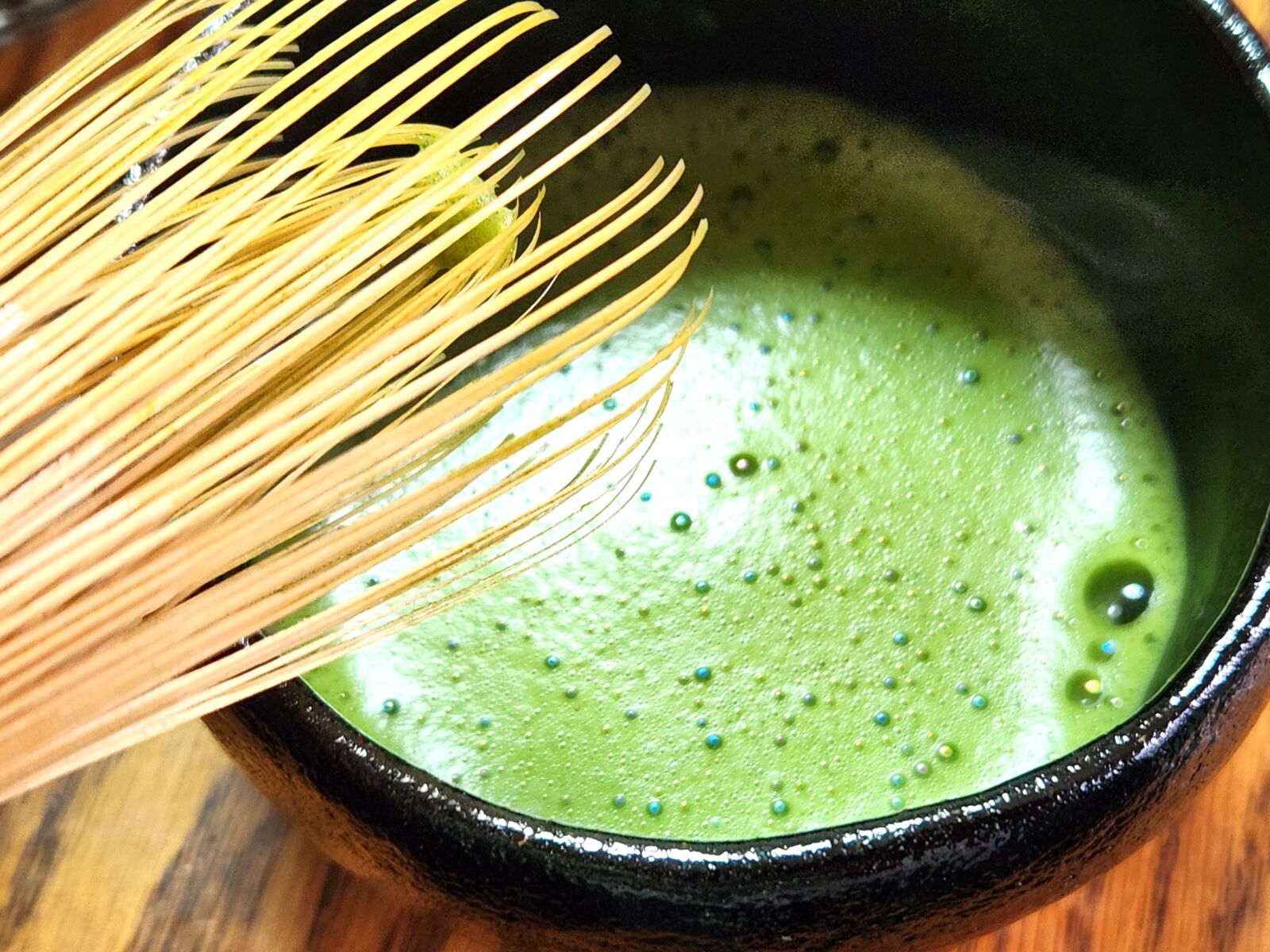
Matsumoto was once the capital of Matsumoto Domain, with the castle in the city serving as the government headquarters and the residence of the domain's Feudal Lord. Although Nagano City is now the capital of Nagano Prefecture (created through a merger of multiple former feudal domains), it is rather new as a city and the previous dominance of Matsumoto in the region is still on display in its large number of surviving traditional arts and crafts.
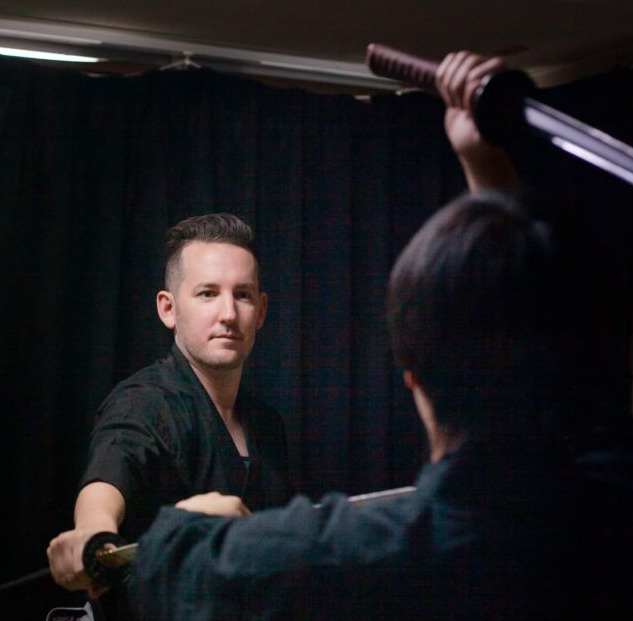
With centuries as a center of Samurai power, it is no surprise that Matsumoto has some fascinating samurai traditions based around martial arts. But that isn't all there is; taiko drums, tea ceremony, doll making, and music of all sorts are some of the past traditions which you can still experience in Matsumoto. A good place to learn about the origin of these arts is the Matsumoto City Museum, located only a few minutes walk from the castle. English descriptions are written on many of the displays, making it easy to understand what each display item is and what it represents. If you are interested in joining a cultural experience, please inquire with us through the link below.
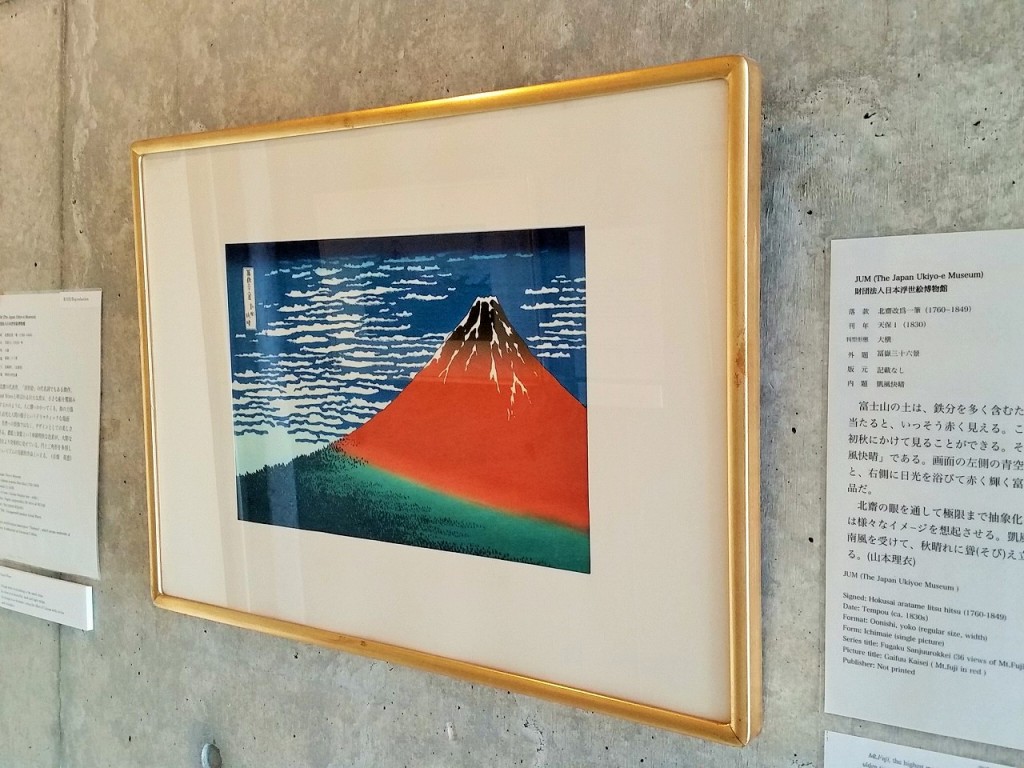
The city is also home to a museum promoting one of Japan's most famous art styles - The Japan Ukiyo-E Museum. This small museum exhibits one of the world’s largest collections of 'ukiyo-e' woodblock prints, including those made by the famous artist Hokusai. The collection is not displayed in its entirety, but rather the prints on display are rotated in themed-exhibitions throughout the year. The museum is located outside of the city center but can be easily accessed by train, bus, or taxi. A must-see for those interested in Japanese woodblock prints.
6 / CHERRRY BLOSSOMS OF MATSUMOTO / late-March to April
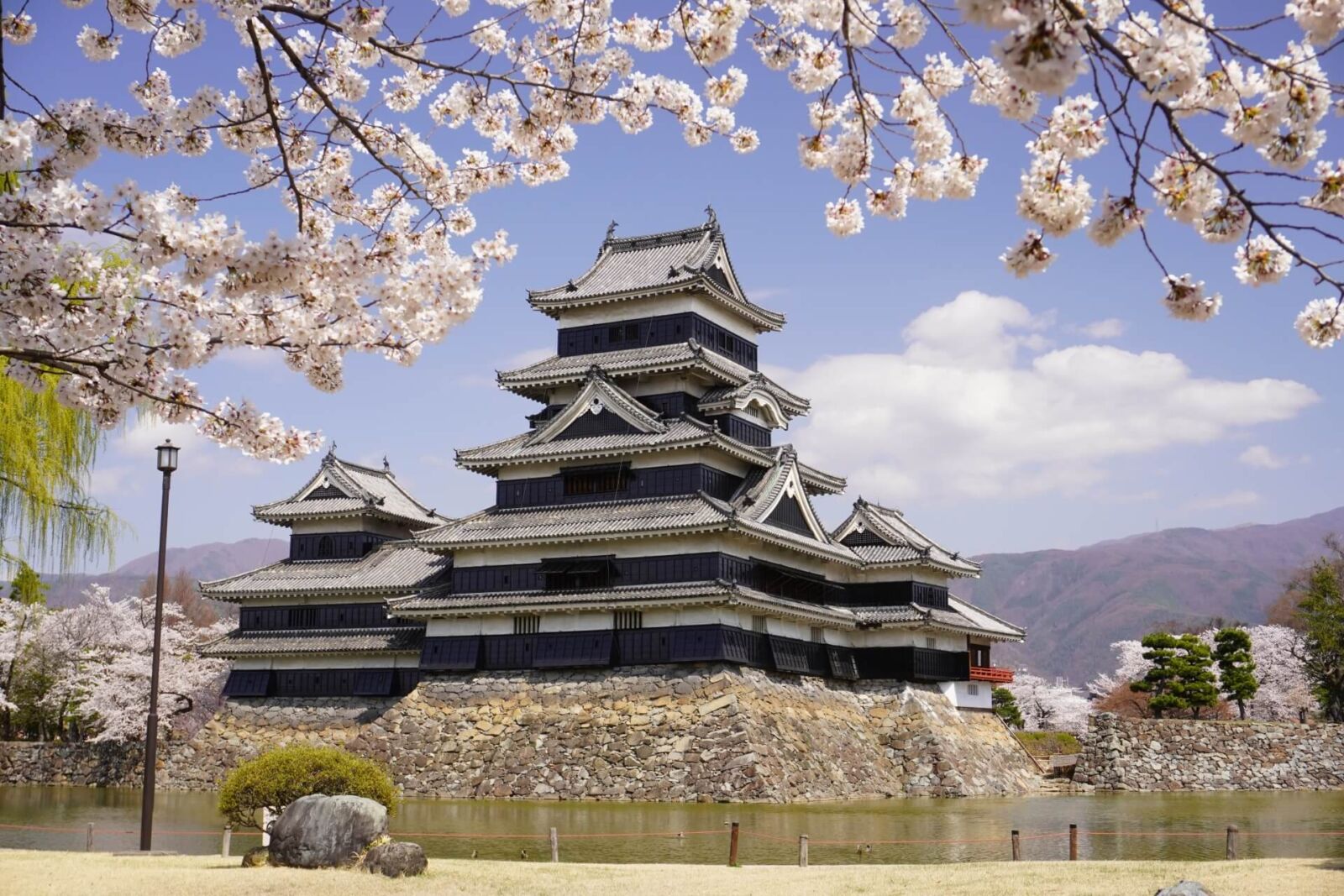
Known as ‘sakura’ in Japan, the blossoms are viewed as symbolic of the fleeting beauty and fragility of life itself and Japanese look forward to ‘hanami’ (flower-viewing) each spring. Matsumoto is a great place to see the blossoms. Usually blooming in early-April, the area in and around the castle has many trees which are illuminated at night for the local sakura festival - see below for details. Our ‘Cherry Blossoms’ page introduces everything you need to know about the importance of the flowers and where to find them in Nagano.
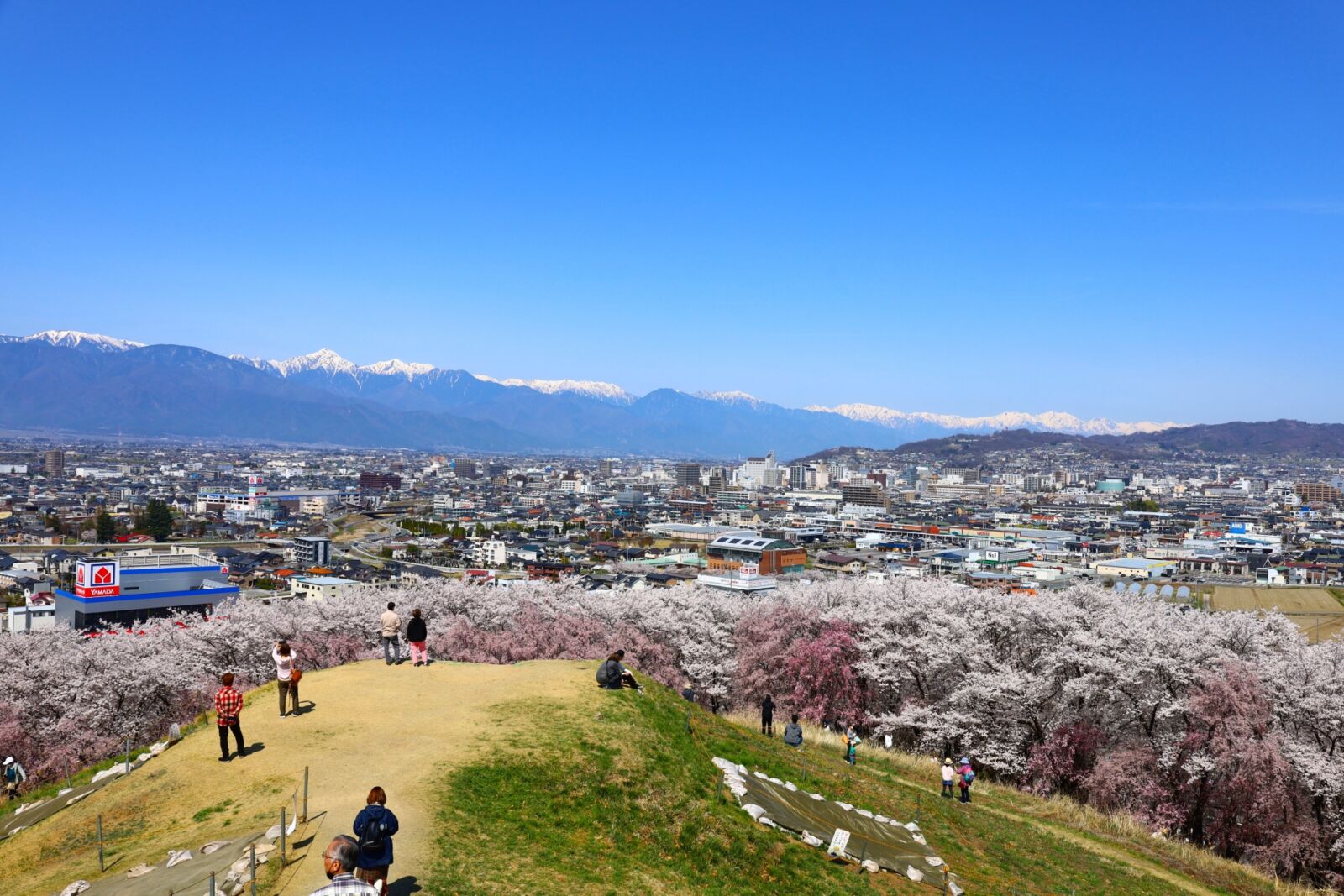
Another great place in the city to see the pink flowers in their full glory is the Koboyama Kofun, the tomb of an ancient king located in the southern part of Matsumoto City. Built in the shape of a keyhole out of rocks and now covered in soil and cherry blossom trees, it is one of the oldest tombs of its kind in eastern Japan. It boasts great views over the Northern Alps, and when the cherry blossoms are in full bloom makes for one of Matsumoto's most iconic scenes.
(Spring Only) Private 1-Day Tour: Cherry Blossoms of Takato Castle Park
- Spots:
- Pick-up:
- Drop-off:
To see Matsumoto's cherry blossoms with a private vehicle and a guide to accompany you, we recommend our above tour. While the main draw here is the Takato Castle Ruins - a famous sakura spot located south of Matsumoto - the evening portion of the tour includes a stop at Matsumoto Castle to enjoy the night time cherry blossom illumination which is held every year. You can choose to be picked up from either Nagano or Matsumoto, and can skip out on the hassle that is taking public transport to Takato from those locations.
7 / FESTIVALS OF MATSUMOTO / throughout the year
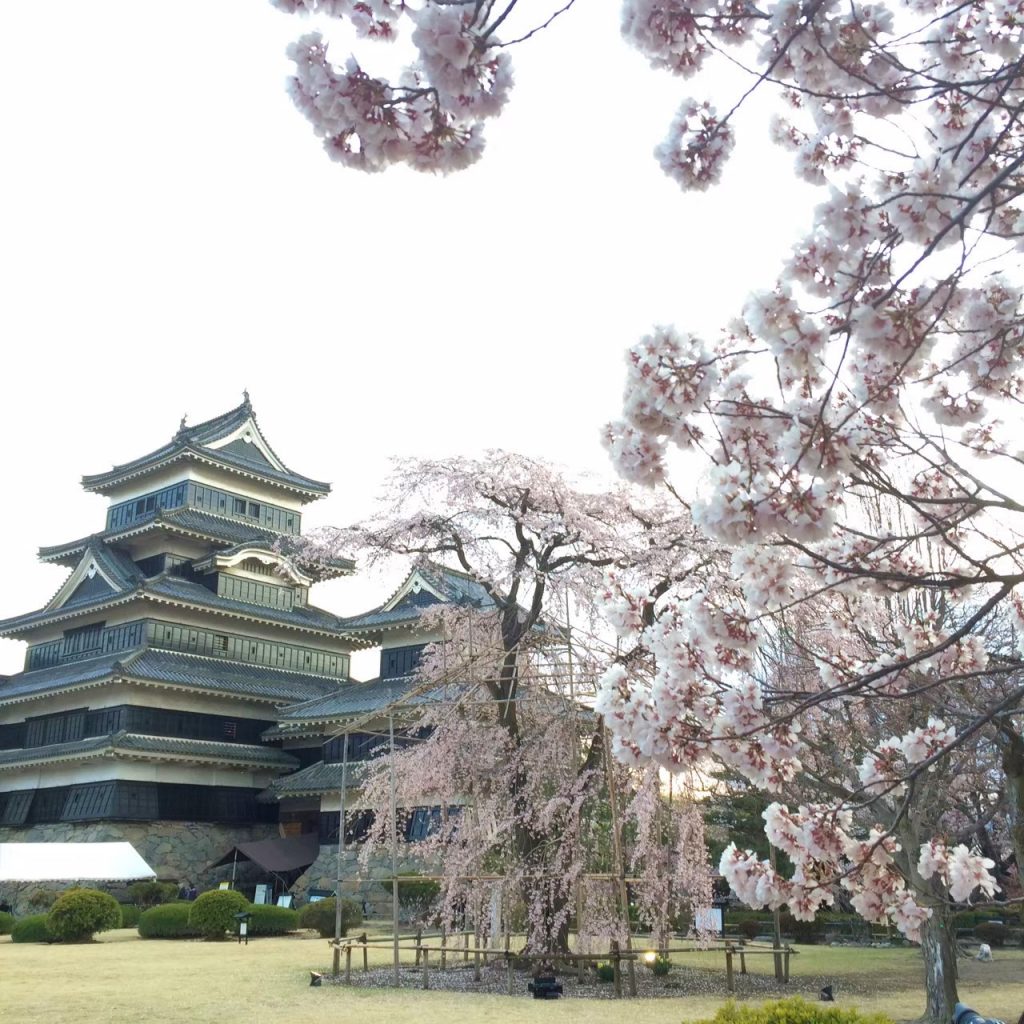
Matsumoto’s famous castle only survives due to the intervention of two notable local residents – Ishikawa Ryozo and Kobayashi Unari – who gathered public support and funds to purchase the castle and save it from destruction in the late 19th century before advocating for its restoration in the early 20th century. Thanks to them, and the efforts of many other local people, the castle survives to this day. Very much the peoples castle, it is no surprise that many of Matsumoto’s yearly festivals are centered around it. Here are just a few:
New Year Celebration / first week of January / 10:00 to 15:30 / admission is free
‘Taiko’ (traditional) drums boom as the gates open, welcoming visitors into the castle grounds to celebrate the New Year together with hot ‘amazake’ (non-alcoholic, sweet sake), traditional performances, and souvenirs available to buy.
Castle Light Show and Illumination / mid December to mid February / 18:00 – 21:00 / admission is free
The castle is illuminated beautifully in this wonderful light show. Although it will be cold outside, it is well worth it to sit and enjoy the view of the many colorful lights and images projected onto the castle.
Ice Carving Festival / late January/early February / from late evening onwards / admission is free
Against the backdrop of the illuminated castle, professional ice sculptors carve beautiful statues with the public looking on. If you want to witness the carving please ensure you are there on the evening of the first night.
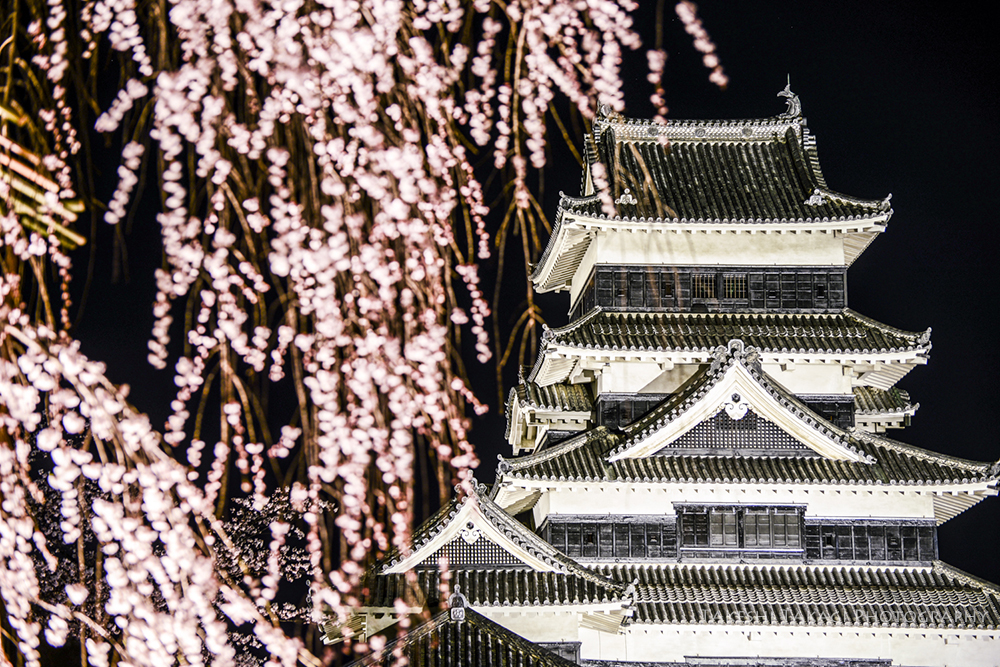
Night-time Cherry Blossom Viewing & Corridor of Lights / April / 17:30 to 21:00 /admission is free
Held each year to celebrate the bloom of Matsumoto’s cherry blossoms, the exact timing of this event is a little tricky to predict. As the weather warms and the bloom can be forecast with some level of certainty, the official beginning of the cherry blossom season will be announced and the festivals will begin three days later.
Soba Festival / early-October / 10:00 to 16:00 / admission is free
Taking place outside the castle, this is one delicious reason to head to Matsumoto. The region is famous for its ‘soba’ (buckwheat) noodles and costing only JPY500 per bowl, the festival is a great chance to sample different varieties from local producers.
Old-fashioned Gunnery Demonstration / late October and early May / times vary / admission is free
The Matsumoto Castle Gun Corps puts on an impressive display of traditional gunnery in full armor. This popular event is captivating to watch and provides a running commentary in English.
8 / DAIO WASABI FARM & AZUMINO / all year round
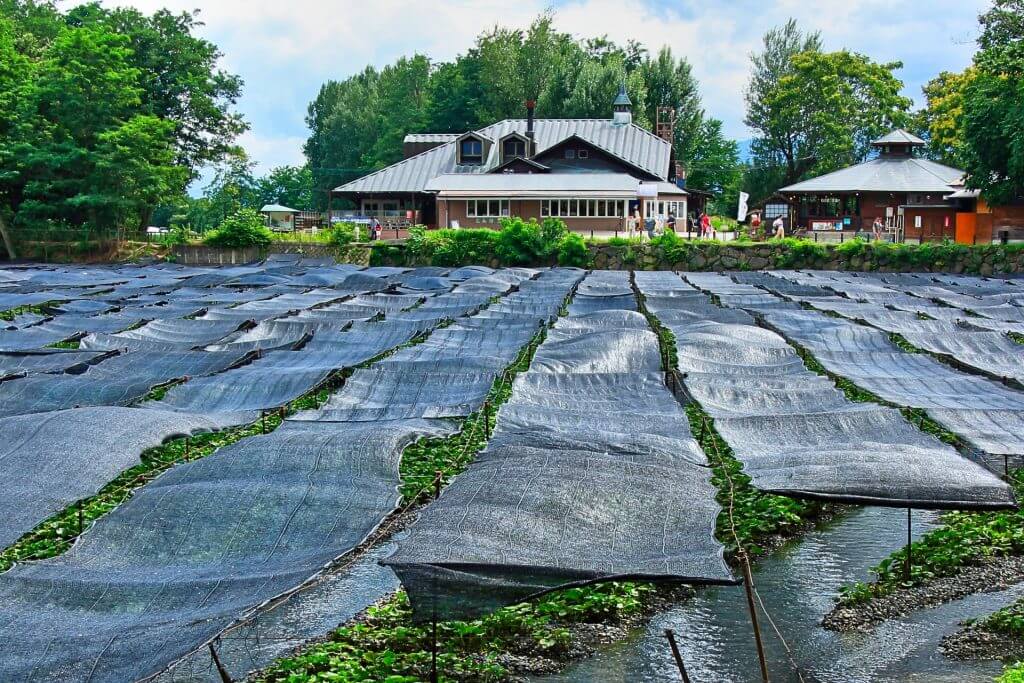
[START FROM NAGANO/MATSUMOTO] Private Wasabi-Picking Experience & Kamikochi
- Spots:
- Pick-up:
- Drop-off:
Heading outside of the city, visitors can explore Azumino's Daio Wasabi Farm - one of Japan's largest producer of wasabi and in itself, a beautiful destination well-worth visiting. Known in the West for its nasal-clearing heat, real wasabi is a much more subtle and highly versatile taste than many people realize. Wasabi requires large amounts of clear water to grow and the streams and pools that flow across the farm create a picturesque and idyllic setting in which to wander.
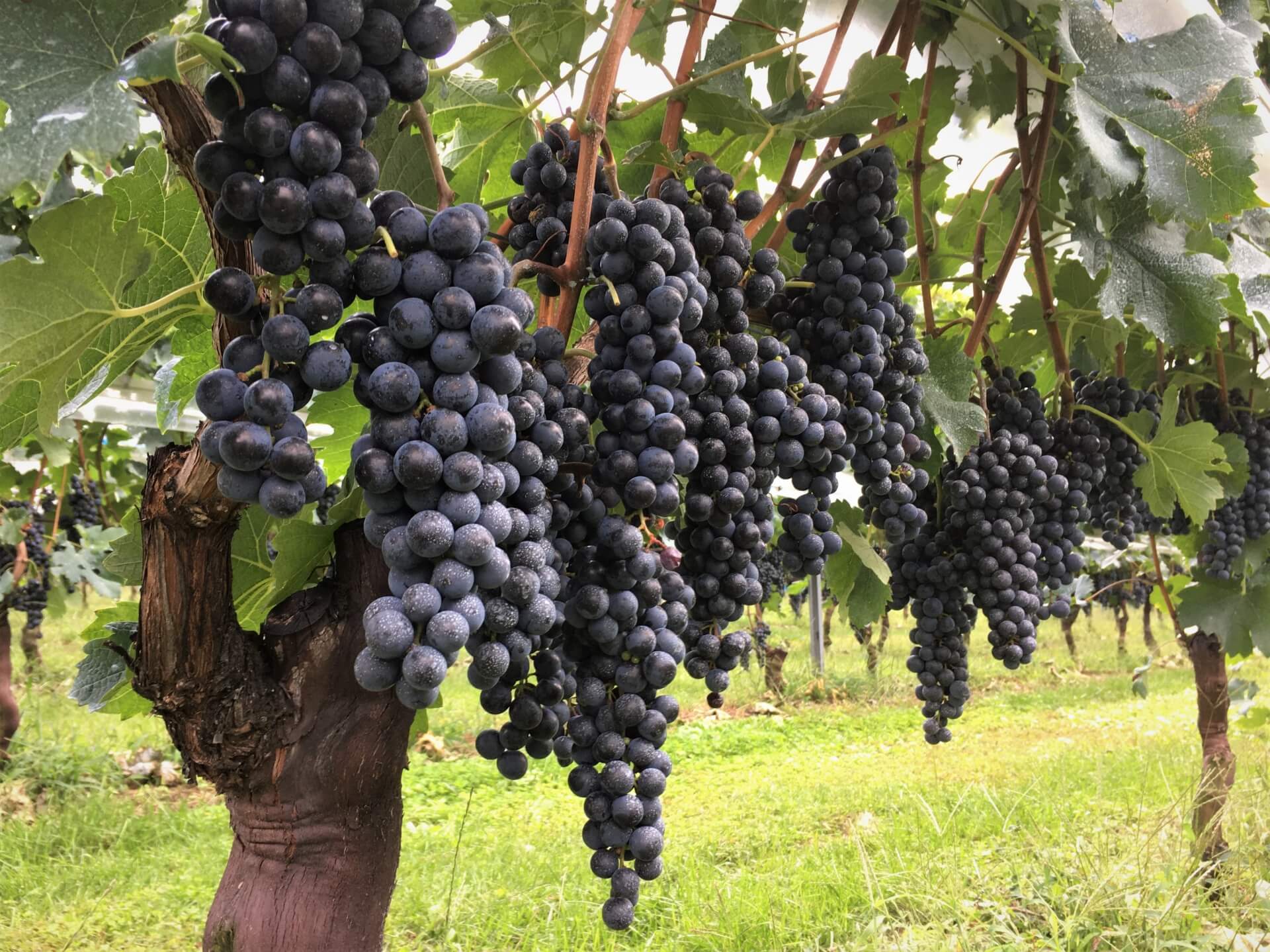
Azumino itself is a tranquil rural enclave in the shadow of the North Alps, with a lot more to do than just visit the wasabi farm. Home to scenic farmlands producing some of Nagano’s best fruit and vegetables, exploring Azumino through summer and autumn is a great way to enjoy the harvest including fruit-picking at one of the many local farms recent years, a number of galleries and museums have opened in the area with restaurants and cafes complementing them perfectly. Cycling around the area from Hotaka Station is a great way to take in the atmosphere of the Azumino – just one of the many outdoor activities in the area. For more tips and suggestions, please refer to our ’20 Thing to Do in & Around Azumino’ page.
9 / EXPLORE KAMIKOCHI / April to November
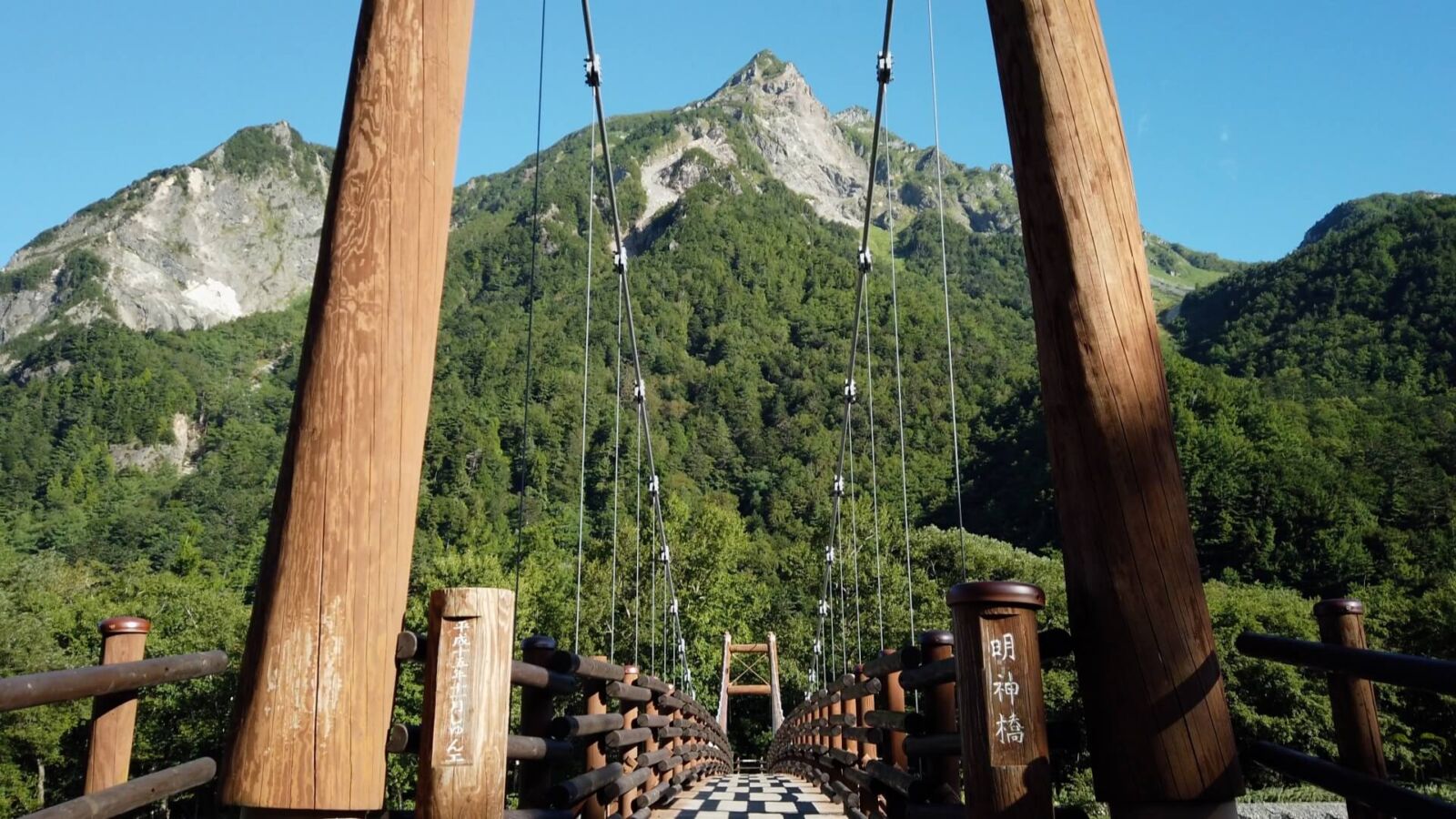
Approximately 60-minutes drive from the centre of Matsumoto, the alpine valley of Kamikochi is one of Central Japan’s most rewarding experiences. Situated in the Chubu Sangaku National Park, Kamikochi is a pristine and beautiful alpine valley open to the public from mid-April until mid-November each year. The valley follows the Azusa River while some of Japan’s tallest mountain peaks rise to over 3000 meters above. From the Kamikochi Bus Terminal, walking trails span-out along the valley – suitable to anyone of reasonable fitness – before more advanced hiking and mountaineering trails lead into the mountains. Considered the jewel of the Chubu Sangaku National Park, visiting Kamikochi is one of Nagano’s most memorable experiences – a truly special place of natural and spiritual importance. For accommodation listings in and around Kamikochi, please see our 'Kamikochi Area' hotel page.
This must-do tour combines a visit to Matsumoto Castle, one of Japan's best remaining original castles, with a trip to the gem of the Japanese Alps, Kamikochi. Making what would otherwise be a complicated journey easy, or tour vehicles will be with you the whole day to simplify the process. Operating from April until November, any season is a good time to come and see what this dynamic city has to offer.
1-Day Tour from Nagoya: Kamikochi – Enchanting Landscapes & Seasonal Beauty
- Spots:
- Pick-up:
- Drop-off:
We also offer a tour of Kamikochi originating from Nagoya. This tour not only provides you with a guided tour of Kamikochi, but also stops at a flower park and farm located in the remote Hida Highlands for a relaxing full-day excursion surrounded by the seasonal beauty of Japan. Nagoya is one of the main stops on the Tokaido Shinkansen Line, making this tour a great choice for travelers coming from Tokyo, Osaka, or Kyoto.
10 / HIKING MOUNT NORIKURA / June to November
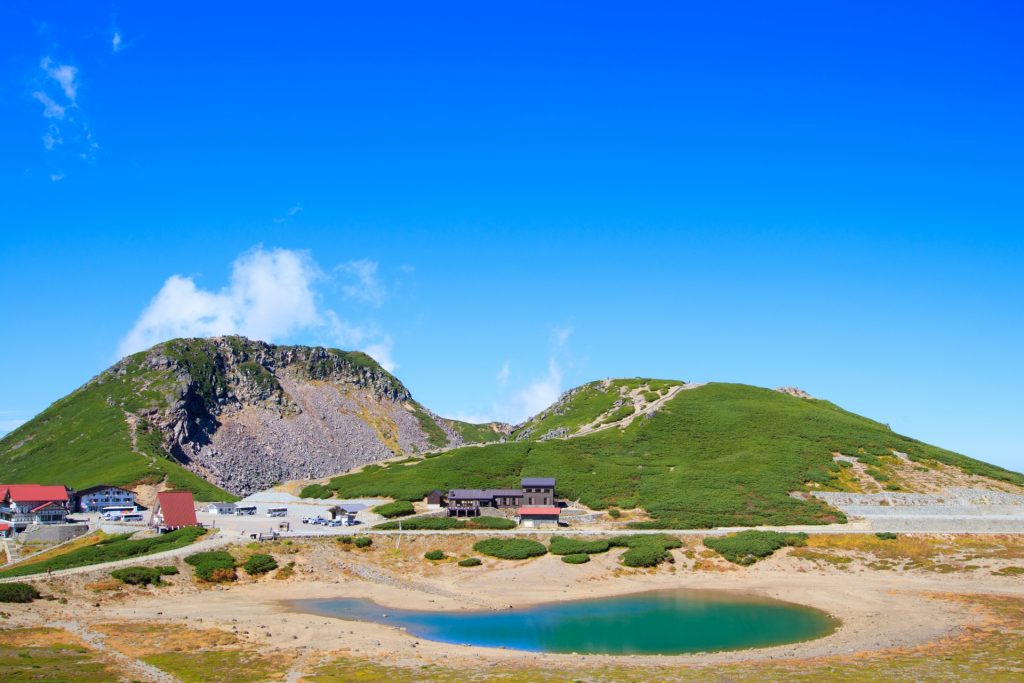
Also within easy reach from Matsumoto, Mount Norikura – or Norikuradake – stands at 3026 metres above sea level yet offers comfortable and leisurely walking trails for anyone of reasonable fitness. In winter, Norikura Ski Resort offers around 20 trails and on clear days, beautiful views of the surrounding landscape. From late-spring through to summer the receding snow then reveals a beautiful landscape of walking trails surrounded by lush alpine meadows and flowers. For a more challenging hike, you can trek all the way to the top of Mt. Norikura (3026 m) where you can explore a series of small peaks created by an ancient volcanic eruption and observe the alpine flora and fauna, not to mention the amazing view. You can also take a bus to just below the summit if you wish to forgo the long hike. Information regarding accommodation in and around Mount Norikura can be found through our ‘Norikura Kogen Area’ page.
11 / NARAI-JUKU & THE KISO VALLEY / all year round
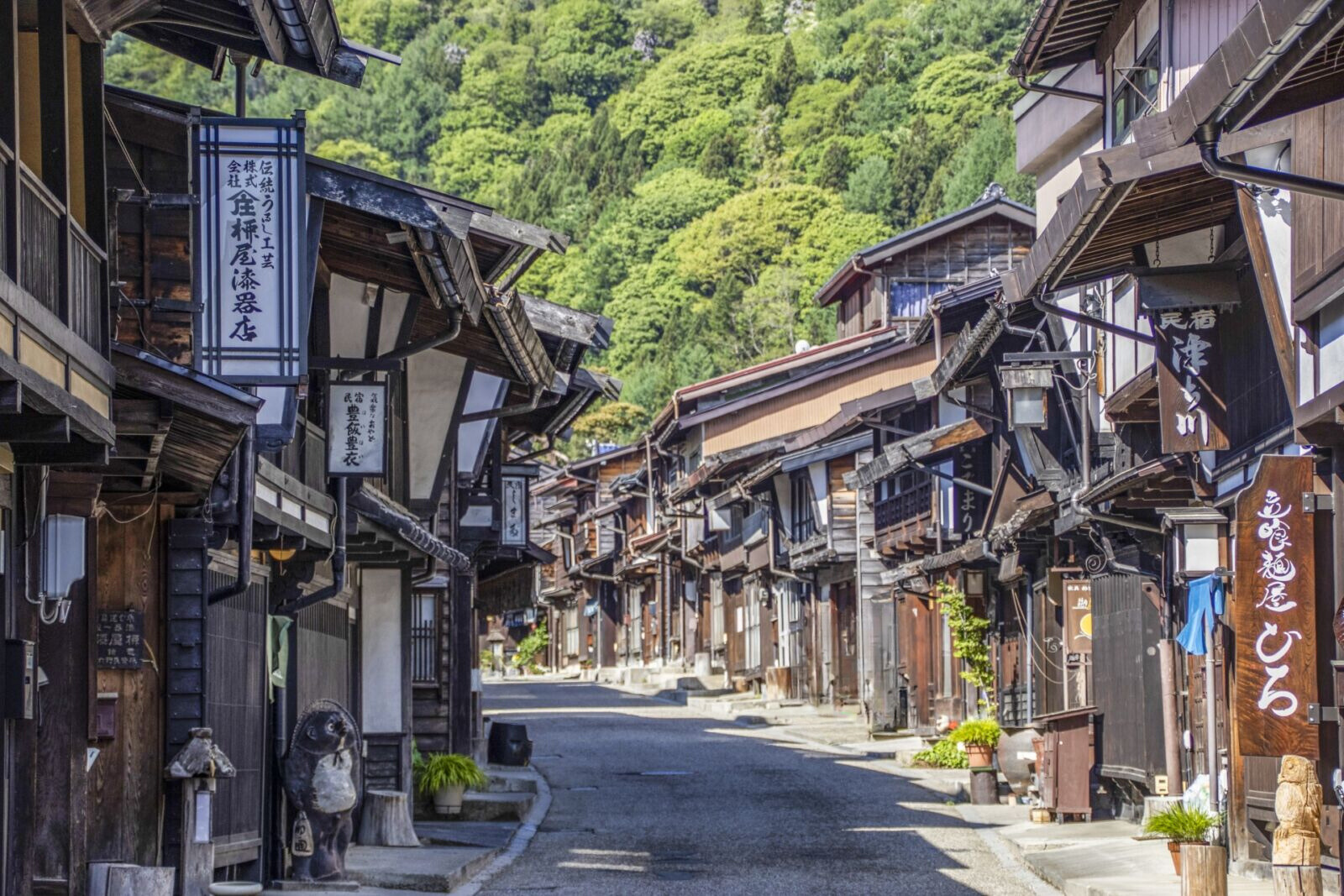
Recommended
1-Day Tour from Nagano and Matsumoto: Experience Matsumoto Castle and Narai-juku
- Spots:
- Pick-up:
- Drop-off:
Located around 45km south of Matsumoto, Narai-juku is said to be Japan's best preserved post town. The largest on the Nakasendo Trail, it contains over 1km of traditional buildings lining its main street. Famous for woodworking and lacquerware, a number of unique and useful crafts, including chopsticks, bowls, and dolls, can be found for sale here. Several of the old houses, including the Tezuka House and the Nakamura House, are open to visitors interested in learning about the lifestyle of the town residents in the 17-1800's.
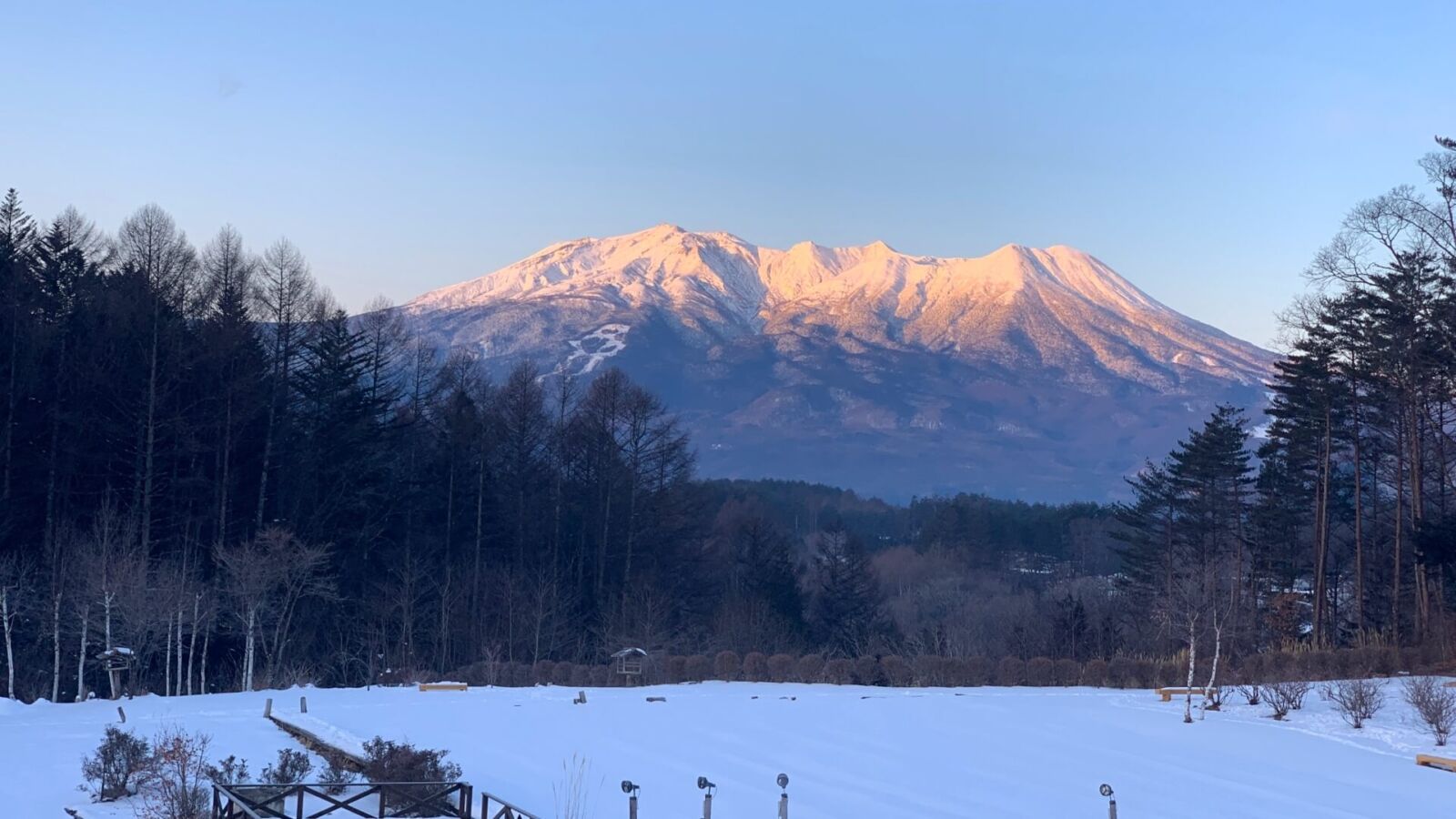
Narai-juku is located in the Kiso Valley, through which the Nakasendo runs as it snakes its way down towards Nagoya. Over 90km long, there are plenty of things to do in Kiso, including hiking, skiing, and eating delicious soba noodles, said to be first invented in this region. Visitors may also be interested in visiting the Kiso Ontake Mountain Range, which offers amazing views and a convenient ropeway to get close to the top. At the foot of the mountain is also the Atera Gorge, known for its crystal blue waters which could almost fool you into believing you are on a Caribbean beach - if it wasn't for the towering mountains and lush deciduous forests all around you!
12 / WALK THE HISTORIC NAKASENDO / best: April to November
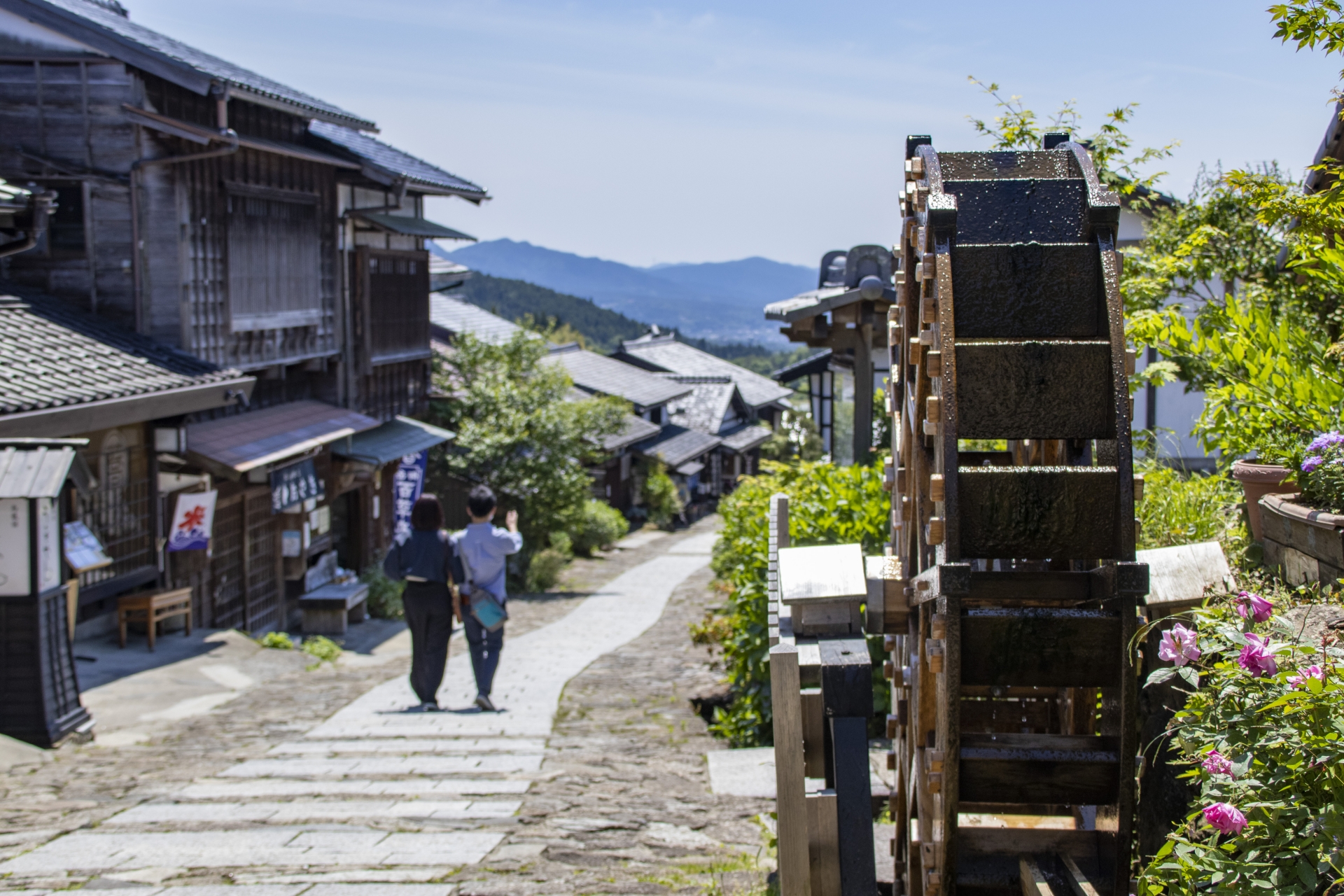
Recommended
1-Day Tour from Nagano and Matsumoto: Step into the Past on the Nakasendo
- Spots:
- Pick-up:
- Drop-off:
Accessible from Matsumoto using the Limited Express 'Shinano' – to either Kiso-Fukushima Station or Nakatsugawa Station - the Nakasendo Trail traces a historic highway that once connected Tokyo – then called Edo – and Kyoto during the Edo Period (1603-1868). Though much of the route is now gone, several sections can still be walked including the picturesque ‘Kisoji’, the section of road that runs through the Kiso Valley. Serviced by many ‘juku’ or post towns, the Kisoji is known for the historic preservation of Narai-juku, Magome-juku and Tsumago-juku. These picturesque little towns are cared for by local residents who strive to maintain their traditional aesthetic and ways of life. The journey on-foot between the towns is a lovely experience, particularly in spring and autumn. Our above listed tour is available from Matsumoto itself, and removes the hassle of relying on infrequent trains and buses to reach the area for a day trip.
13 / LAKE SUWA & NEARBY ATTRACTIONS / all year round
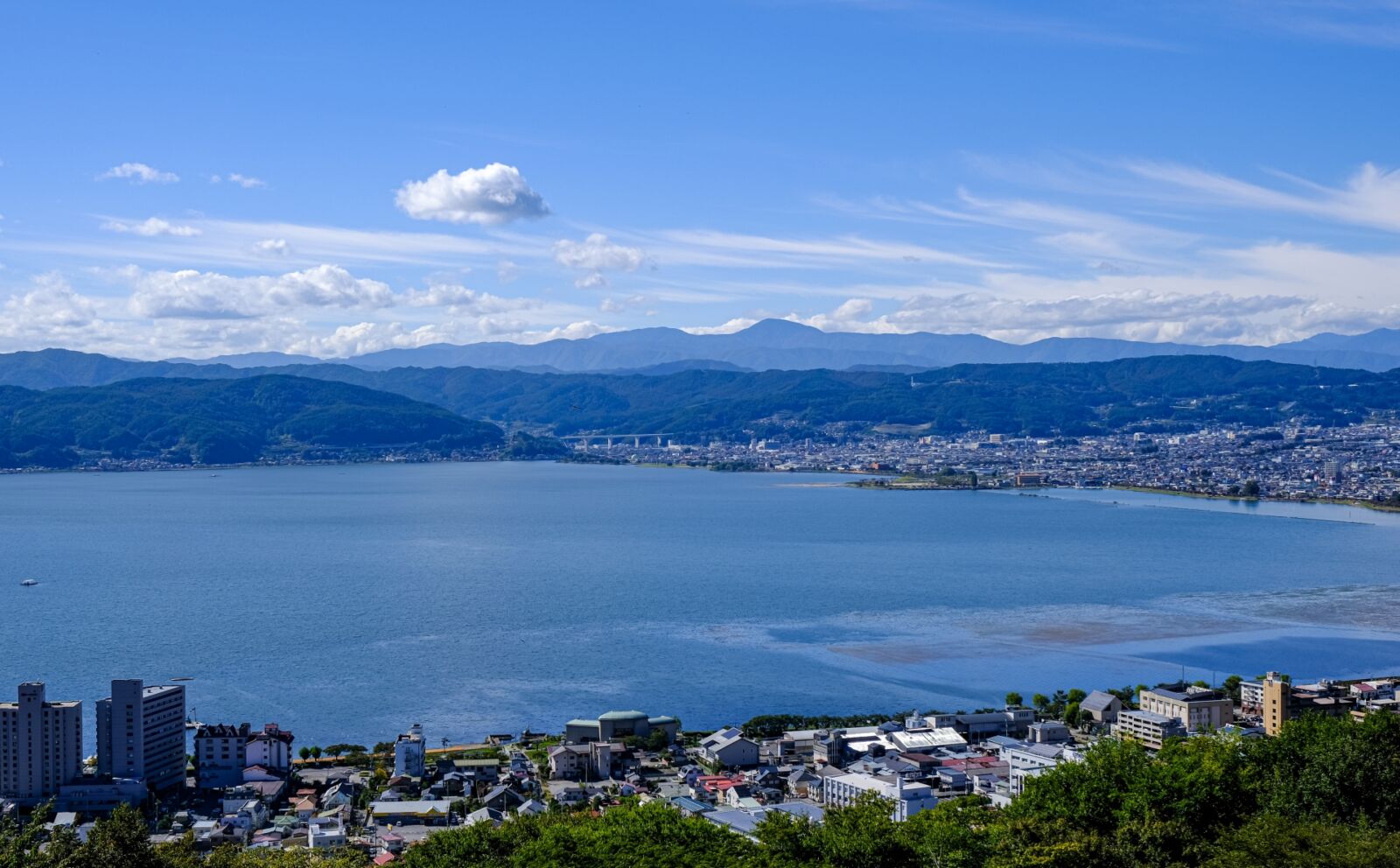
Just south of Matsumoto is Nagano's biggest lake, Lake Suwa. Home to a yacht club, a cycling/jogging path that circles the entire shore, a number of hot springs, and a very ancient and venerable shrine, there is a lot to do here, but few overseas travelers will ever make the journey. With a large number of ryokan available, staying for a few days and engaging in outdoor activities like jogging, hiking, or boating are a great way to escape the city. Of course, relaxing in the hot springs and enjoying good food around town - ramen is famous here - are not a bad way to spend your time here either. For hotel listings and recommendations for where to stay, see our 'Best Places to Stay in Suwa' page.
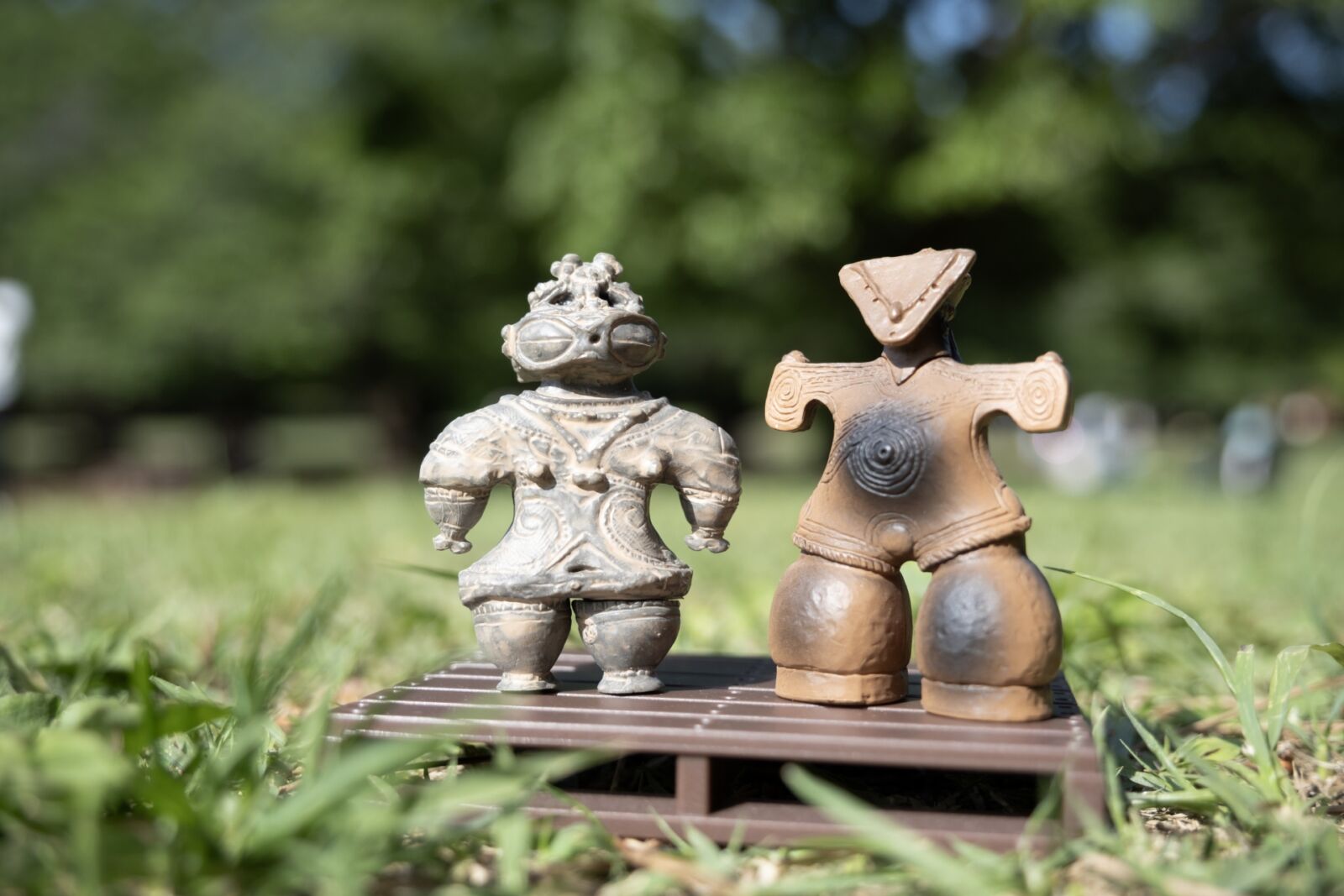
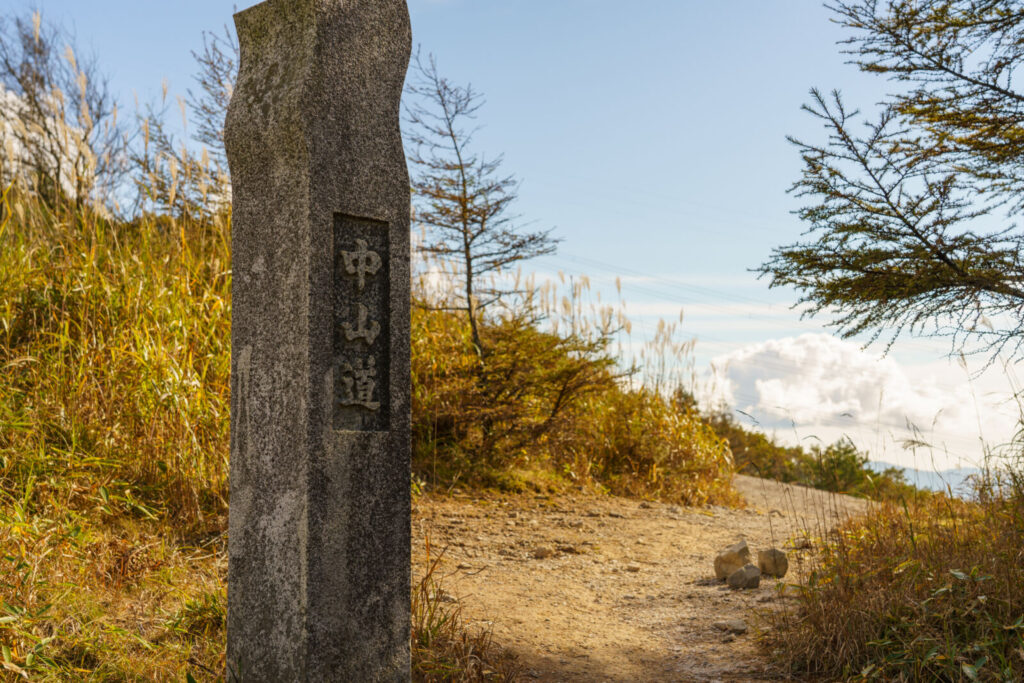
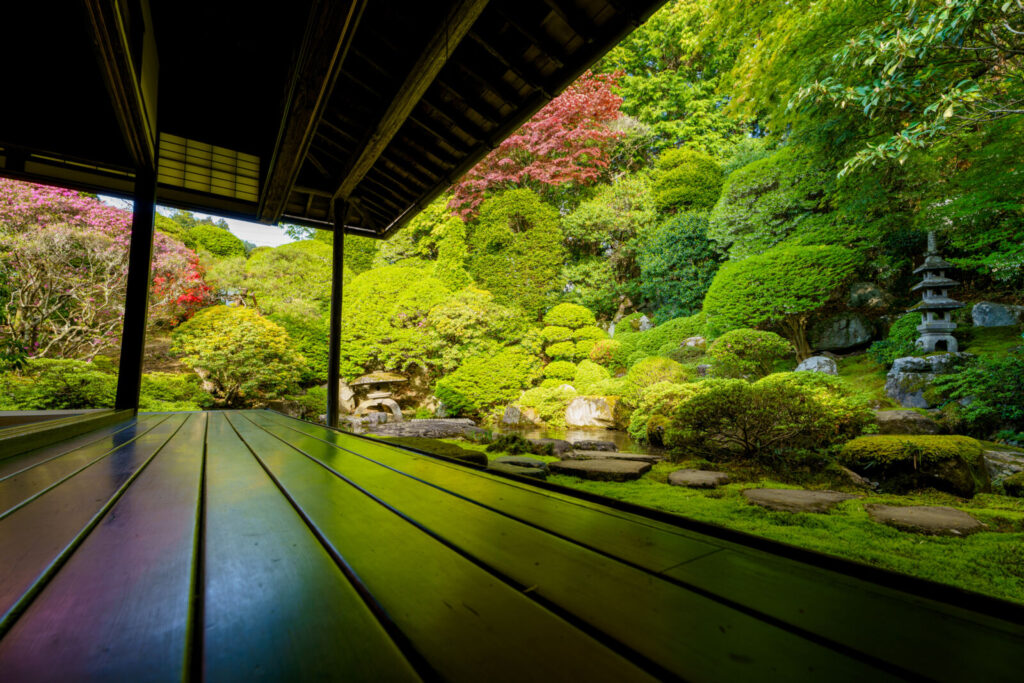
The area is perfect for history lovers as well. Starting way back in prehistory, over 30,000 years ago, a number of artifacts have been discovered around the area. Around 4,000 years ago the Jomon People, inhabiting Japan before the development of agriculture, were living here in large numbers; quite a few of their quirky and bizarre Doguu, or statues, along with highly ornate pottery, have been excavated in the region and are on display in museums. In more recent times (by that, I mean only 1,500 years ago!), the area became home to the Suwa Shrine, which is itself the headquarters of an offshoot branch of Shinto parallel to the main Ise sect. The old Nakasendo Trail also passed through, and a number of related sites and buildings are to be found along with preserved portions of the trail for hiking.
We provide various tours in the Suwa area, including the contents mentioned above. Check the link below for more information:
Special Offer
MEET THE LOCALS: Discovering Local Heritage and Key Figures of Nagano
- Spots:
- Pick-up:
- Drop-off:
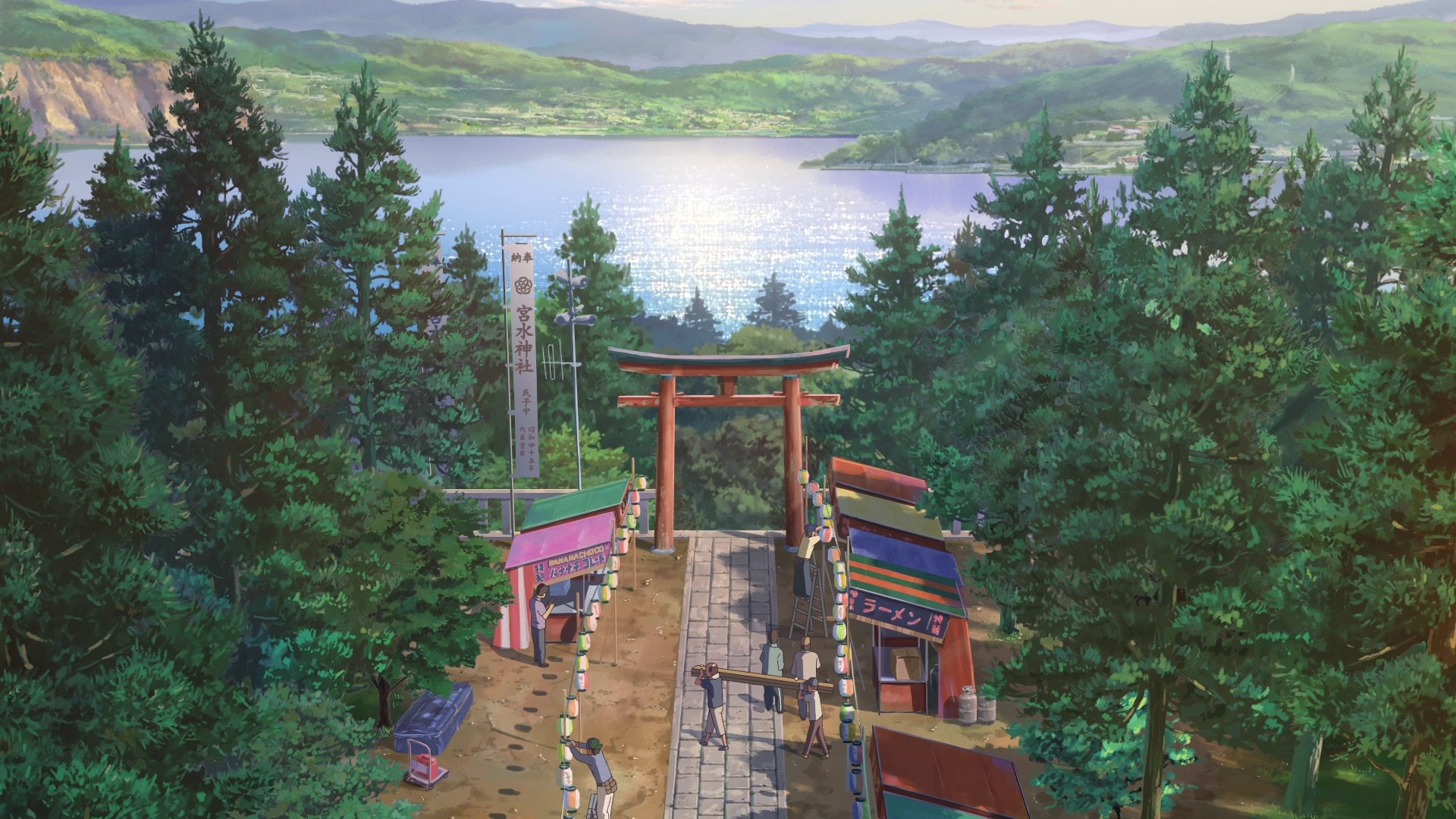
Lake Suwa has another claim to fame that will be a big draw to Anime fans - it was featured in 'Your Name'! The 2016 hit anime was a huge success worldwide, and is still popular to this day. What you may not know, however, is that the lake featured in the movie is based on Lake Suwa. While some creative liberty was taken, the two share a remarkable resemblance and the town of Suwa has jumped on the chamce to promote the connection by producing a number of 'Your Name' photo spots and merchandise items. If you want to learn more about the connection and other places that were featured in the film, check out our '6 Real-Life Locations That Inspired “Your Name”' page.
14 / DRIVE THE VENUS LINE / best: June to November
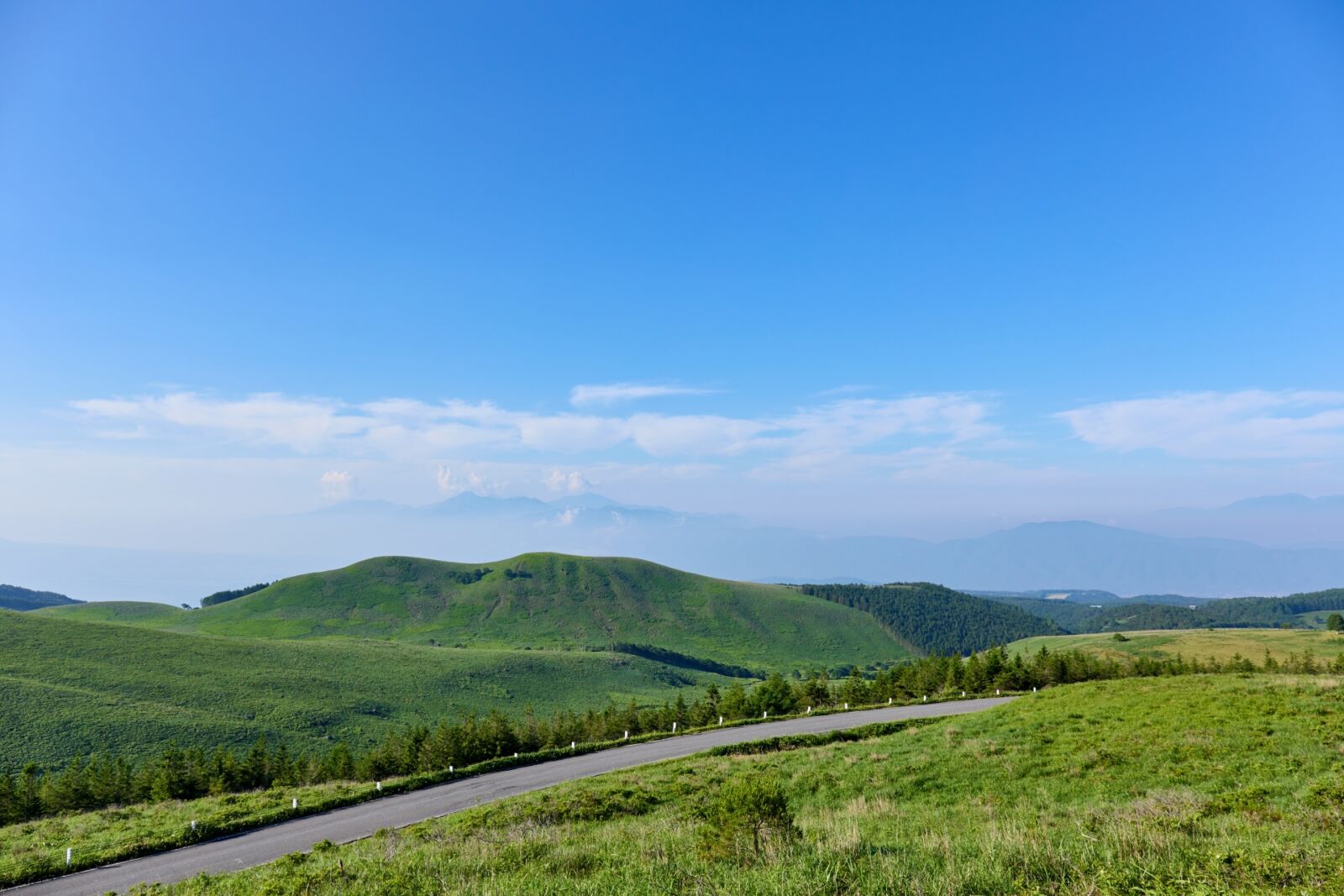
Running through the mountains from just south of Lake Suwa all the way to Matsumoto, the Venus Line is one of Japan's most scenic roads. If you have rented a car and are doing a Japan road trip, driving along this highway (literally a high-way, with sections going almost to 2,000 meters!) will surely be one of your best memories of the journey. Fields of grass, steep cliffs, forests, and amazing mountain views intertwine and seem endless, with the whole route taking around 1.5 hours to complete. You can start from either side, making to great to use on your way to or from Matsumoto. Located near the start is Kirigamine, a vast grassland with hiking opportunities, and Tateshina, a nice resort area with a number of hotel options.
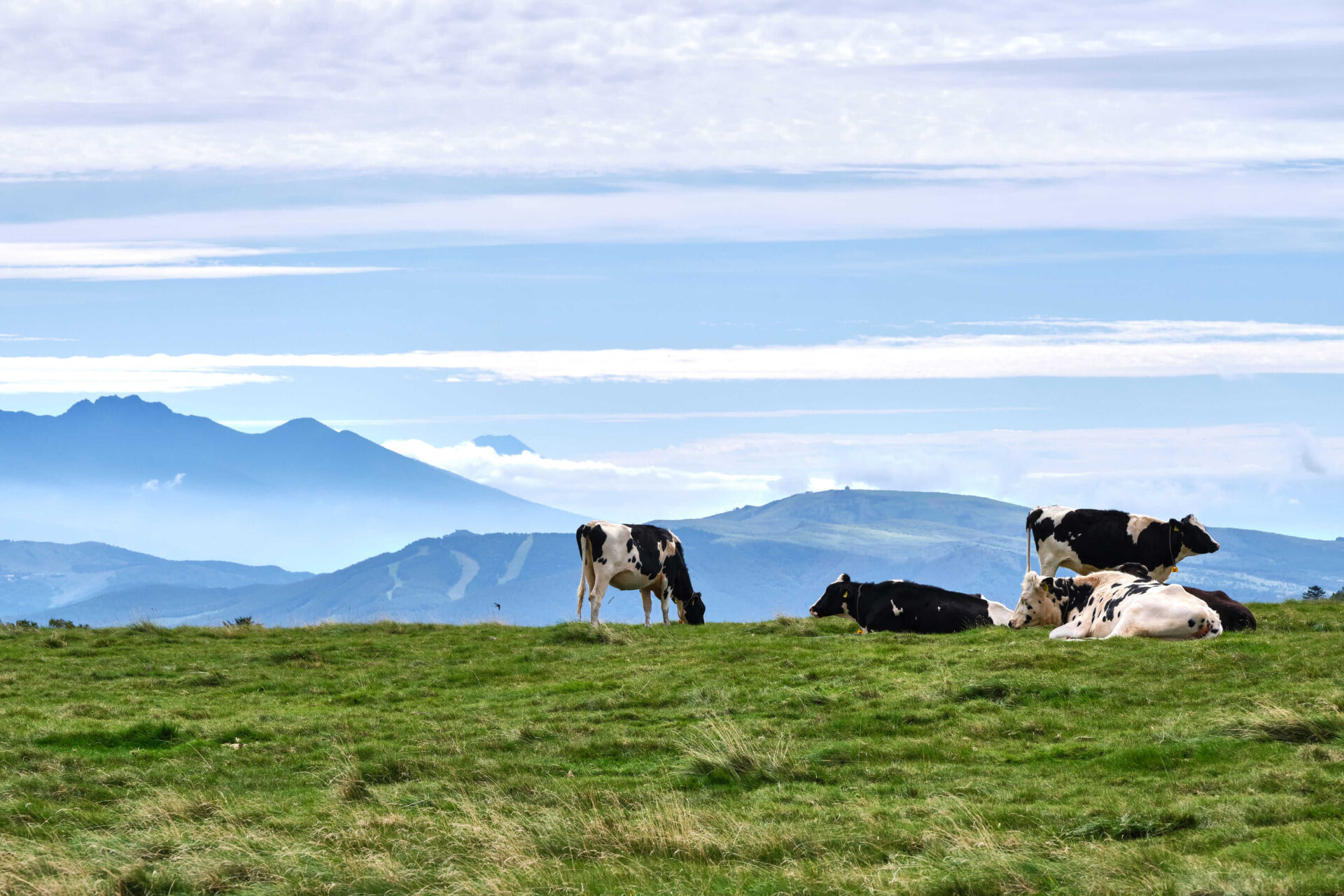
Going further north along the road will find you in Utsukushigahara, a highland area on the eastern side of Matsumoto City. Rising to an elevation of around 2000 metres, the highland is free of trees and covered with open-grasslands, and from spring to autumn covered in wild flowers. Ideally-suited as alpine pastures, the upper reaches of Utsukushigahara have long been used for grazing cattle. Leisurely hiking trails span-out across the highlands which on a clear day affords beautiful 360-degree views of the surrounding landscape. Several hotels are in the area, allowing for overnight stays should you want to go slower and enjoy Utsukushigahara at night. Known for its stunning starscape, many Japanese travel to the highlands specially to view and cherish the night sky.
15 / ADVENTURE AWAITS IN THE TENRYU RIVERLANDS / best: April - November
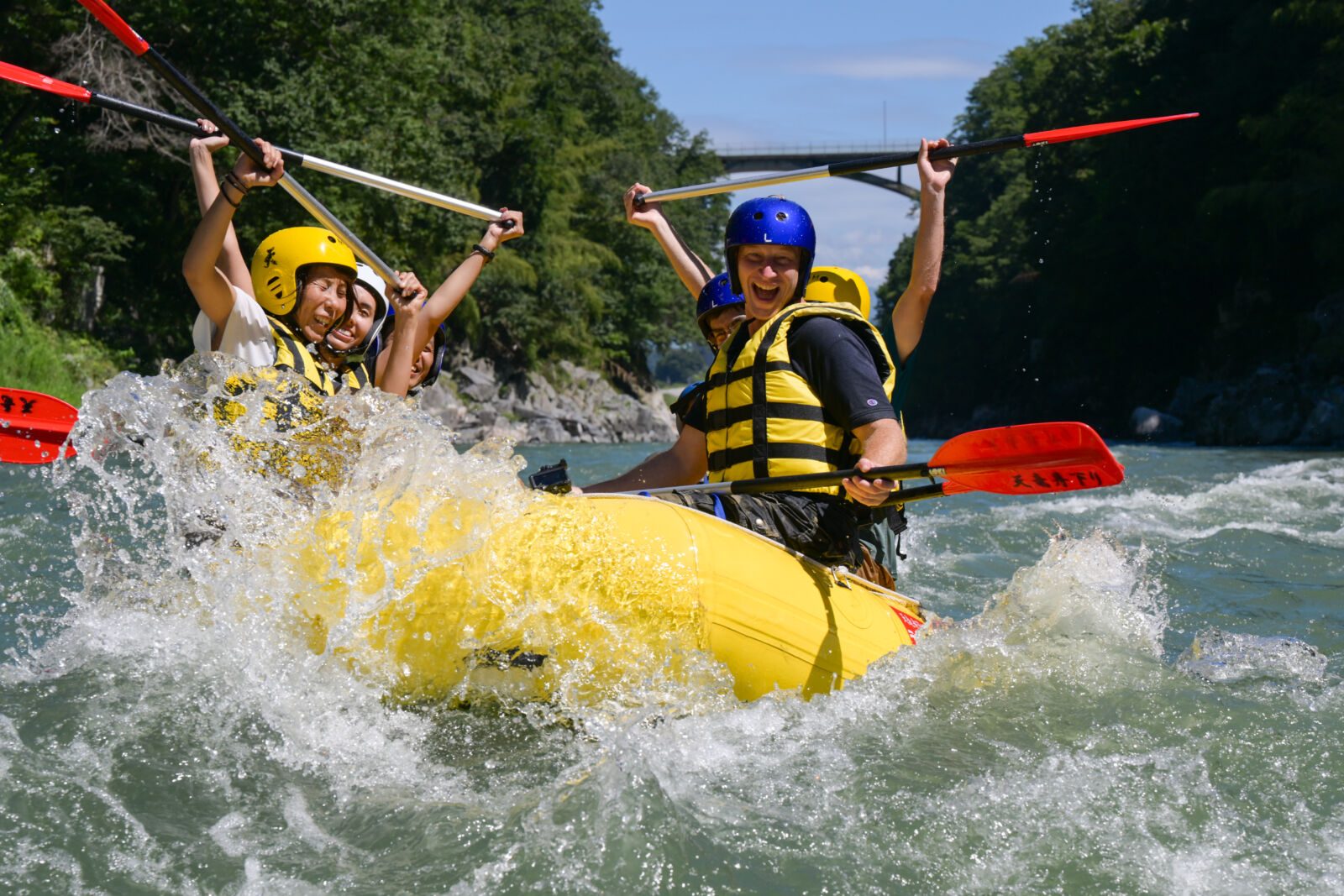
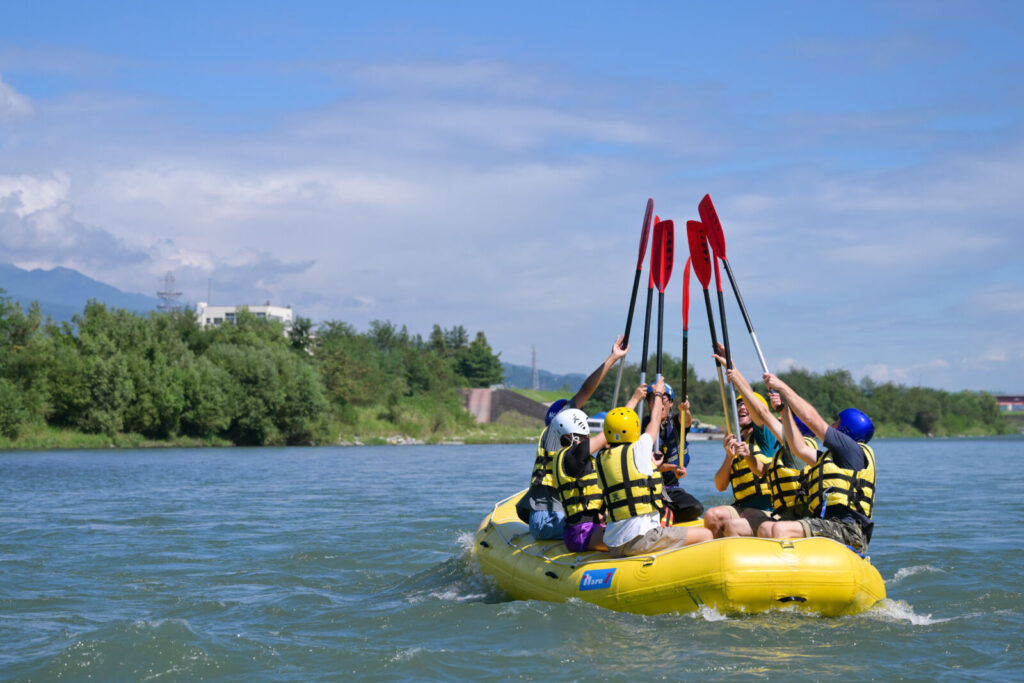
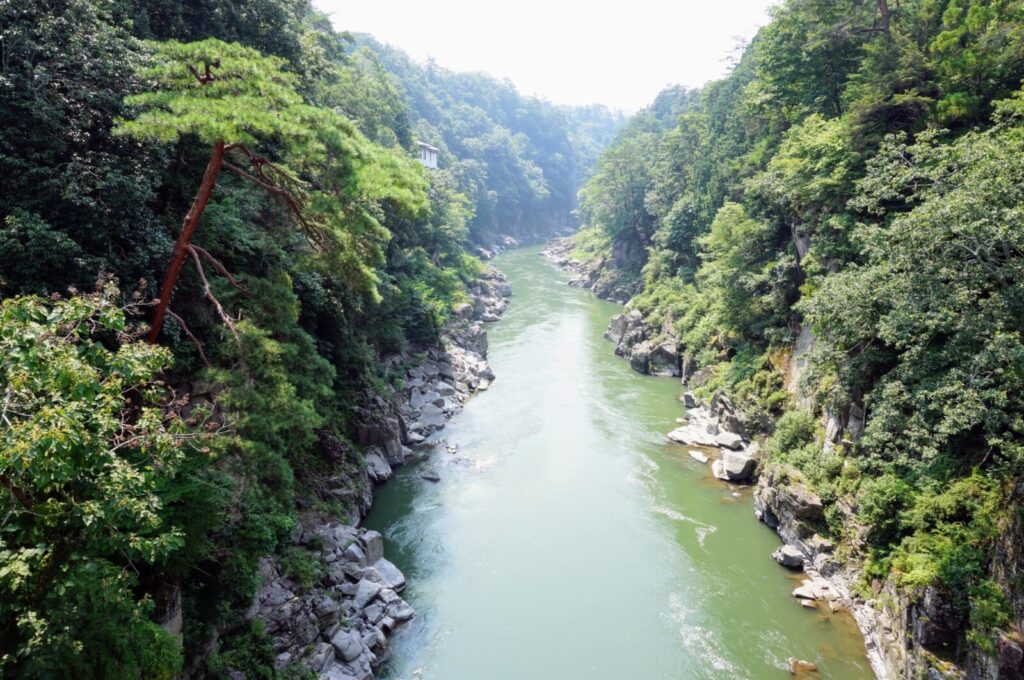
Perfect for those seeking adventure, the Tenryu Riverlands is a region south of Matsumoto known for its delicious fruit and the beautiful Tenryu River Gorge. Life is lived at a slower pace here, and although it is not physically too far away from Nagoya, it is a completely different environment to the big city. Apples, grapes, blueberries, pears, and more are grown in orchards along the hillsides here and many farms have all you can eat, pick your own fruit experiences available for a reasonable price.
Rafting in the rapids of the Tenryu River is another popular pastime, and for those staying in Matsumoto our above tour makes it easy to do so. Our bus will drive you straight to the Tenryu Riverlands, where you will have time for fruit picking and lunch before joining a 10km rafting experience. Depending on the season, the rapids can be rather intense and the scenery will always be beautiful. Operating from April to November, the season for rafting is long, and wetsuits are available for the colder months. Once the tour is over, you can even stay in the area and catch the train or bus down to Nagoya to continue your journey through Japan.
16 / NAGANO CITY & MATSUSHIRO SAMURAI TOWN / all year round
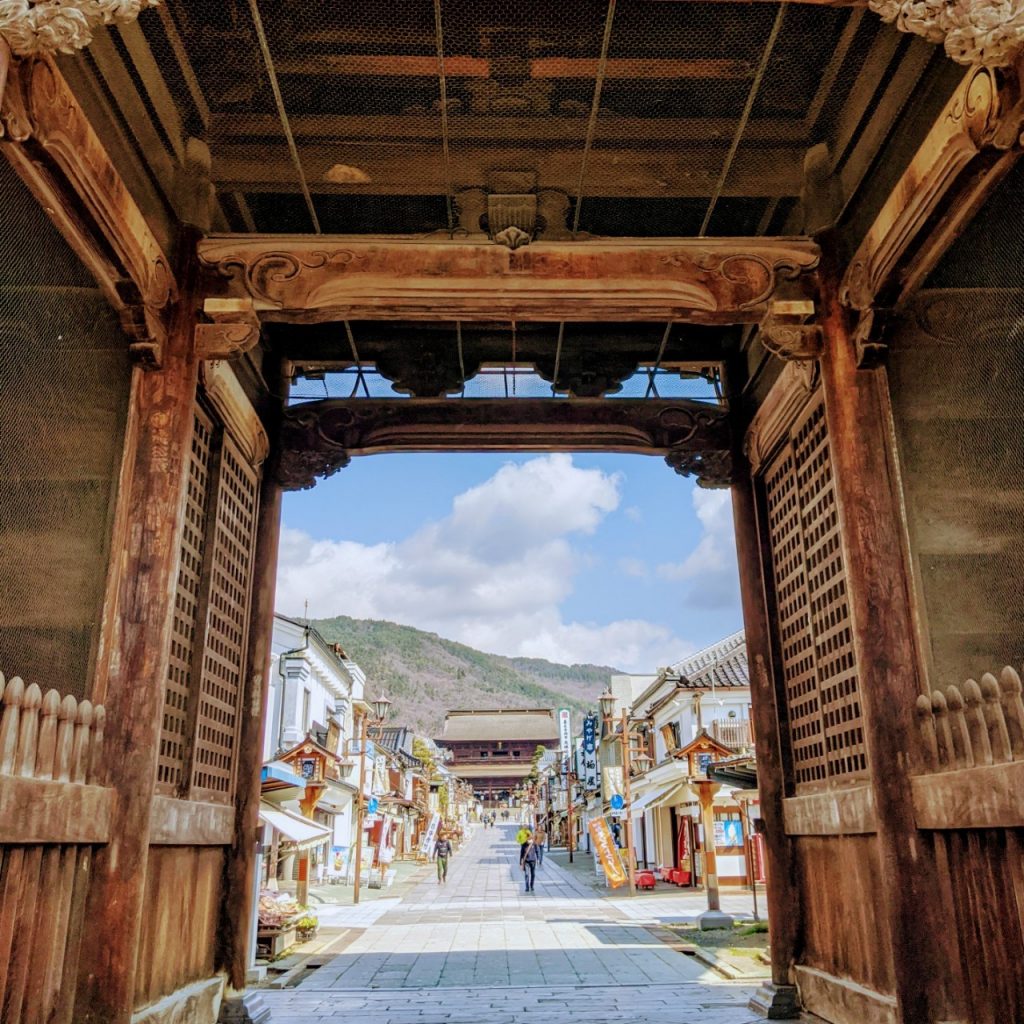
Visitors to Matsumoto are within close reach of Nagano City. Home to the near-1400 year old Zenko-ji Temple, Nagano is served by the Hokuriku Shinkansen via Nagano Station, connecting the region to Tokyo in the south and Toyama and Kanazawa in the northwest. Nagano is a great place to base yourself, and from there, explore the region on day-trips. Within the city itself, Zenkoji Temple stands alone as the main attraction and spiritual heart of the region. For accommodation listings in the city, please see our 'Nagano City Area' hotel page.
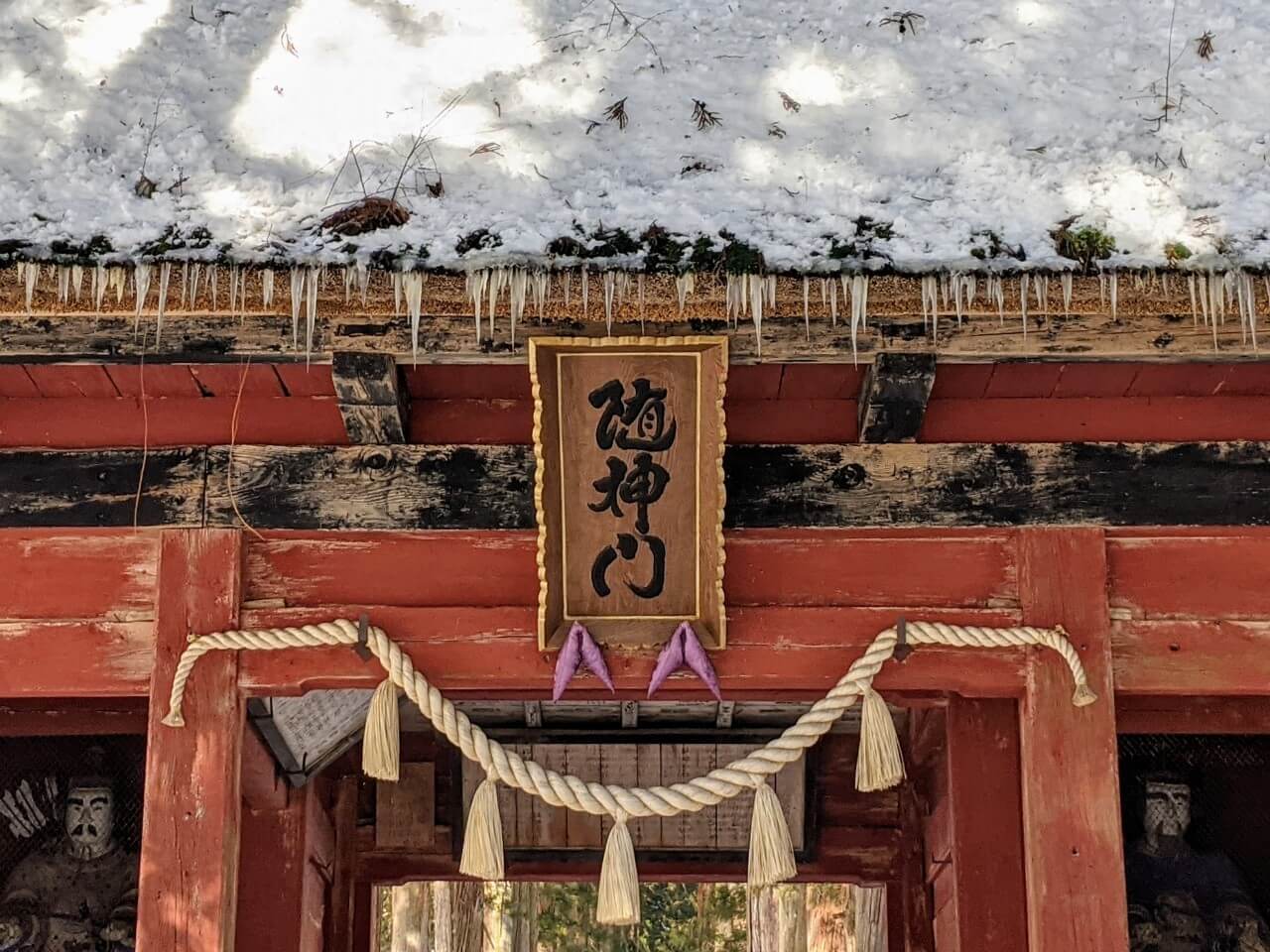
1-Day Togakushi Legends Tour: Hands-on Soba Noodles, Ninja Village, and Hidden Shrines
- Spots:
- Pick-up:
- Drop-off:
From Nagano City, visitors can head to nearby Togakushi – home to some of Japan’s most important Shinto shrines and birthplace of the Togakure school of ninjitsu while also known for its delicious ‘soba’ (buckwheat) noodles.
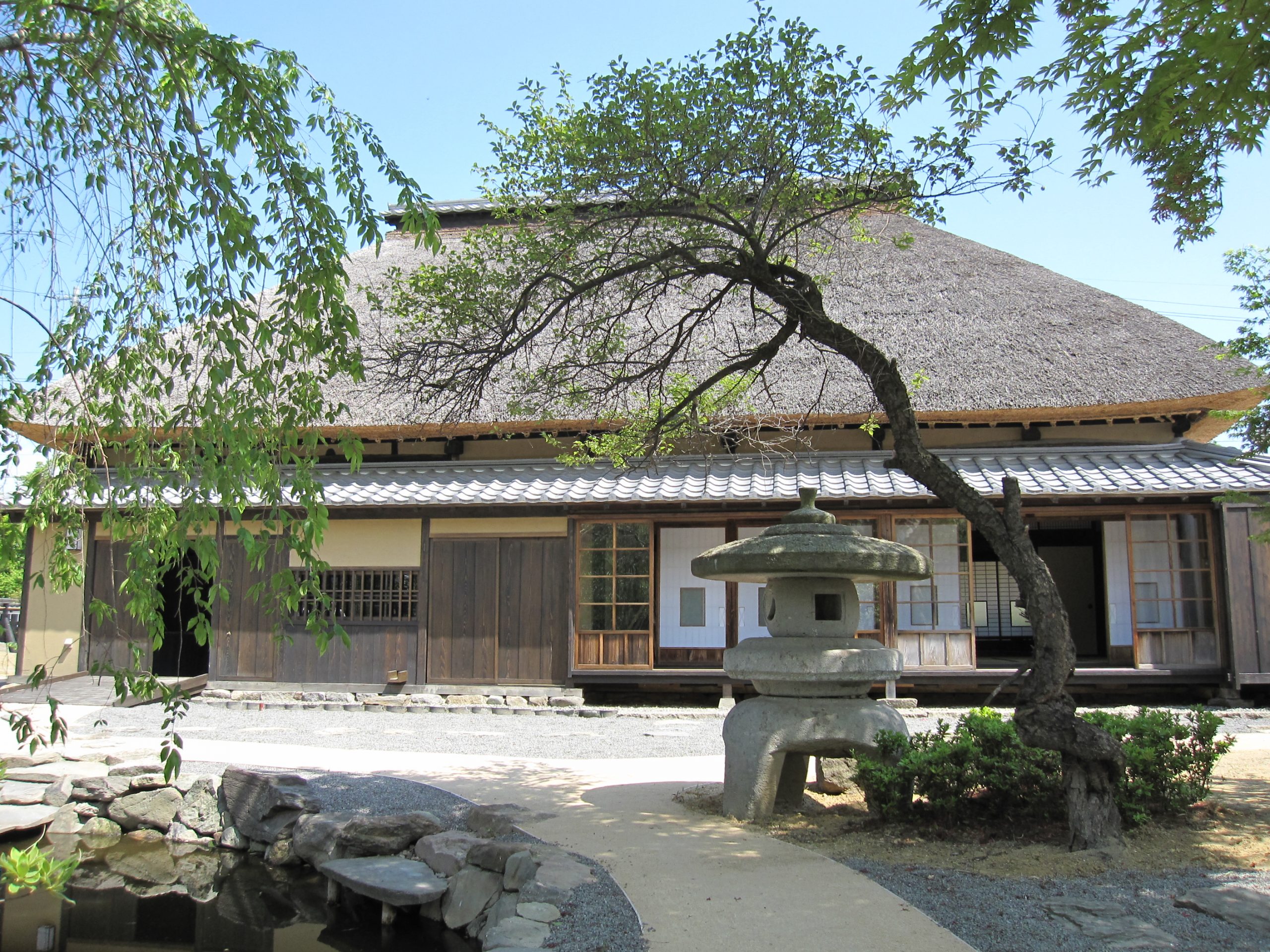
New Tour
1 Day Tour from Nagano: Fruits-Picking & Family Fun Activities in a Samurai Town
- Spots:
- Pick-up:
- Drop-off:
For devotees to samurai culture, Matsushiro is only 30 minutes from the city center. The former stronghold of the Sanada clan, Matsushiro is Nagano City’s renowned samurai town with a long history of martial excellence and a number of historic sites remaining to this day. By visiting on a tour, you can enjoy samurai training at a real school which was once used by the children of Sanada clan samurai for their education. Fruit picking and a collection of traditional Japanese games to play round out this fun and meaningful day.
17 / VISIT THE SNOW MONKEYS OF JIGOKUDANI / all year round
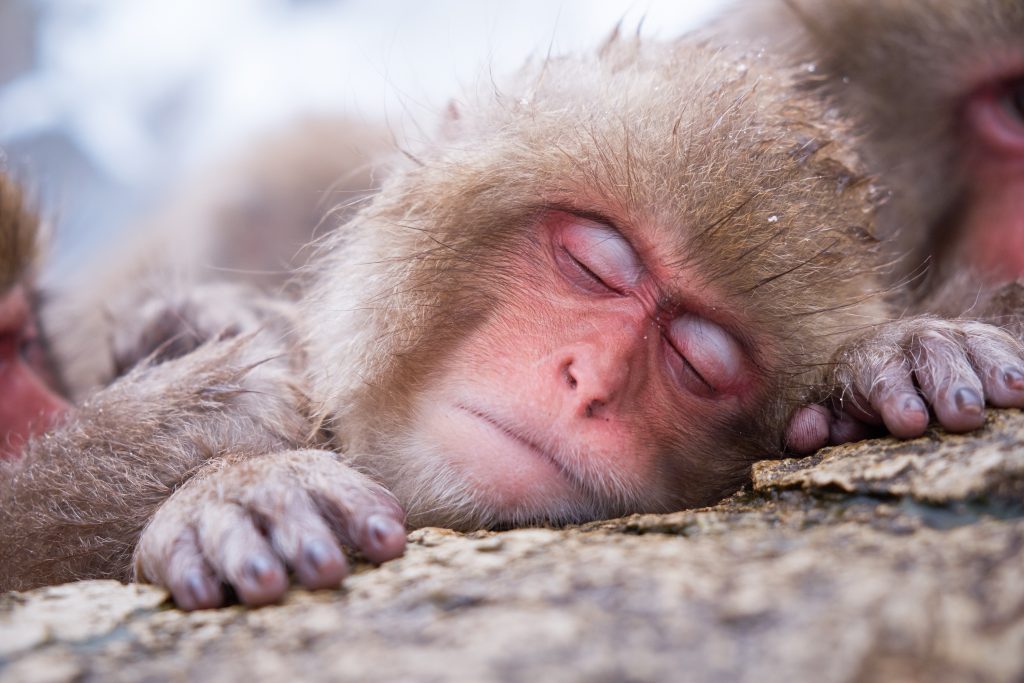
Finally, no visit to Nagano is of course complete with a visit to its famous hot spring-loving monkeys! The Jigokudani Monkey Park lies around 50 to 60-minutes from the centre of Nagano City – home to the only troop of monkeys in the world known to enjoy soaking in natural thermal waters. Most famous for this behaviour in winter, the monkeys come to the park all year round, attracting visitors from all over the world.
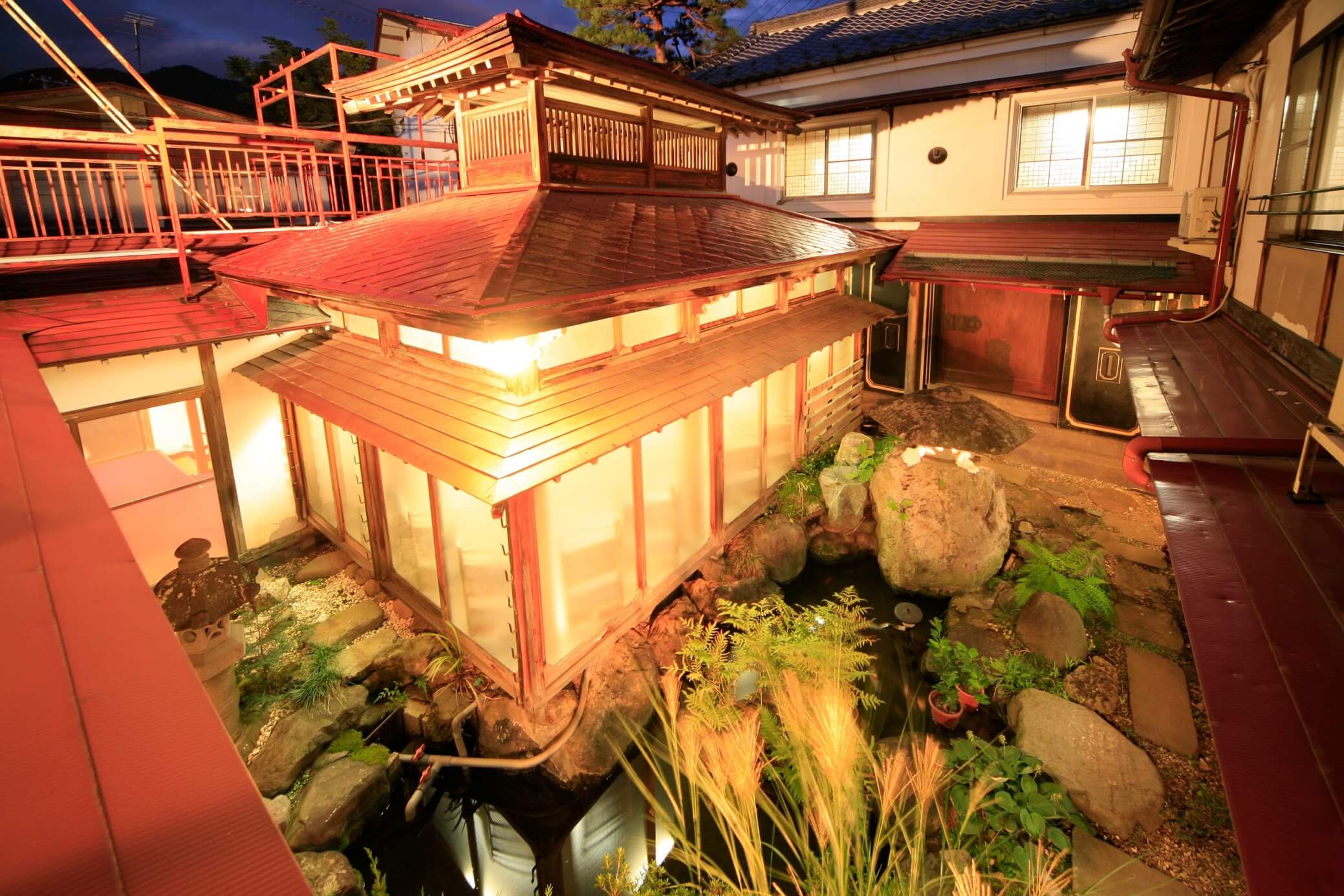
Located in the Yamanouchi area of Nagano, the area around the park is known for its many onsen guesthouses, farmlands and access to Joshinetsu Kogen National Park including Shiga Kogen – Japan’s largest ski resort. While it might be the monkeys that draws you to Yamanouchi, we recommend going slow and enjoying the comfort and relaxation of a traditional ‘ryokan’ (guesthouse), an indulgent hot spring and food sourced directly from the local farms.
As our name might imply, Snow Monkey Resorts longest running and most popular tour is our highly acclaimed 1-Day tour of Zenkoji Temple in Nagano and the Snow Monkey Park. Guests staying in Matsumoto can take the Shinonoi Line in the morning to easily make it to the Nagano Station meetup point in time for the tour, and it is easy to get a train back to Matsumoto in the evening as well. With sake tasting and lunch also included, there are few tours which offer more to do at such a low price.
18 / TATEYAMA-KUROBE ALPINE ROUTE / April to November
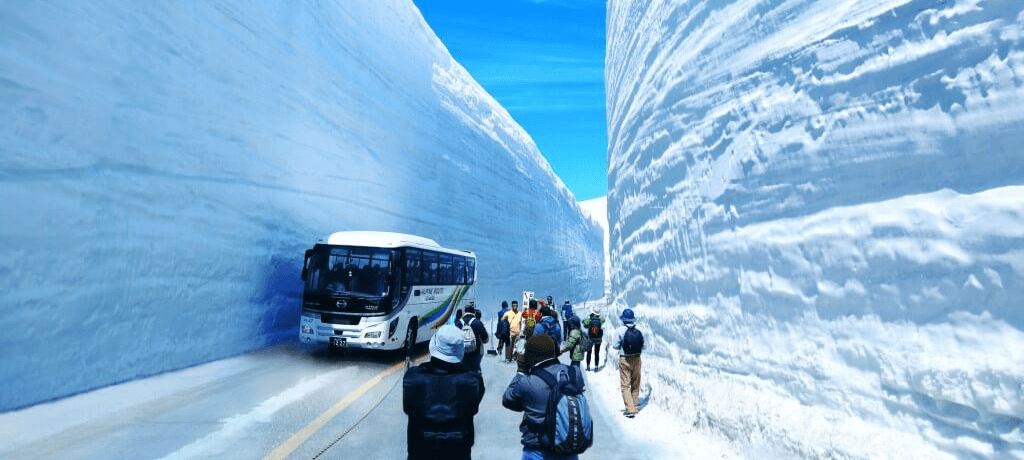
Best Selling
[Spring Only] 1-Day Tour from Nagano: Snow Walls of Tateyama-Kurobe Alpine Route
- Spots:
- Pick-up:
- Drop-off:
Heralded as one of Japan's best experiences, traversing the Tateyama-Kurobe Alpine Route takes approximately 6 hours without allowing for time to stop and enjoy all of its stunning sights. In reality, undertaking a visit to the Alpine Route is therefore a full-day activity. Visitors can start from Toyama via Tateyama Station or Nagano via Ogizawa Station, and choose to finish on the other side or return to their point of origin. A series of mountain transports including trolley buses, cable cars, a ropeway, and coaches transport visitors to and from Murodo Station – which at 2540 meters is the highest station in Japan. Open from mid-April to mid-November, the Alpine Route is most famous for its immense snow walls which, at their peak, ascend 20 meters above the road below. The walls are at their best from the opening day in April until late-June, after which outstanding hiking is available through summer and autumn, climaxing with stunning autumn colours in October until the route closes again in November.
19 / SKI RESORTS OF NAGANO / December to April
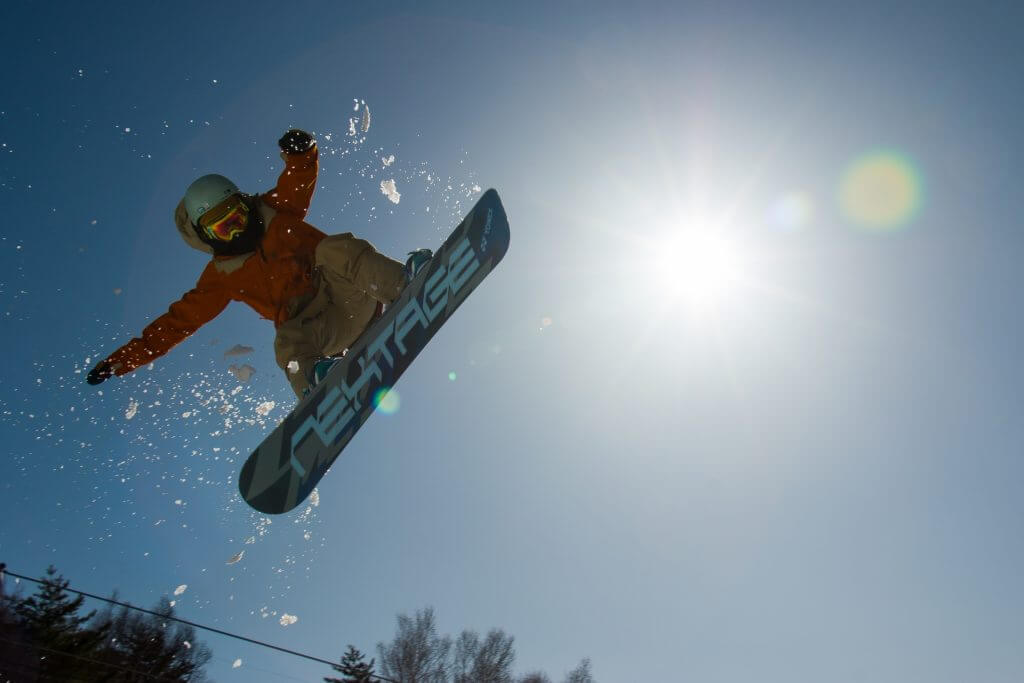

As host of the 1998 Winter Olympic Games, Nagano is proud of its Olympic heritage. Events were spread across different resorts across the region and at several venues in Nagano City. Nagano is home to around 80 resorts however only a few were lucky enough to host events including Hakuba Happo One. Several events took place in and around Happo One, establishing Hakuba's global profile. To this day, the resorts of Hakuba can lay claim to being Nagano's most international and popular. Plenty to keep you entertained on your winter adventure! The Nagano Winter Olympics were the first to include snowboarding as a medalled sport, with all snowboarding events taking place in Shiga Kogen - Japan’s largest and highest ski resort.
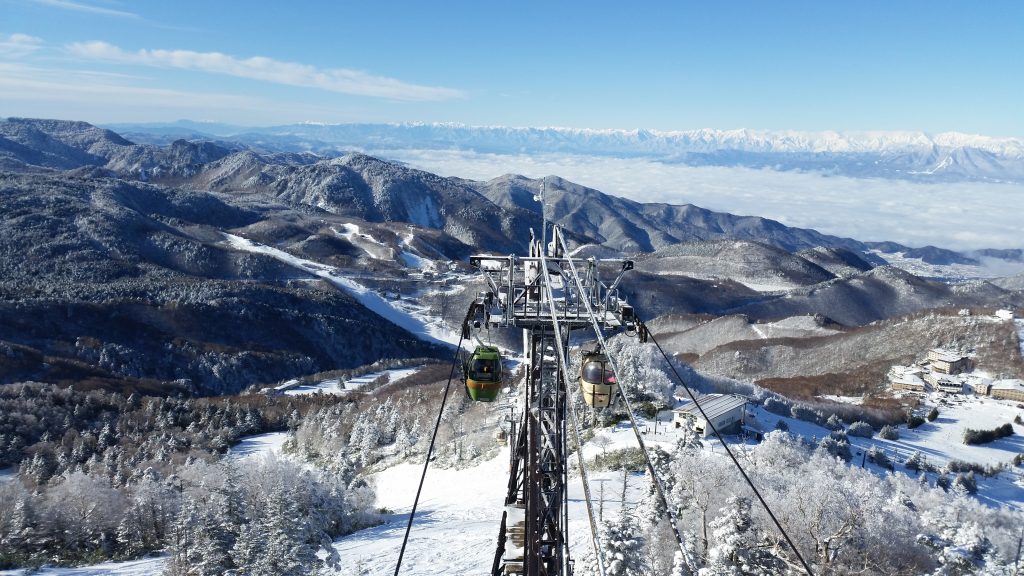
Boasting Nagano’s longest season and most reliable snow conditions – given its higher altitude and prevailing weather conditions – Shiga is another resort quickly coming to the attention of international visitors. Offering over 600 hectares of terrain, Shiga is likely to become much more popular over the coming years so get there now while it’s still relatively quiet. Less than an hours drive from Shiga, Nozawa Onsen is one of Nagano’s most popular resorts - offering skiers and boarders around 300 hectares of train between 565 and 1650 metres.
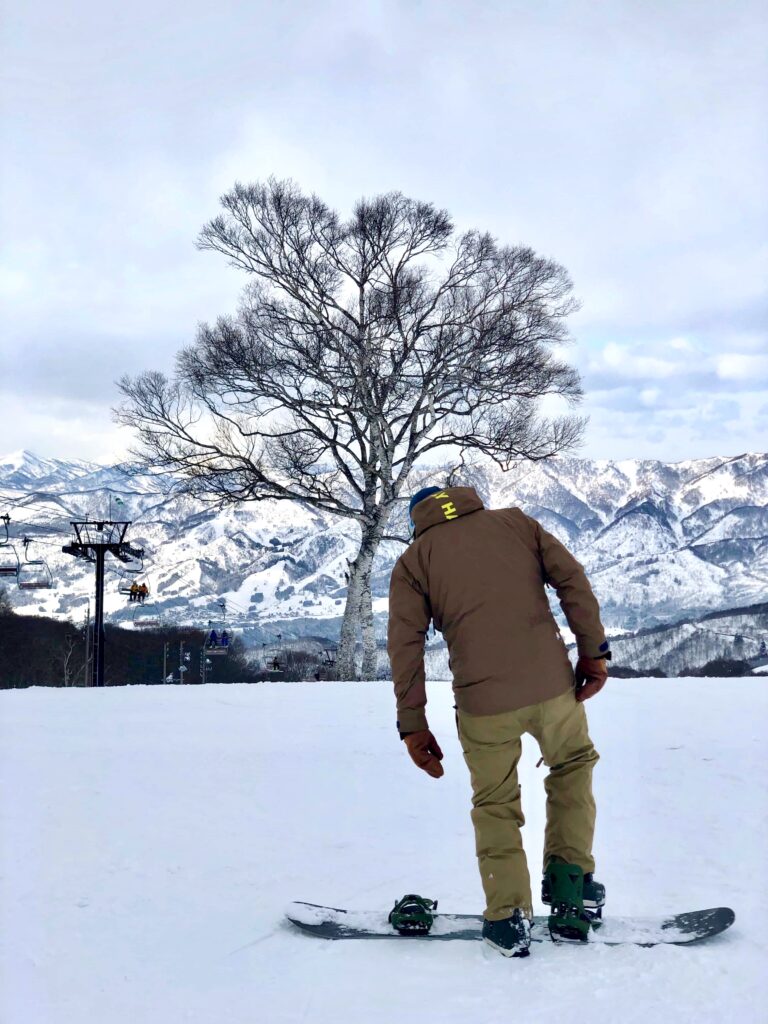
Also known for its great powder and setup for snowboarders, Nozawa is a lively resort serviced by a large village full of accommodation, restaurants and bars and ‘onsen’ (hot springs), Nozawa’s reputation is as much based on what happens off the mountain.
To visit any of the above mentioned resorts for a day of skiing, including rental gear, lift passes, and optional lessons, have a look at the above tour offering. You are free to pick the resort of your choice and hop on our bus from Nagano Station to enjoy Nagano's powder snow.
20 / MT FUJI & KAWAGUCHIKO / all year round
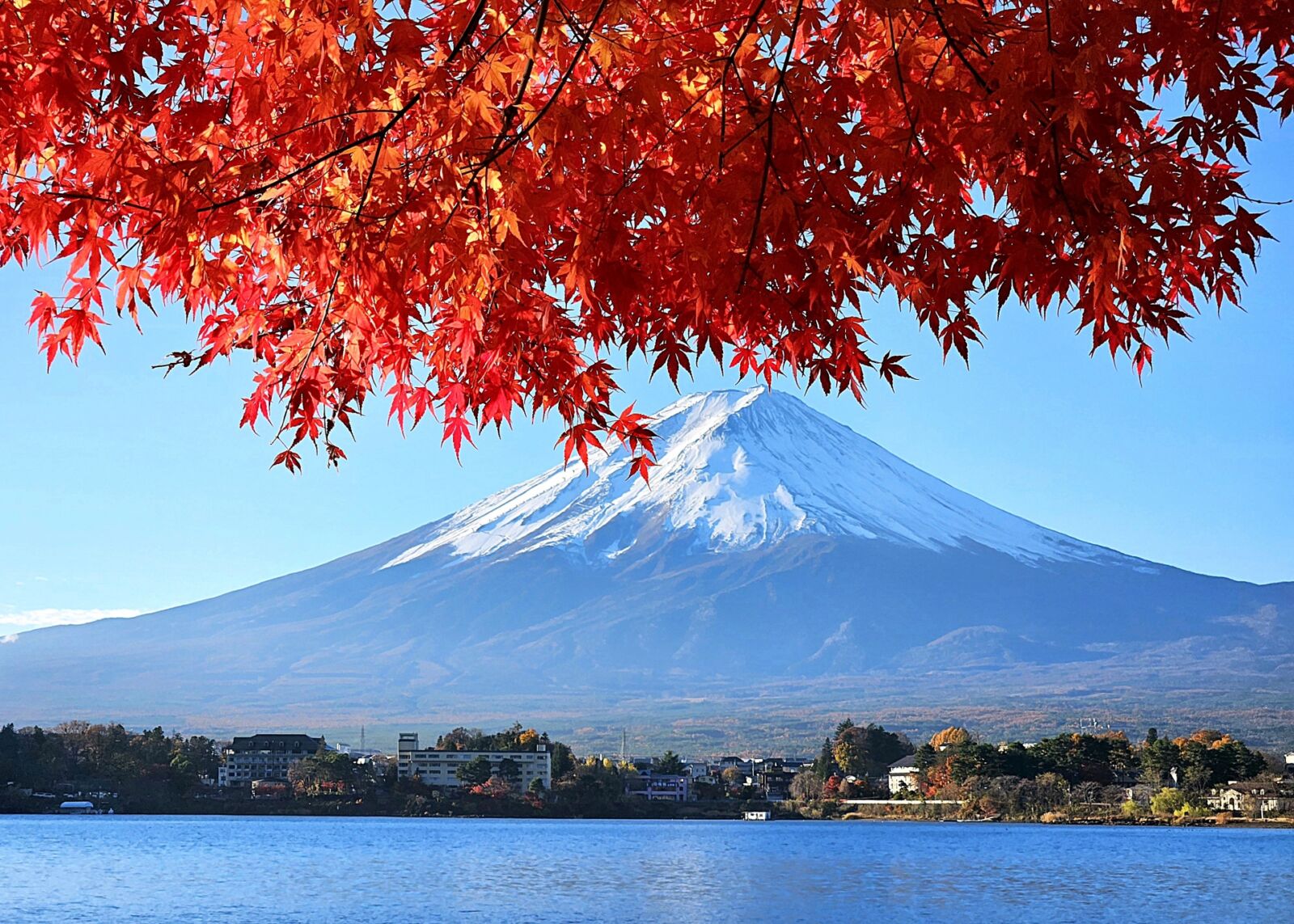
Although a little far from Matsumoto, the Mt. Fuji area is reachable in only a few hours by car, making it possible as a day trip. Of most interest will likely be Lake Kawaguchi (Kawaguchiko in Japanese), the most developed of the famous Five Lakes of Mt. Fuji. With eateries, boat rides, museums, and even Japan's most extreme theme park along its shores, you will find plenty to do. For a great view of Mt. Fuji, take the nearby ropeway up one of the smaller mountains by the lake shore, or visit the north side of the lake. Do keep in mind that Mt. Fuji is often shrouded in clouds, especially in summer or in the evening. Winter is the season in which it is easiest to see Mt. Fuji with perfectly clear skies, but autumn and spring are still perfectly good and make up for the slightly higher chances of clouds with beautiful fall colors or flowers.
21 / NAGOYA: JAPAN'S 3rd MAJOR CITY / all year round
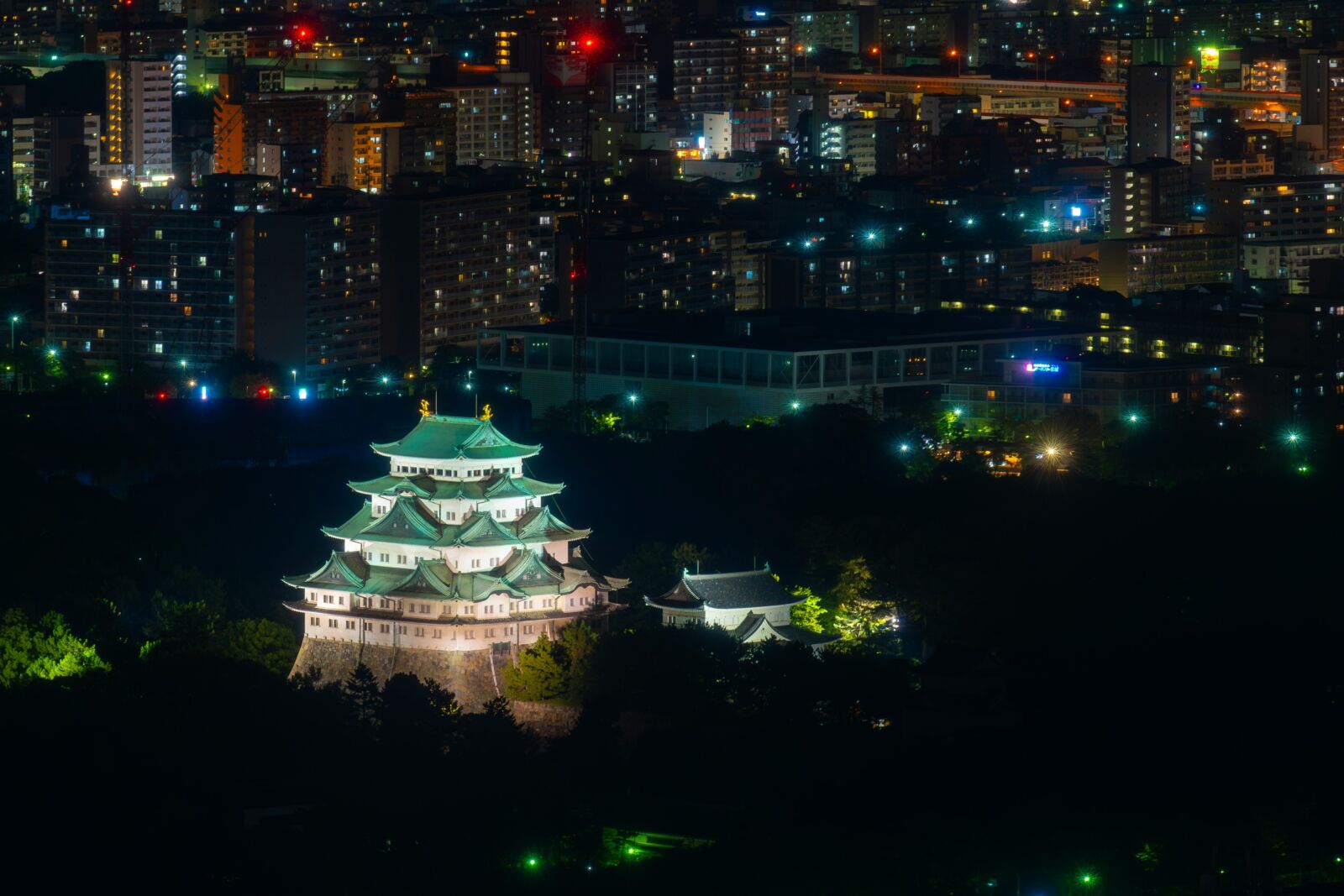
Often overlooked in favor of Tokyo and Osaka, the recent development of the Ghibli Park has brought more attention to this vibrant metropolis. As the 3rd of Japan's major cities, it offers famously flavorful food, historic castle grounds, and easy access to a number of other locations. Matsumoto is one of those locations, and it will take only 2.5 hours on the Shinano Express train to travel between the two - no transfers necessary! It is a great place to stop in on your way from Matsumoto to somewhere else in Western Japan, and should be used solely as a place to switch to your next train if you can spare the time. Miso Katsu, miso sauce soaked fried pork cutlets, is one of the tasty but perhaps not so healthy treats you must try while here.
1-Day Guided Garden Walk through Nagoya's Castle, Gardens, and Historic Estates
- Spots:
- Pick-up:
- Drop-off:
If you do take the train from Matsumoto down to Nagoya, we have a number of tours awaiting you! To see the cities main attractions, such as the castle, we recommend the above but that is far from all there is to do. To see a complete list of tours including recommendations for how to combine them and make your own multi-day tour, please see our 'Best Tours and Itineraries Around Nagoya' page. From Nagoya, it is easy to head on to Kyoto or Osaka, meaning a trip from Tokyo up to Matsumoto, down to Nagoya, and then onwards to the west is an easy but rewarding new travel route through Japan.
22 / TAKAYAMA / all year round
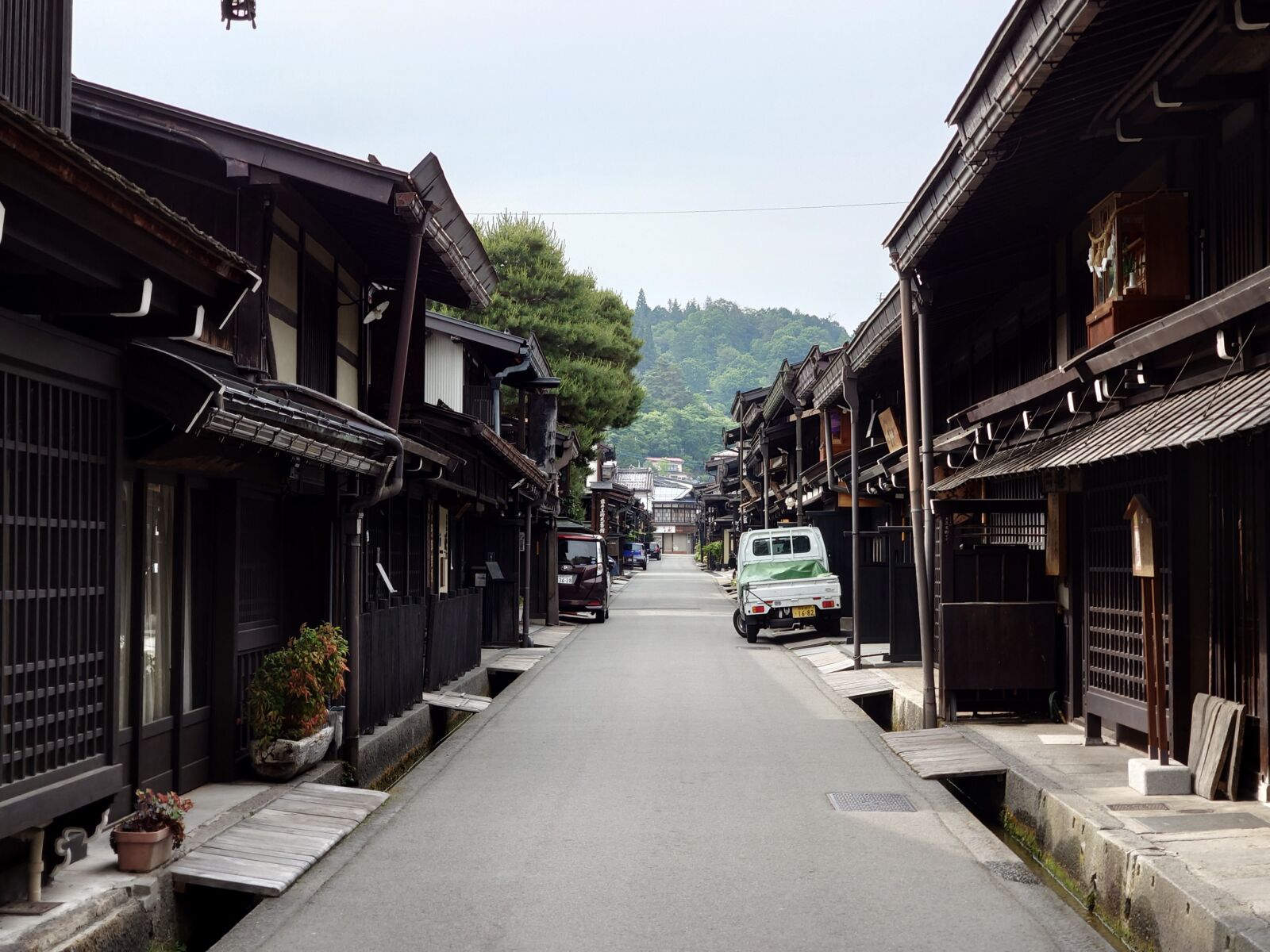
Lying on the other side of the North Alps from Matsumoto, Takayama is a popular destination famous for the preservation of its Edo Period (1603-1868) historic centre. Takayama is equally well-known for its food culture including Hida beef – considered some of the best in Japan – and its famous beef sushi, Takayama ramen and more! For foodies, Takayama is a real treat. If you have your eye on a particular restaurant, make sure to book in advance! Try to avoid the middle of the day - between 11:00 and 15:00 - when large tour buses arrive and crowd the small historic area with tourists. For accommodation listings around Takayama, please refer to our ‘Takayama City Area’ hotel page.
Best Selling
1-Day Tour from Takayama: Explore Scenic Old Japan in Takayama and Shirakawa-go
- Spots:
- Pick-up:
- Drop-off:
From Matsumoto it is simple to reach Takayama - either take the local Alpico Bus which runs between the two multiple times throughout the day, or leave it to us and enjoy a ride on a private charter through the alps! Regardless of the option you choose, it is a great next destination after Matsumoto. We also offer a number of tours in the area, so if you enjoyed taking a tour in Matsumoto and are looking for another, fear not! Of most interest to those making a trip through Central Japan, the above tour which visits Takayama's main historic sites and the UNESCO World Heritage town of Shirakawa-go; travelers can choose to end the tour in Kanazawa instead of returning to Takayama, removing needless transport time and hassle. You can of course take your luggage on our tour bus as well!
23 / OKUHIDA ONSEN-KYO & THE SHINHOTAKA ROPEWAY / all year round
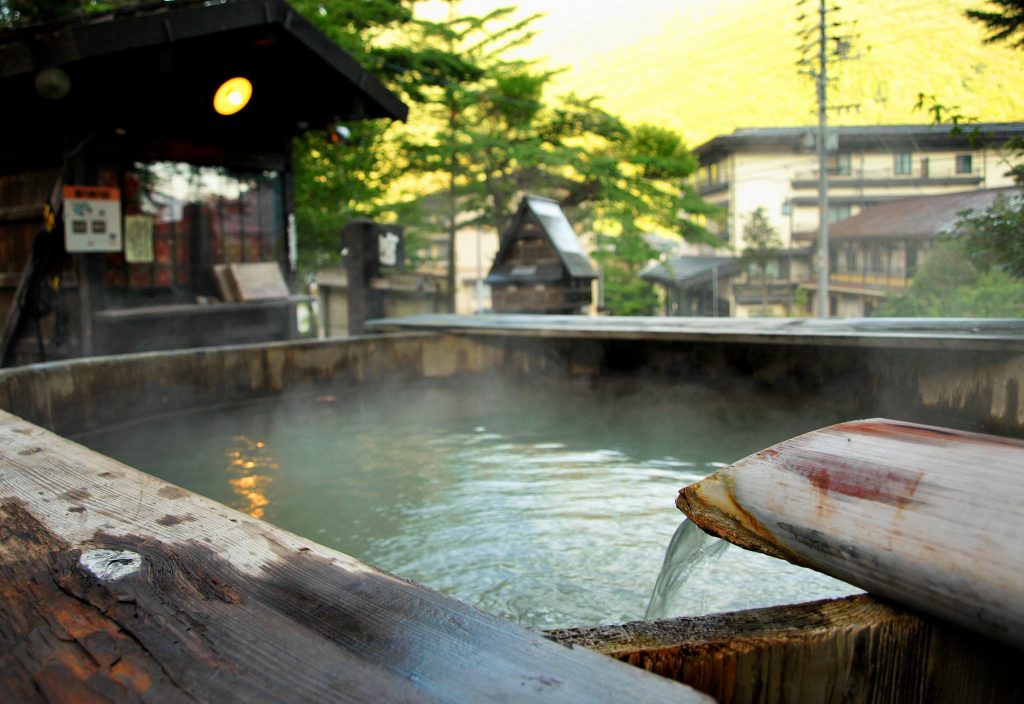
Travellers heading to Kamikochi from Matsumoto and then onto Takayama - see below - also have the option of staying in Okuhida Onsen. There are five onsen towns in the Okuhida area and of them, Hirayu is the oldest and largest. It is said to have been discovered in the mid-16th century. There are two main public hot spring baths in the town as well as the onsen found in each of the local inns. If you are not staying overnight, most of the inns open their onsen baths to the public for a small fee of anywhere from JPY500 to JPY2000 per person.
Popular
(Seasonal) 1-Day Tour from Takayama: Alpine Splendor - Shinhotaka Ropeway and Kamikochi
- Spots:
- Pick-up:
- Drop-off:
If you are in Takayama and looking for a trip to the Okuhida area, this tour is for you. Our bus will first take you to the Shinhotaka Ropeway, one of the areas biggest draws and Japan's only double decker ropeway. You will be treated to an amazing view over the Okuhida area at the top, before descending the mountain to visit Kamikochi - which is actually directly on the other side of the mountain which the ropeway ascends. After a day of alpine views and a refreshing 3km walk in Kamikochi, you will be returned to Takayama to enjoy the rest of your evening.
24 / SHIRAKAWA-GO & GOKAYAMA / all year round
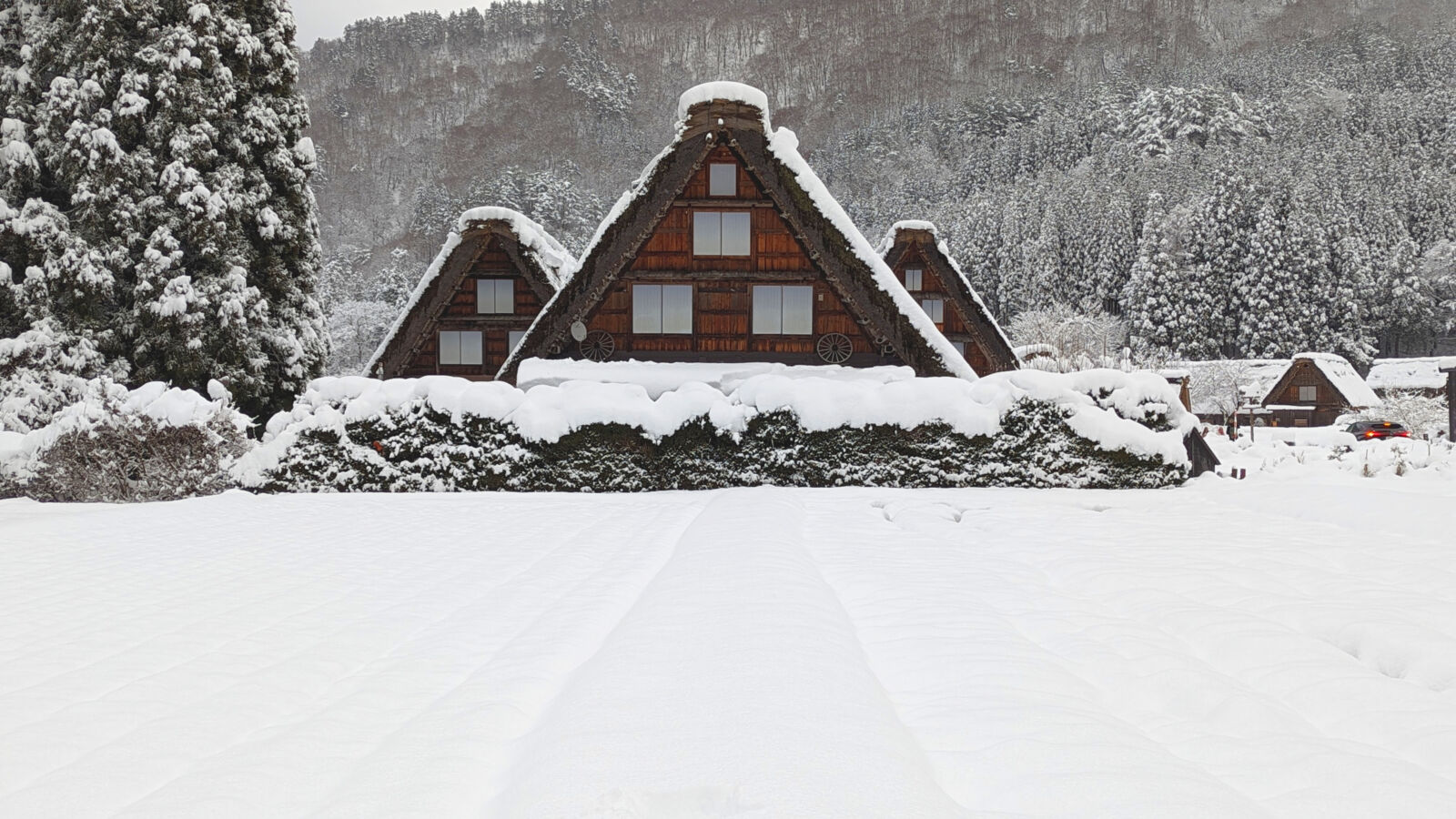
Easily accessible via Takayama the villages of Shirakawa-go and Gokayama were inscribed on the World Heritage list in 1995. Actually consisting of three villages, they are known for their distinctive 'gassho-style' thatch-roofed houses set in a beautiful alpine setting of rice fields and high mountains above. World Heritage-listing has ensured that the villages are hugely popular with both domestic and international tourists but don't let that put you off. The villages are well-worth visiting and walking away for the central area of the main village of Ogimachi, will quickly have you unencumbered by other visitors. If you really want to avoid the crowds, consider heading to the other villages of Suganuma and Ainokura. Much smaller than Ogimachi they are also far less visited and offer a peaceful experience of these important rural hamlets.
1-Day Tour from Nagoya: Hida Takayama and World Heritage Site Shirakawa-go
- Spots:
- Pick-up:
- Drop-off:
25 / KANAZAWA & THE SEA OF JAPAN
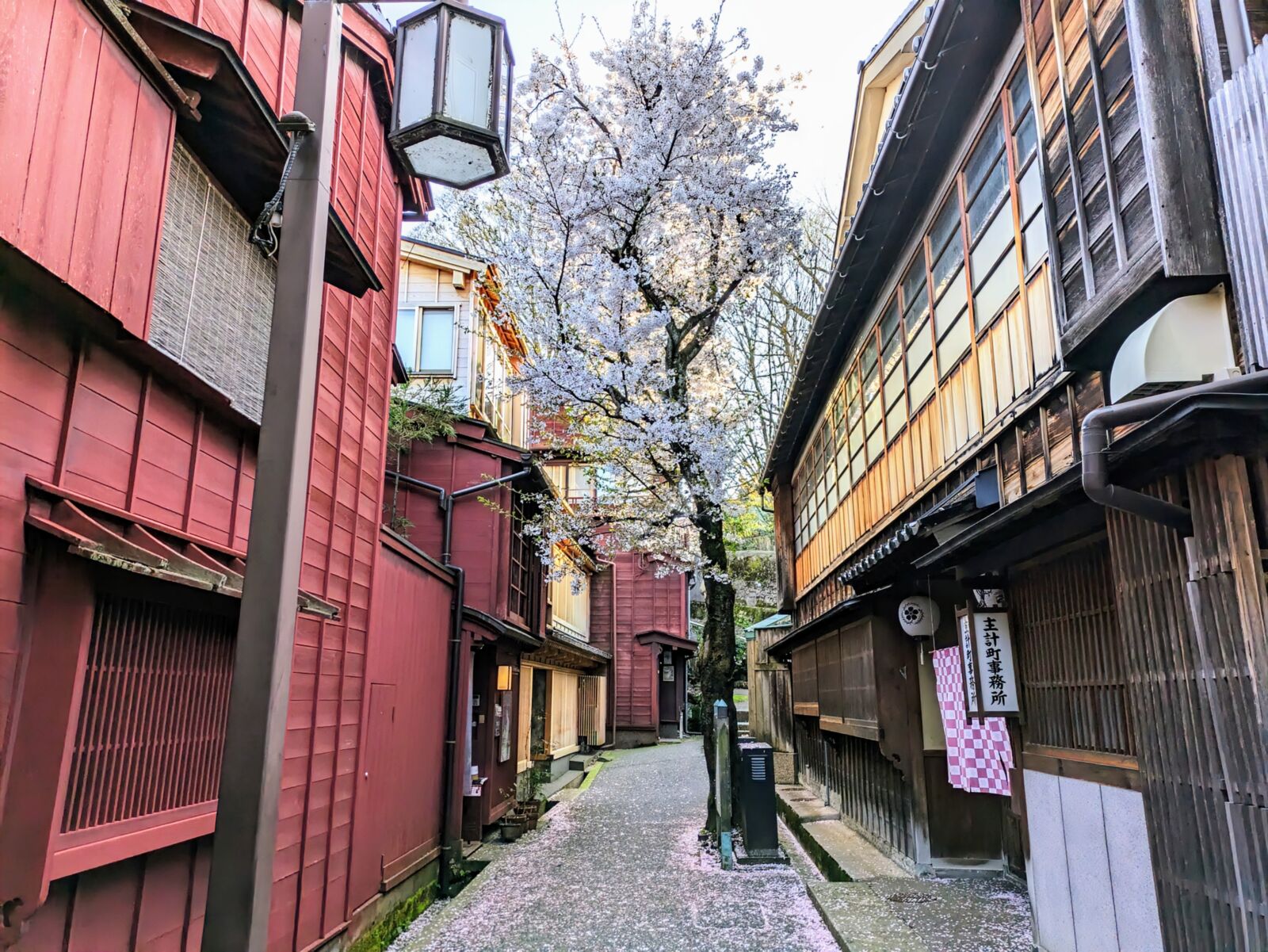
One of the bigger cities on the Sea of Japan coast - sometimes called the "forgotten Japan" for its unique character and preserved history - Kanazawa is often compared to Kyoto in terms of its great number of traditional districts. While it can't boast quite as extensive a history as Kyoto, it is much less crowded and you may find that you enjoy your time here more with less people in your way. Amongst its best attractions are the Kenrokuen Garden, the Higashi Chaya Geisha District, the Nagamachi Samurai District, and the Kanazawa Castle Grounds.
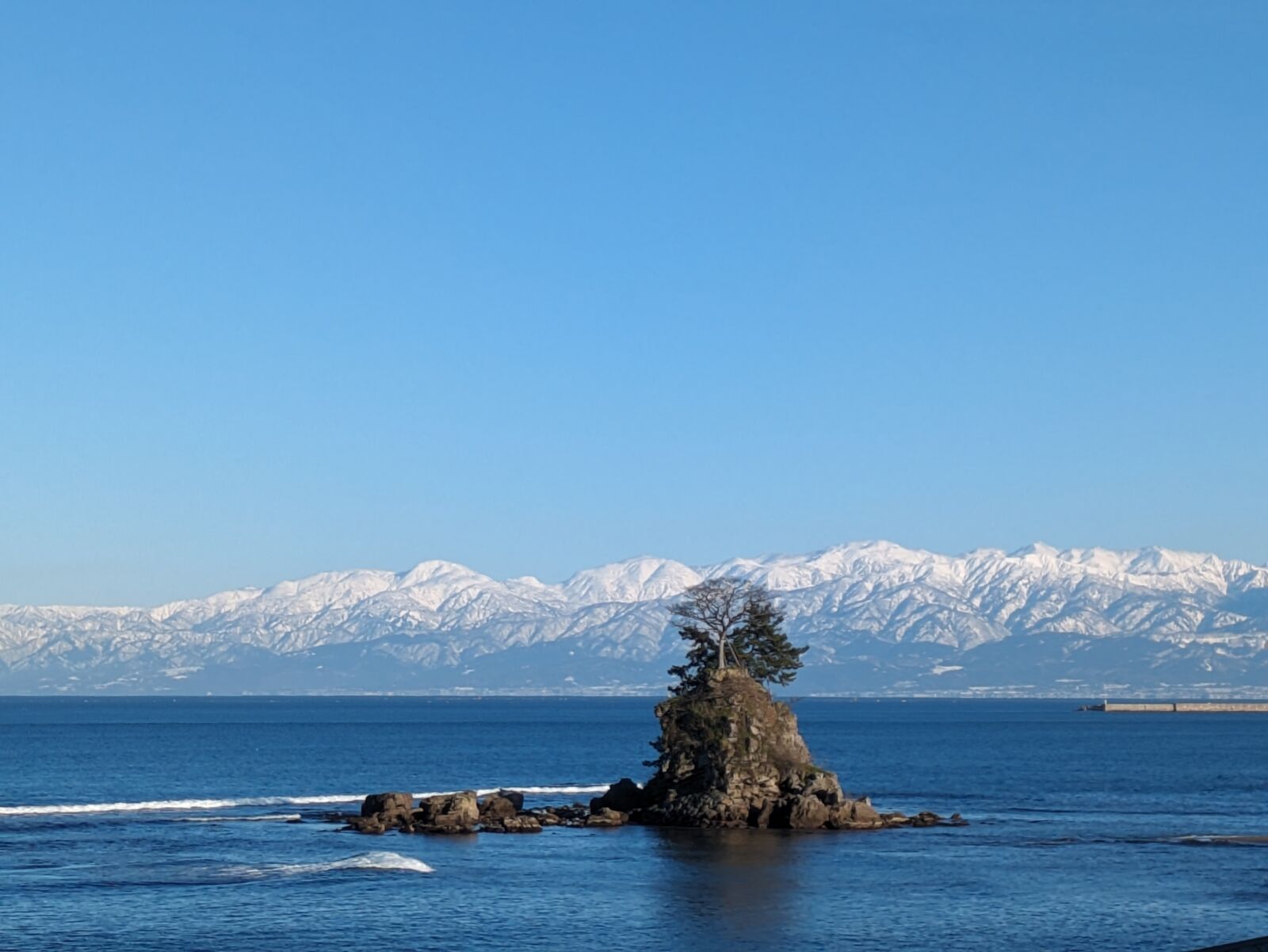
Nearby are a variety of other cities and towns to visit, including Toyama, Shirakawa-go, and Tateyama (the start of the Tateyama-Alpine Route from the Toyama side). With the ocean being so close, good seafood is in abundance around Kanazawa, and the Sea of Japan is famed for the flavor of its fish. Specialties also include various types of squid and crabs, and 'Kaisendon' (a mix of several kinds of seafood served on rice) is a must try when by the sea.
For those who have made the trip all the way from Matsumoto to Kanazawa, we aren't out of tours for you to enjoy yet! The Kanazawa area, including neighboring Toyama and Fukui, are fully serviced by our tours and charters, allowing for a customizable journey from Matsumoto (or Nagano) all the way out to the Sea of Japan using only our buses with no need for public transport. To learn more about what you can do in Kanazawa, see our 'Best Tours and Itineraries Around Kanazawa Page' for more details.
WHERE TO STAY WHEN IN MATSUMOTO?
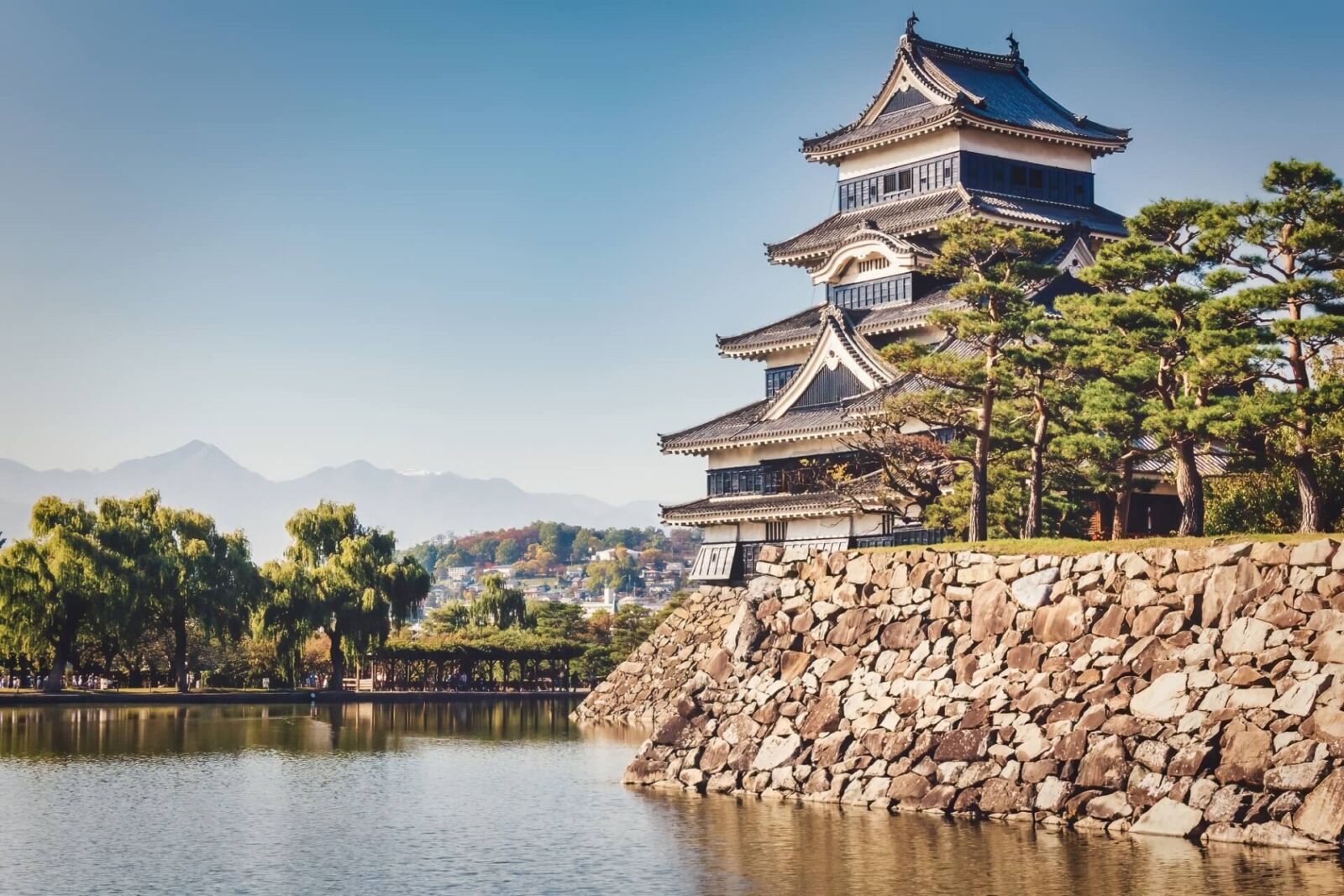
Visitors to Matsumoto have a good range of accommodation to choose from. Most options within the city are mid-sized / mid-range business hotels while in the surrounding areas, you have some excellent options including traditional hot spring towns of Asama Onsen and Hotaka Onsen-kyo in nearby Azumino. For travellers willing to go a little further and combine their exploration of Matsumoto with other engaging destinations, you can also find accommodation in Shiraone Onsen, Norikura Kogen, Kamikochi and of course Nagano City. Our 'Best Places to Stay in Matsumoto' page includes information about your options in all of those areas including accommodation listings. We hope it helps you find the best accommodation in Matsumoto.
HOW TO GET TO MATSUMOTO
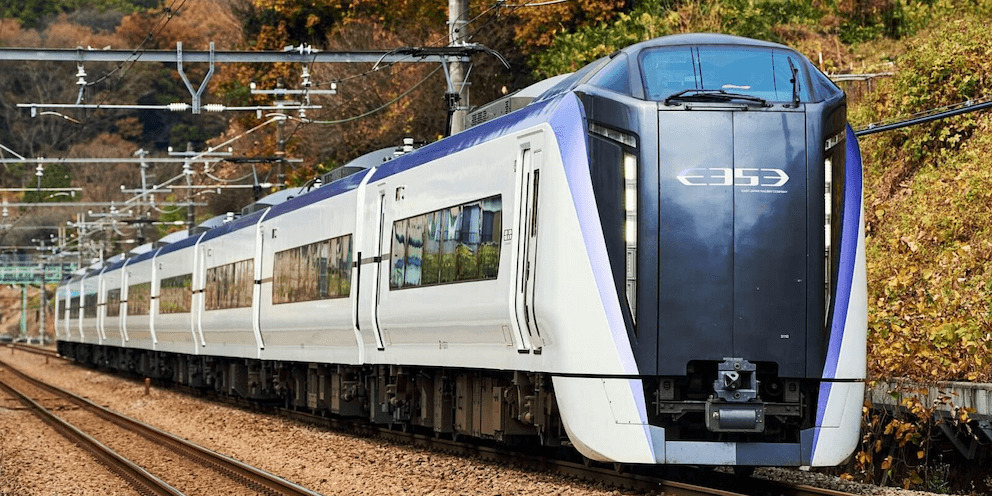
Matsumoto Station is located in the centre of the city, within 30-minutes walk of almost all popular attractions. Serviced by the Limited Express 'Azusa' service running to Shinjuku Station in Tokyo and the Limited Express 'Shinano' service running to Nagano and Nagoya, Matsumoto is easy to reach using the rail network. For more information, see our 'How To Get To Matsumoto' page.
TOURS AND CHARTERS FROM MATSUMOTO
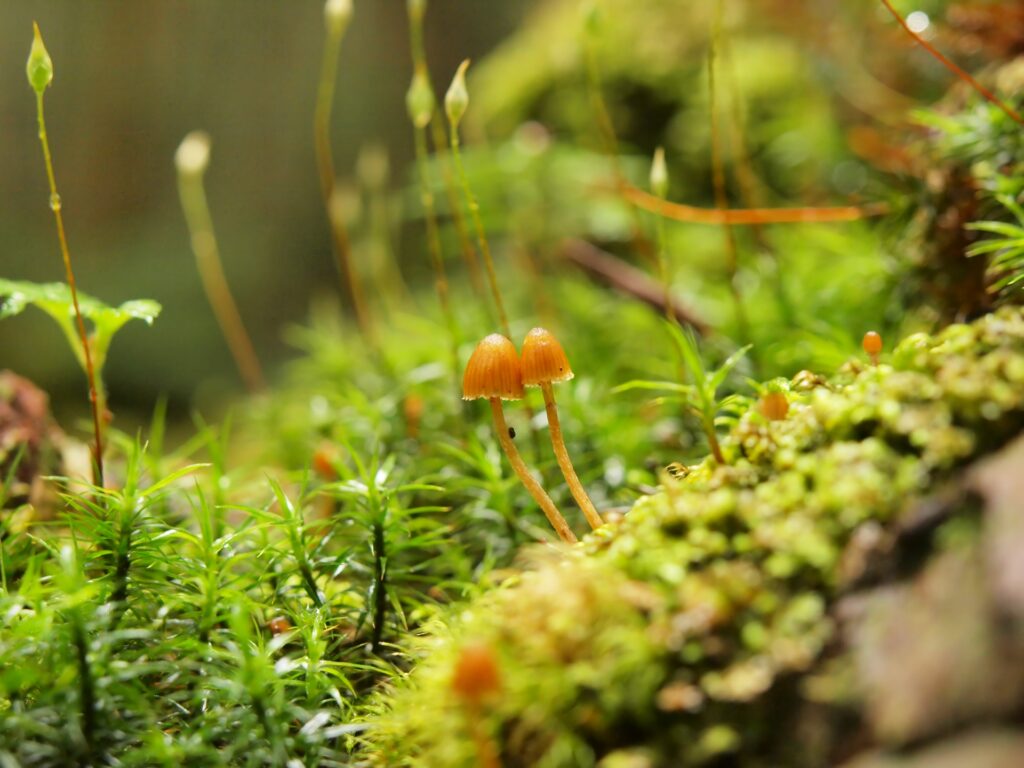
Based in Central Japan and operating all-year-round, we offer multiple highly entertaining group-tours from Matsumoto that are sure to please. All tours are led by locally-based guides and are formulated to show you the best of the region. Our tours are fun, interactive and family-friendly. For more information, or to book a tour, click on the banner or button below.
This must-do tour combines a visit to Matsumoto Castle, one of Japan's best remaining original castles, with a trip to the gem of the Japanese Alps, Kamikochi. Making what would otherwise be a complicated journey easy, or tour vehicles will be with you the whole day to simplify the process. Operating from April until November, any season is a good time to come and see what this dynamic city has to offer.
[START FROM NAGANO/MATSUMOTO] Private Kamikochi Tour
- Spots:
- Pick-up:
- Drop-off:
For those looking for a more personalized experience, our private tour of Kamikochi will give you a similar itinerary to the above group tour but with the whole day just for your group! Perfect for larger groups and those who want to move at their own pace, you will have the undivided attention of your guide.
Recommended
1-Day Tour from Nagano and Matsumoto: Experience Matsumoto Castle and Narai-juku
- Spots:
- Pick-up:
- Drop-off:
In winter when Kamikochi is not open for tours, there is a another option for those who want to visit Matsumoto Castle on a tour - our tour of Matsumoto and Narai-juku! While the morning starts out the same as the tour of Kamikochi with a guided walk at Matsumoto Castle, the afternoon includes a trip to Japan's longest post town, Narai-juku. Open year round, each season has its own charm and provides a good reason to visit whenever you are here.
Recommended
1-Day Tour from Nagano and Matsumoto: Step into the Past on the Nakasendo
- Spots:
- Pick-up:
- Drop-off:
Head to the historic Nakasendo Trail in the southern regions of the Kiso Valley on this walking tour. With an 8km walk between the well preserved towns of Tsumago and Magome, you will get a chance to stretch your legs on this ancient road and take in the beautiful nature of central Japan. With pick up from Nagano and Matsumoto, it is easy to join this tour no matter where you are in the region.
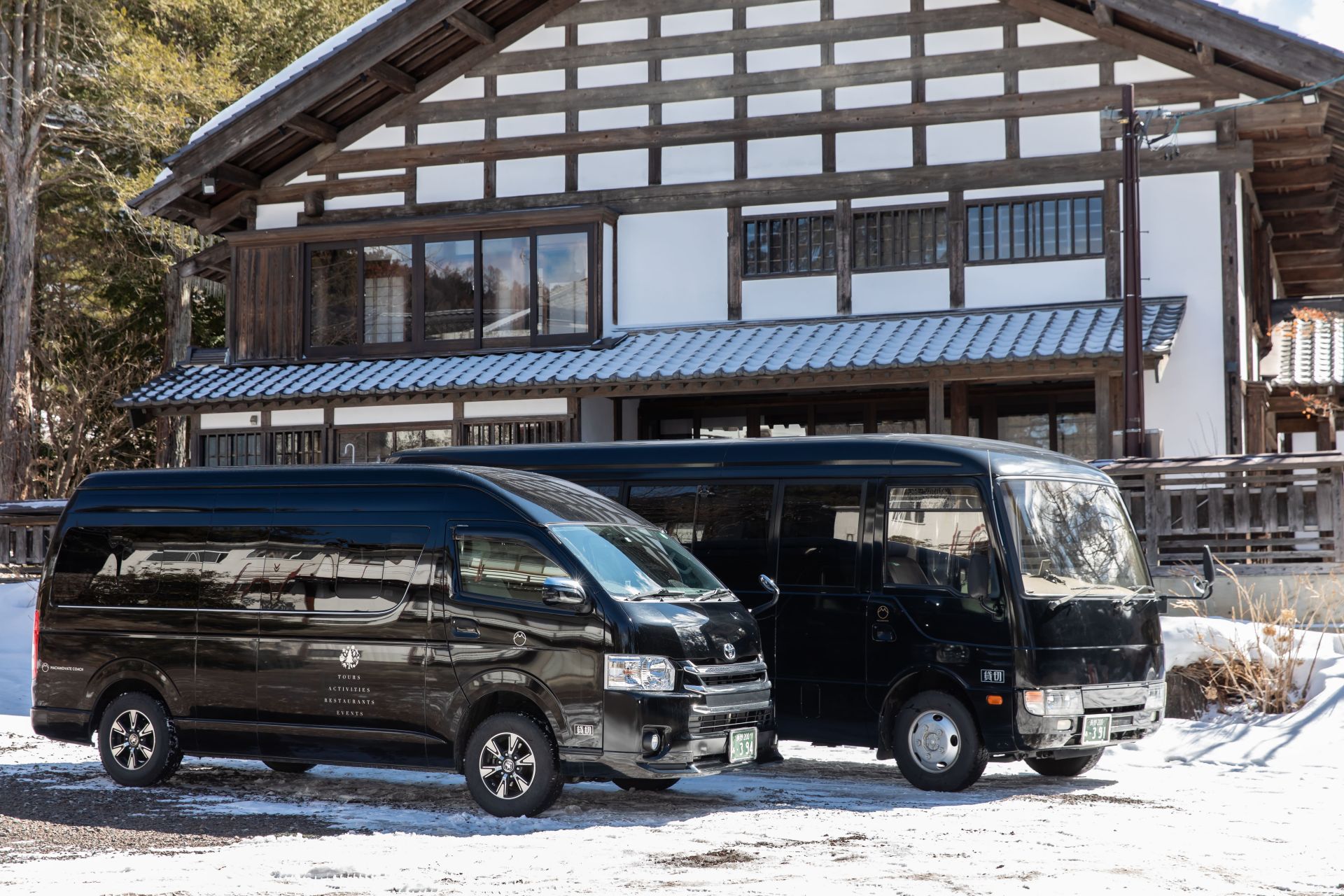
Of course, we also offer private tours and transport in and around the Matsumoto/Kamikochi area, and other regional destinations. Our drivers and vehicles are fully certified, allowing us to transport you to and from your preferred destinations in combination with any activity that suits your schedule. All vehicles are well-maintained and in good condition, allowing you to relax and enjoy your ride to wherever you are going.
We can arrange both private tours with an English-speaking guide or a private charter, including a private vehicle and driver but without a guide. We’d love to be part of your adventure in Central Japan and help you discover even more!
FREQUENTLY ASKED QUESTIONS
Q: How long does it take to reach Matsumoto from Tokyo?
A: For those visiting by train, the journey to Matsumoto from Shinjuku Station is roughly 2.5 hours on the Azusa Express. By highway bus, or by private car, the journey will take around 3 hours on the Chuo Expressway, assuming that traffic is clear.
Q: What kind of accommodation is available in Matsumoto?
A: Matsumoto has a great variety of accommodation types available, including business hotels, ryokan with natural hot springs, hostels, high-class resorts, and completely detached homes that can be rented for a short period.
Q: Is Matsumoto Station on a shinkansen (bullet train) line?
A: Matsumoto is not connected to any Shinkansen lines. The closest shinkansen station is Nagano Station, in Nagano City.
Q: What is the winter weather like in Matsumoto?
A: Winter in Matsumoto is cold but often sunny. Expect average daytime highs around 4-5 degrees Celsius, and lows of -6 degrees on most days. During a cold snap, the lowest temperature for a certain day may be -12 degrees or even colder.














